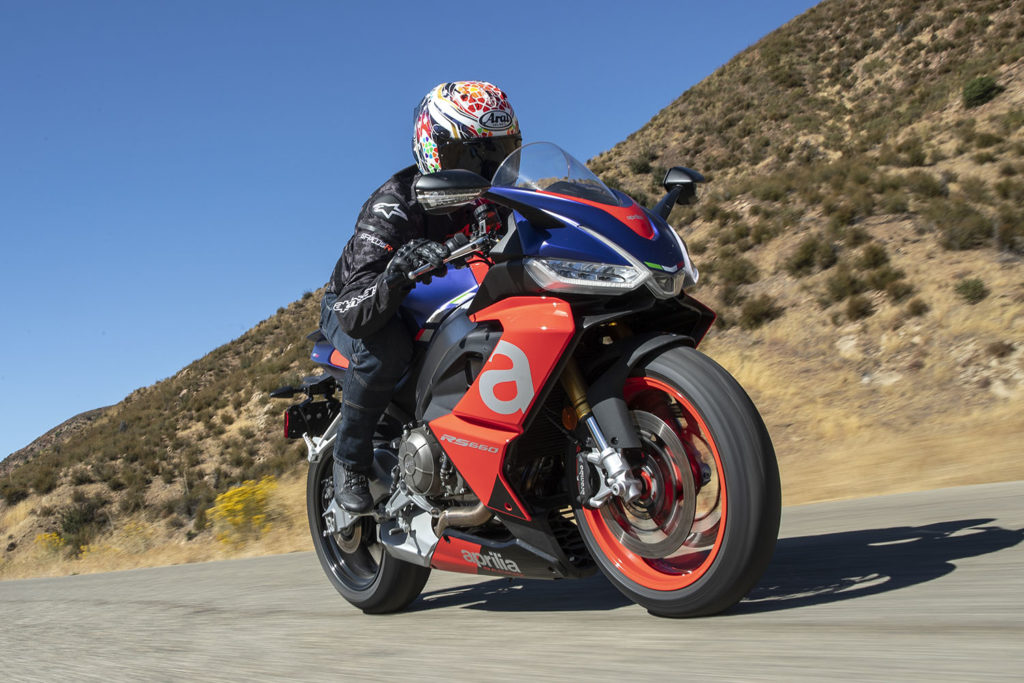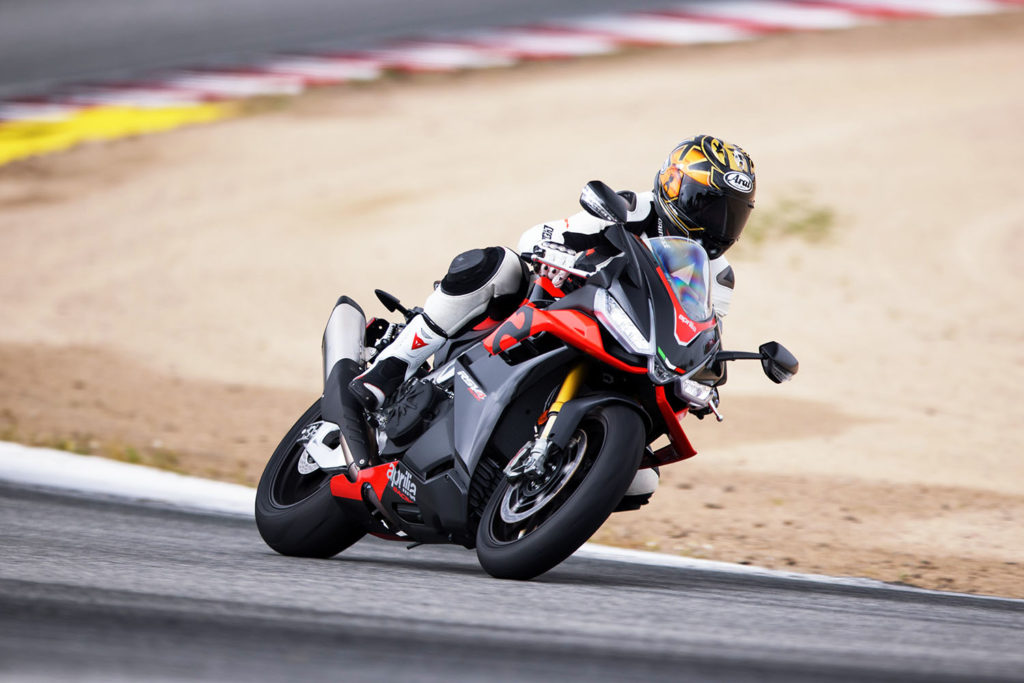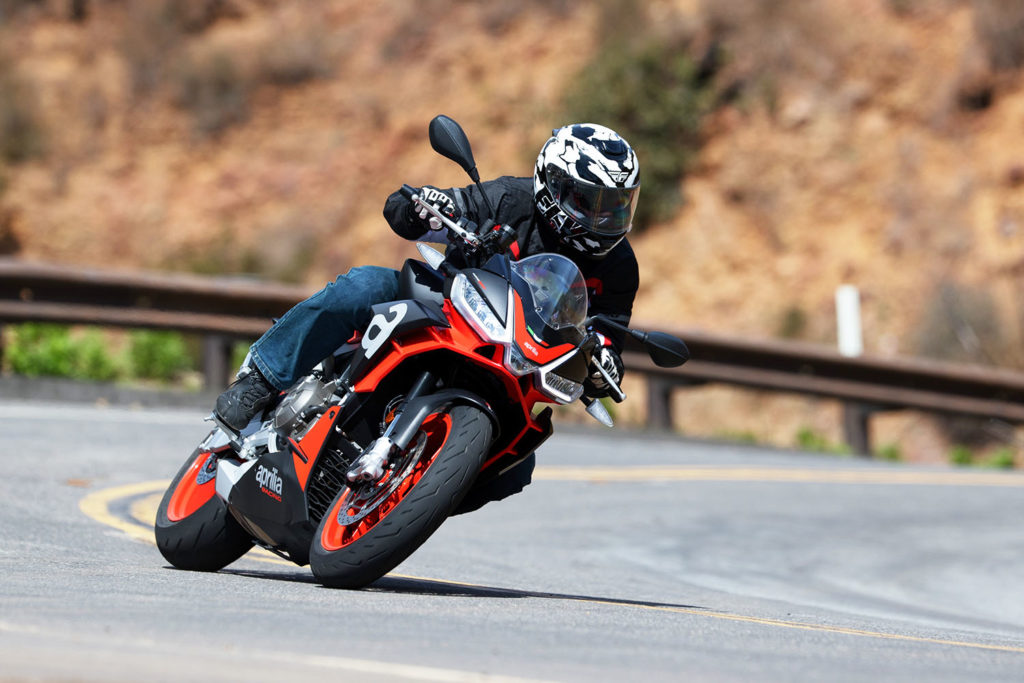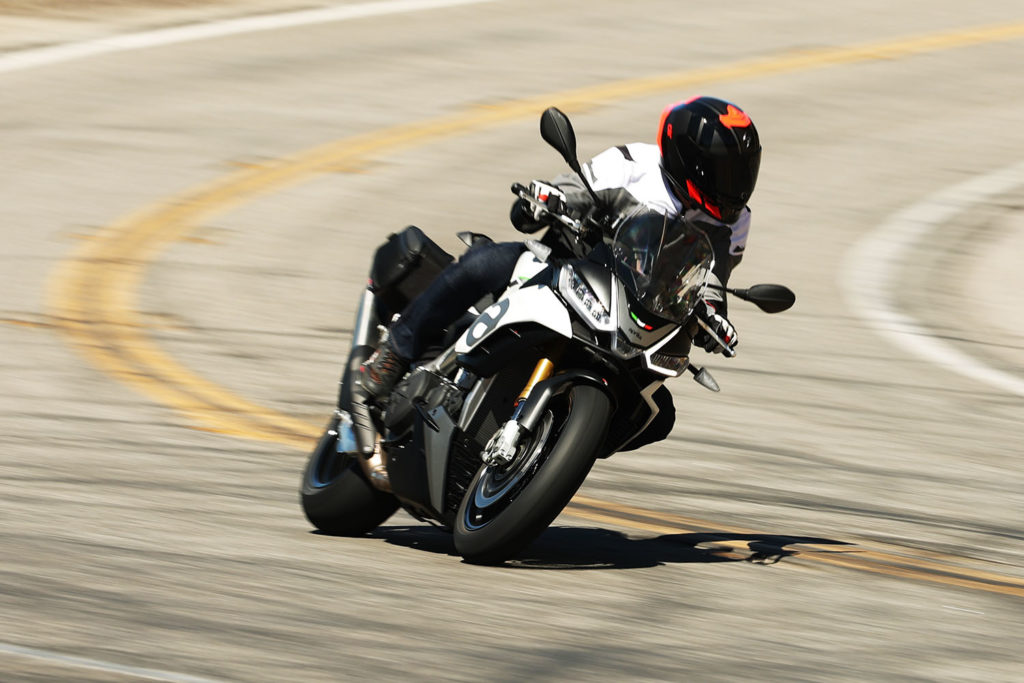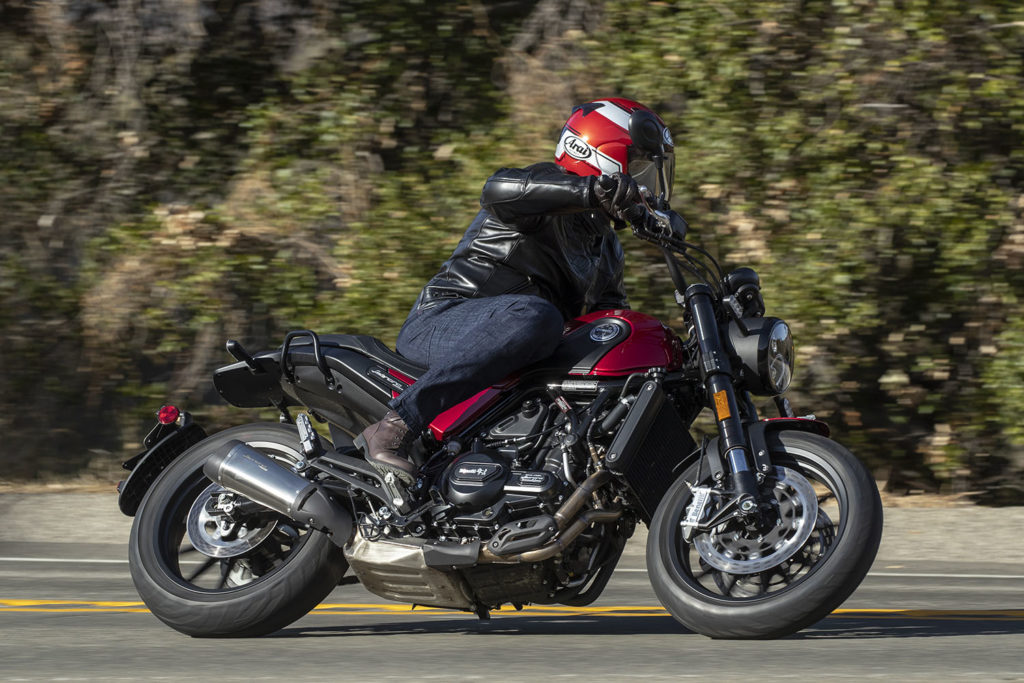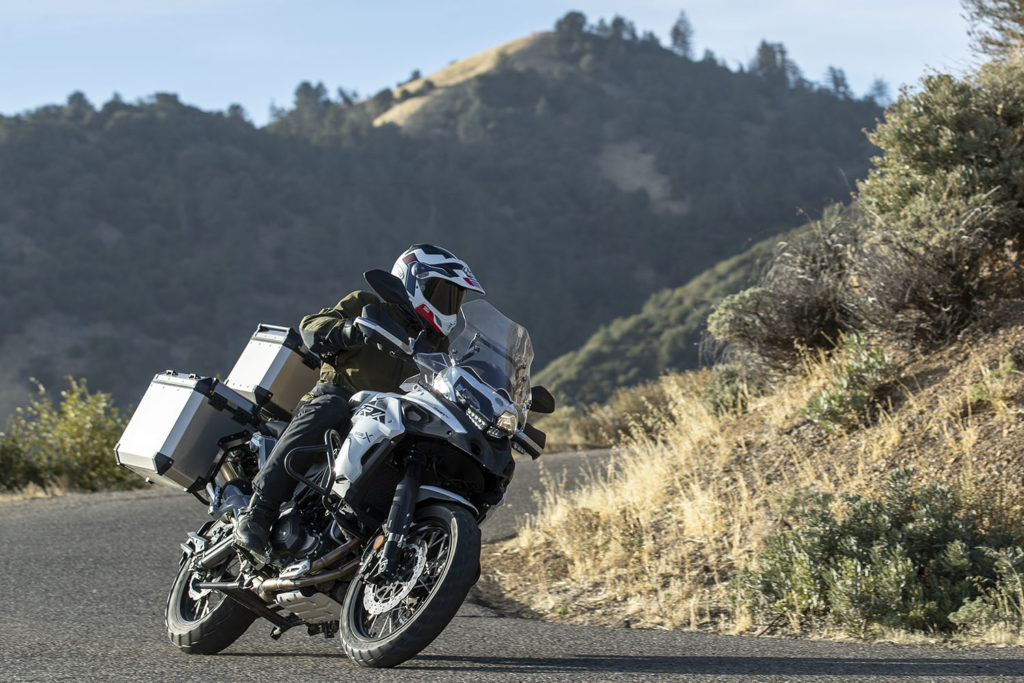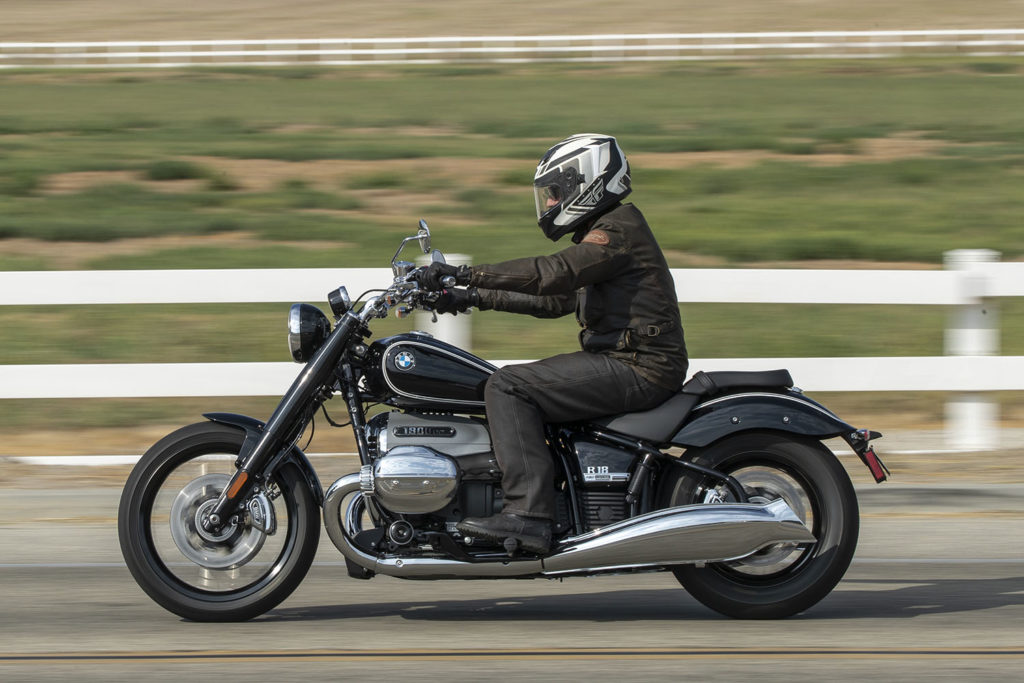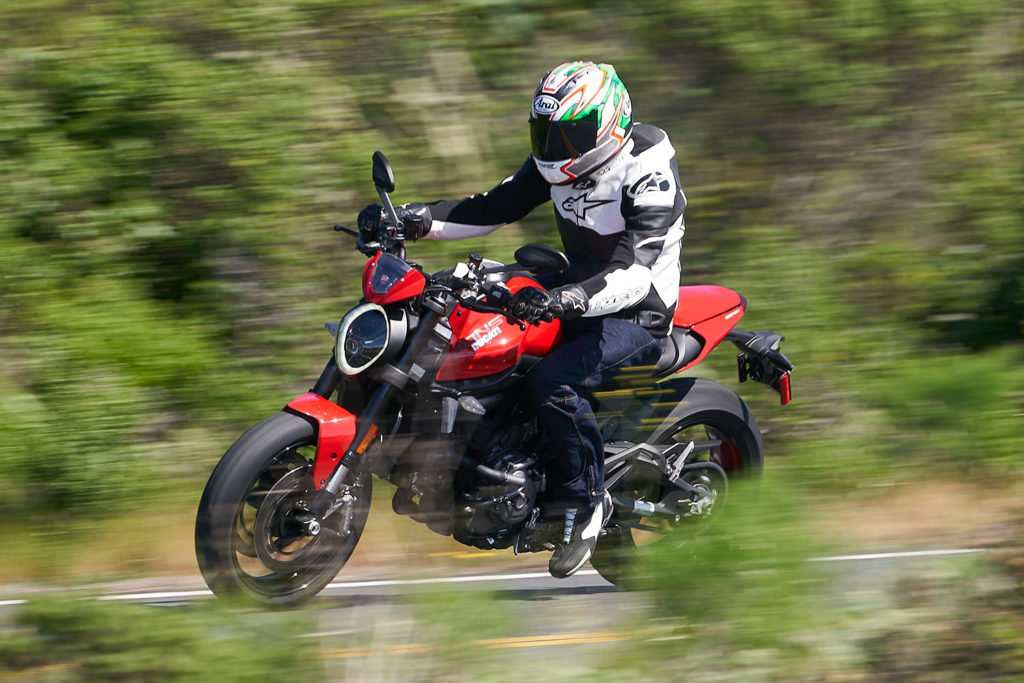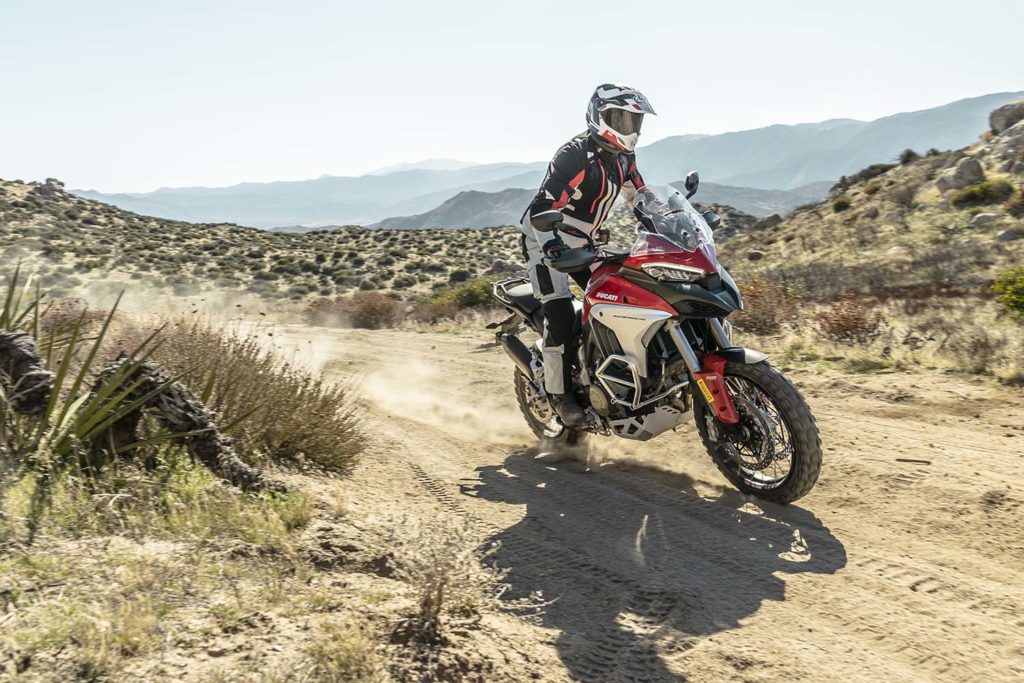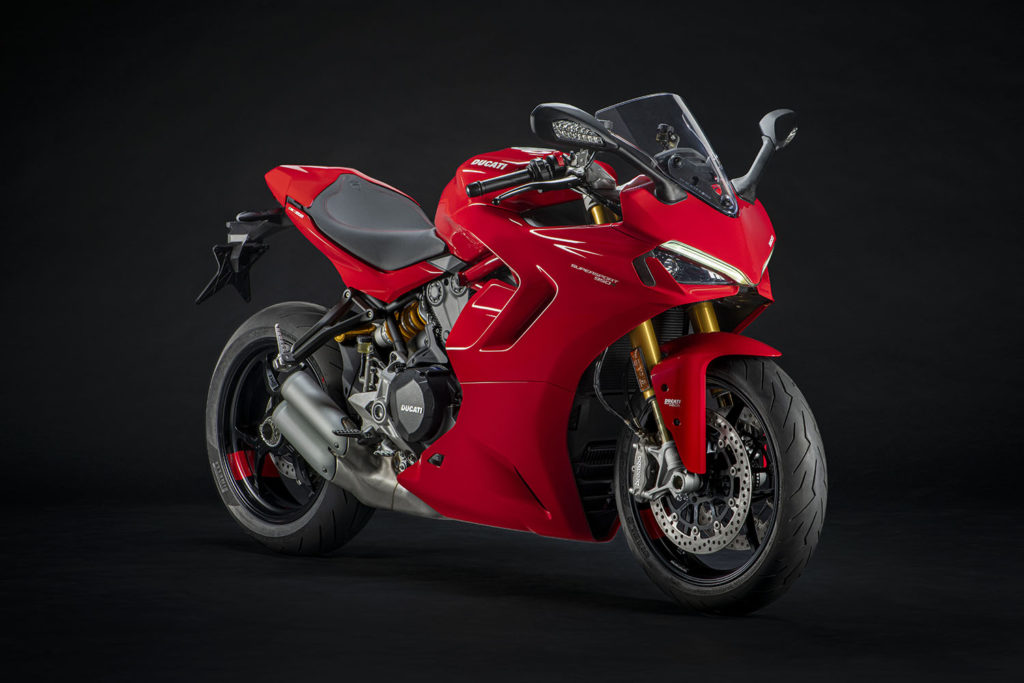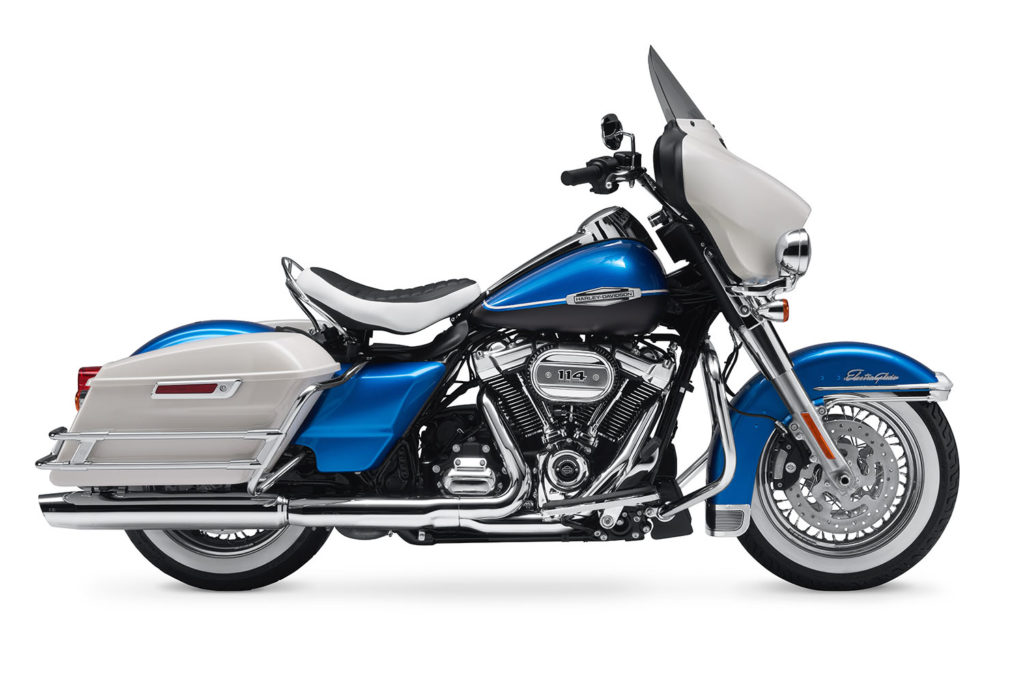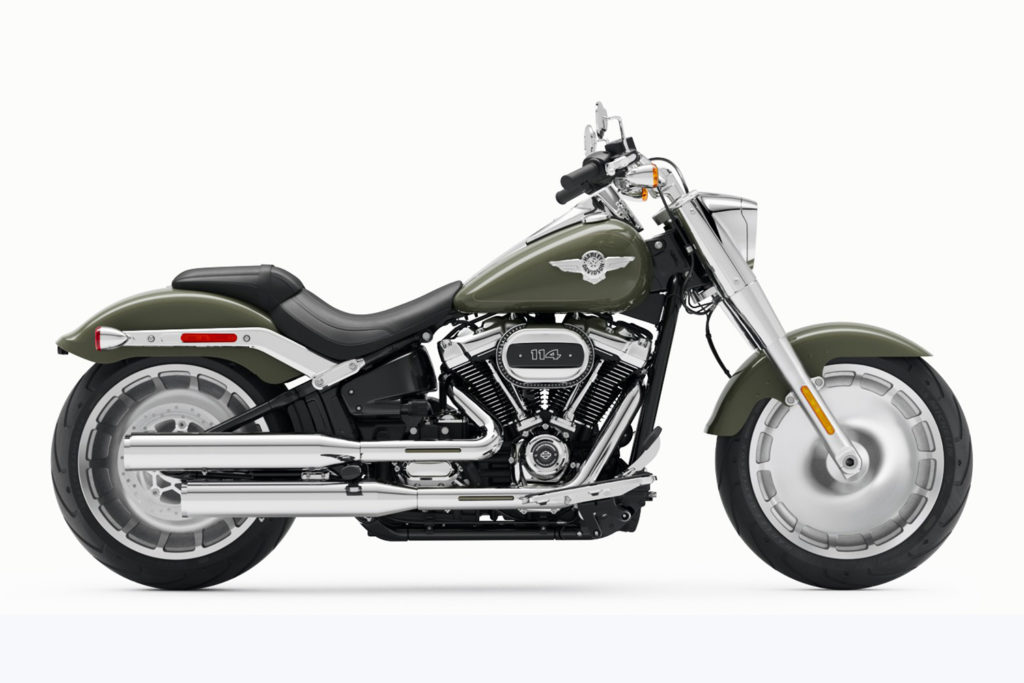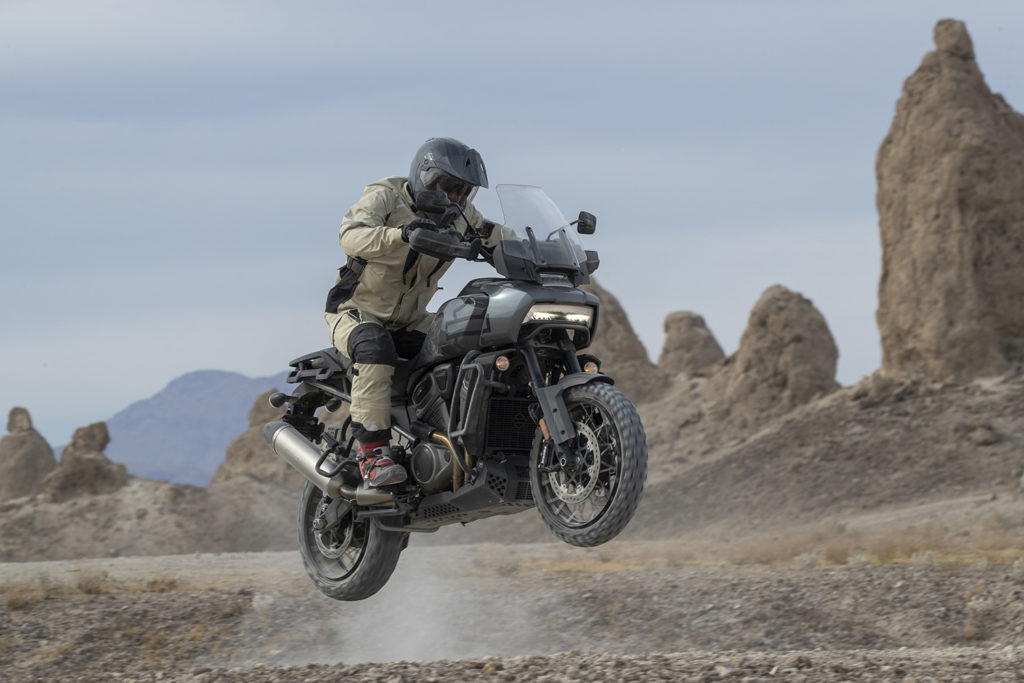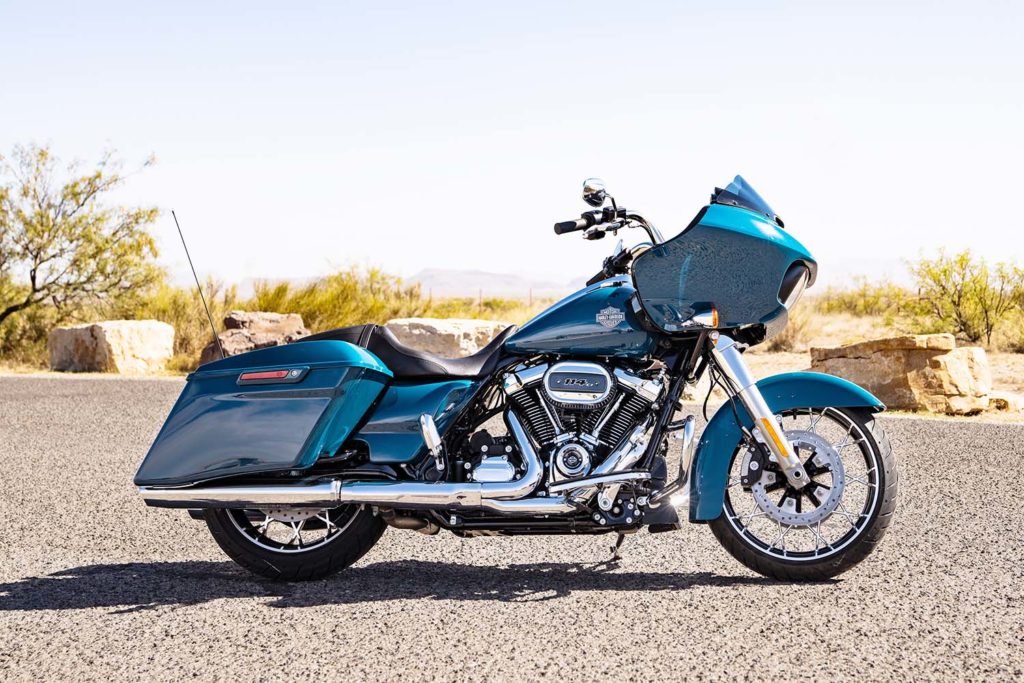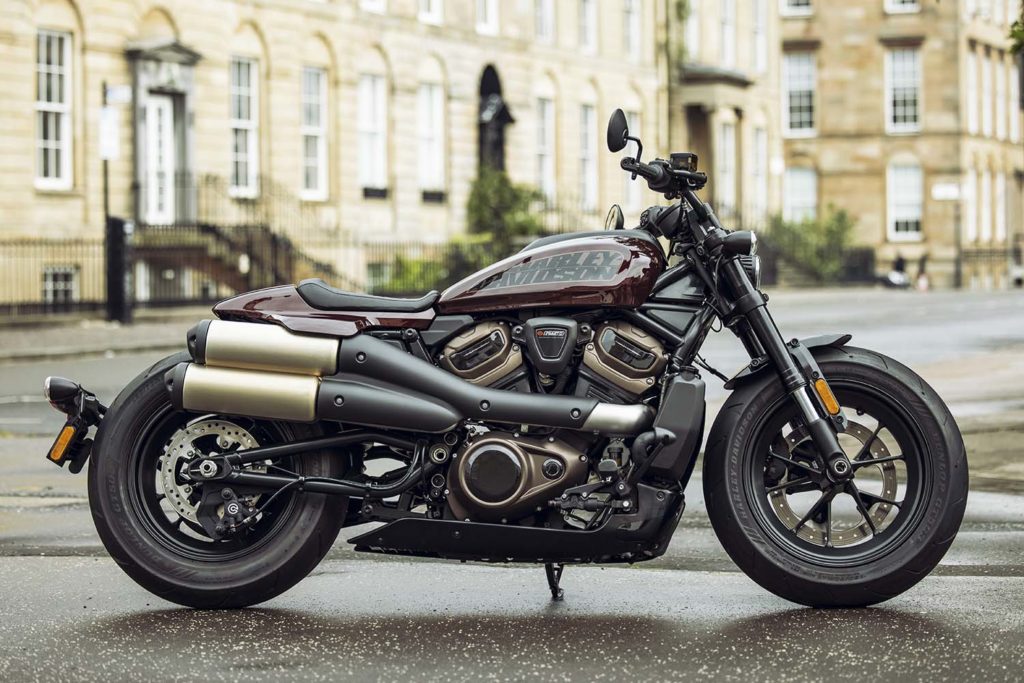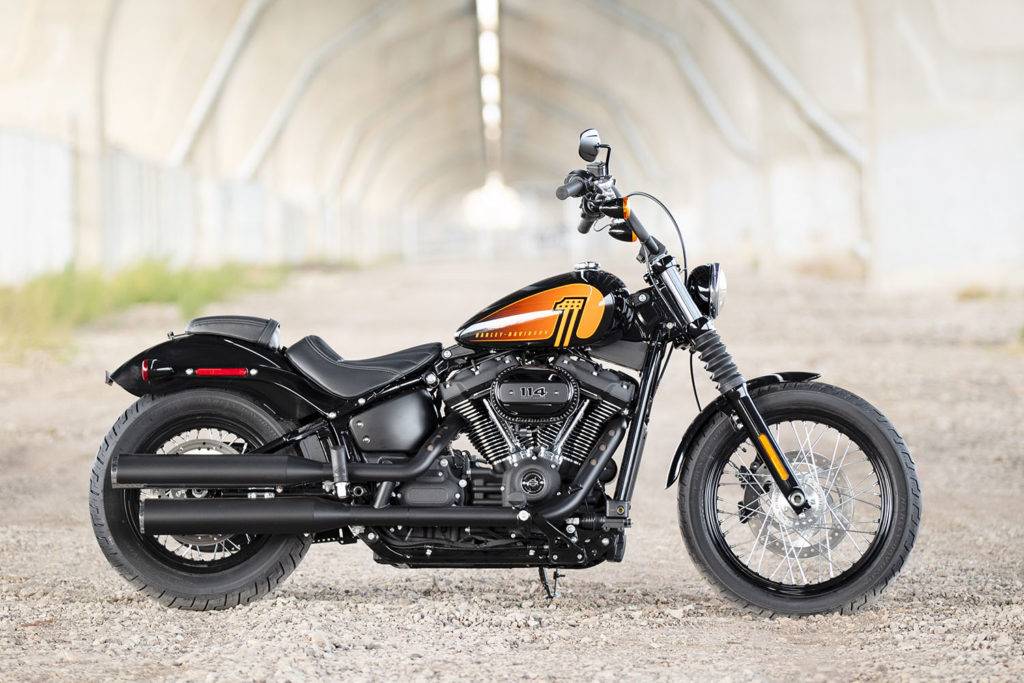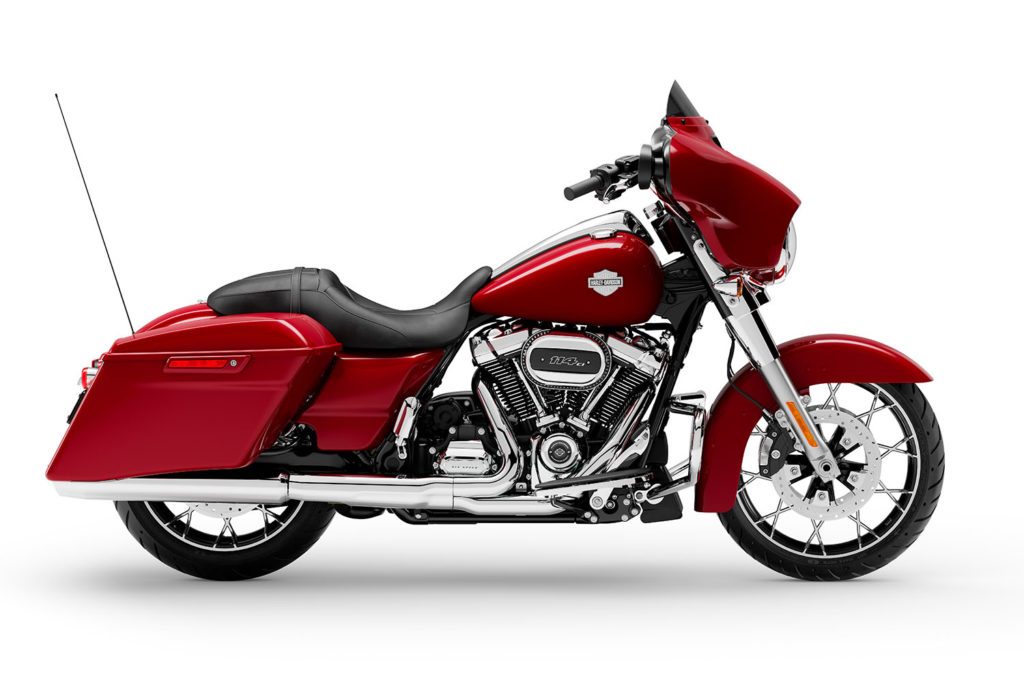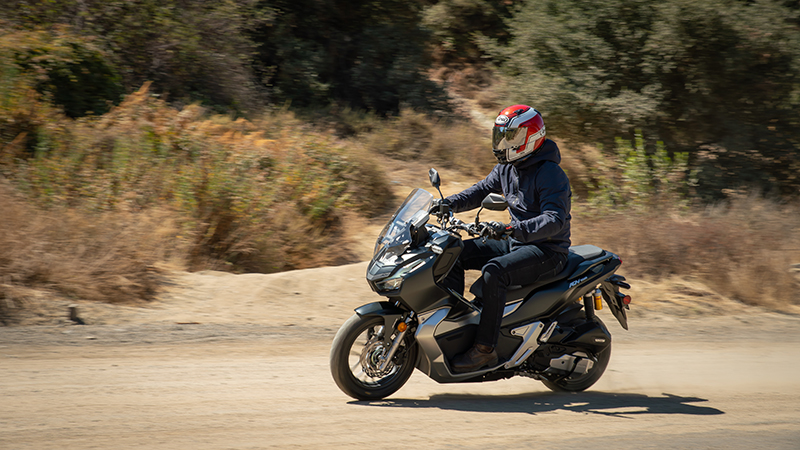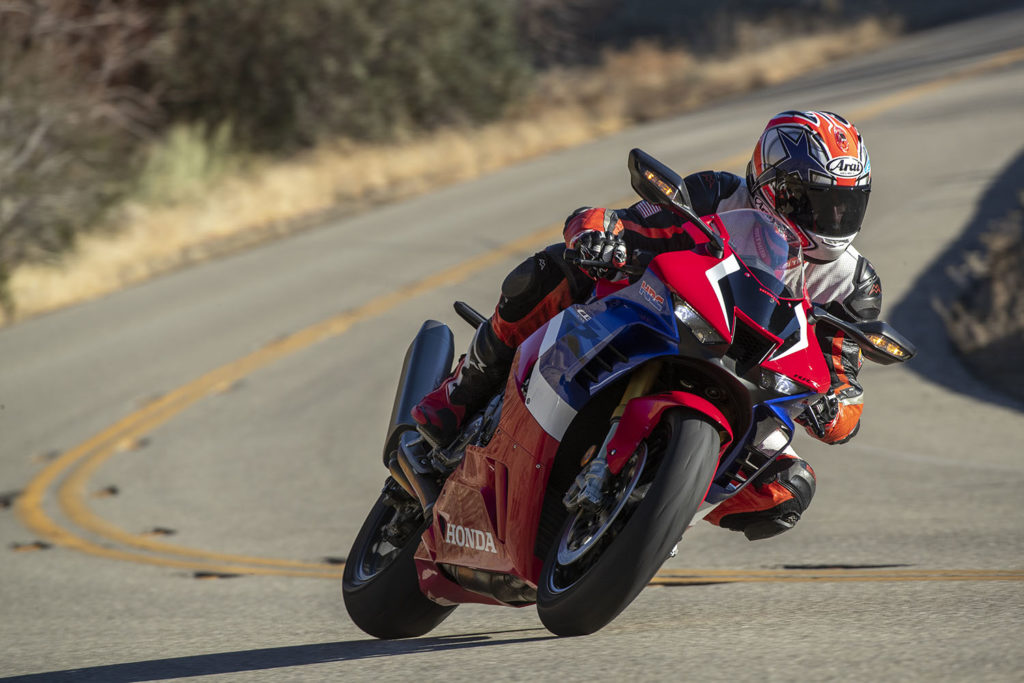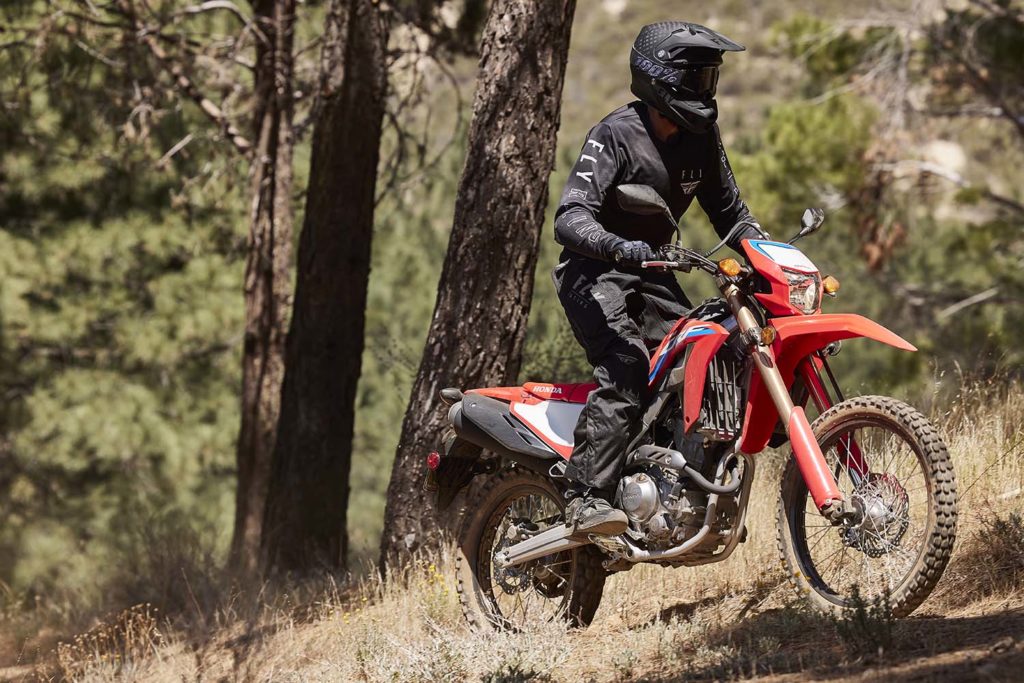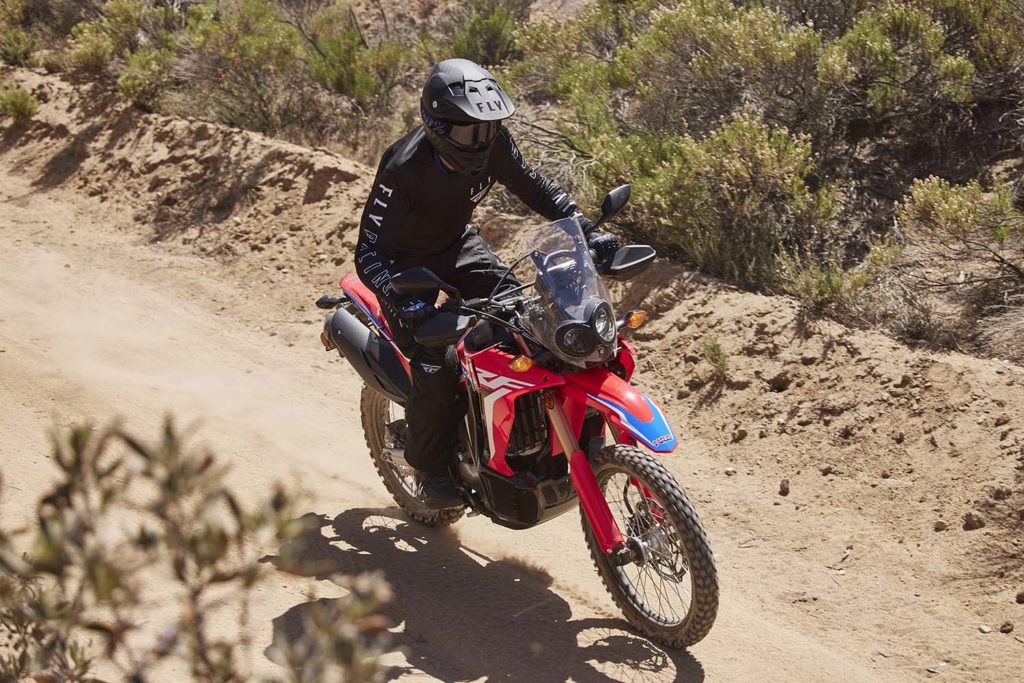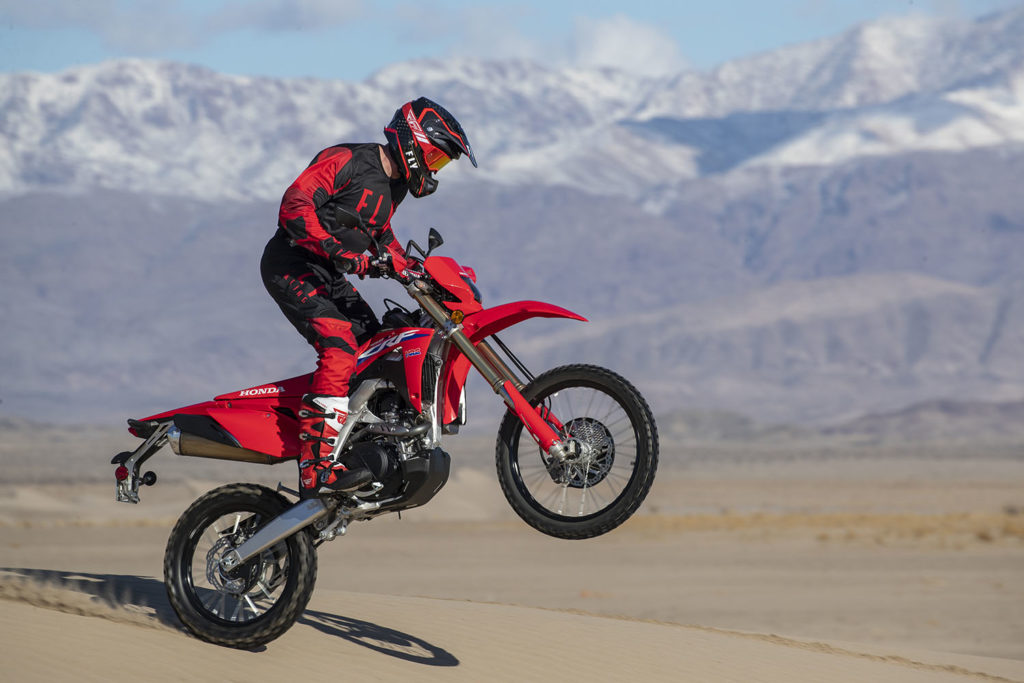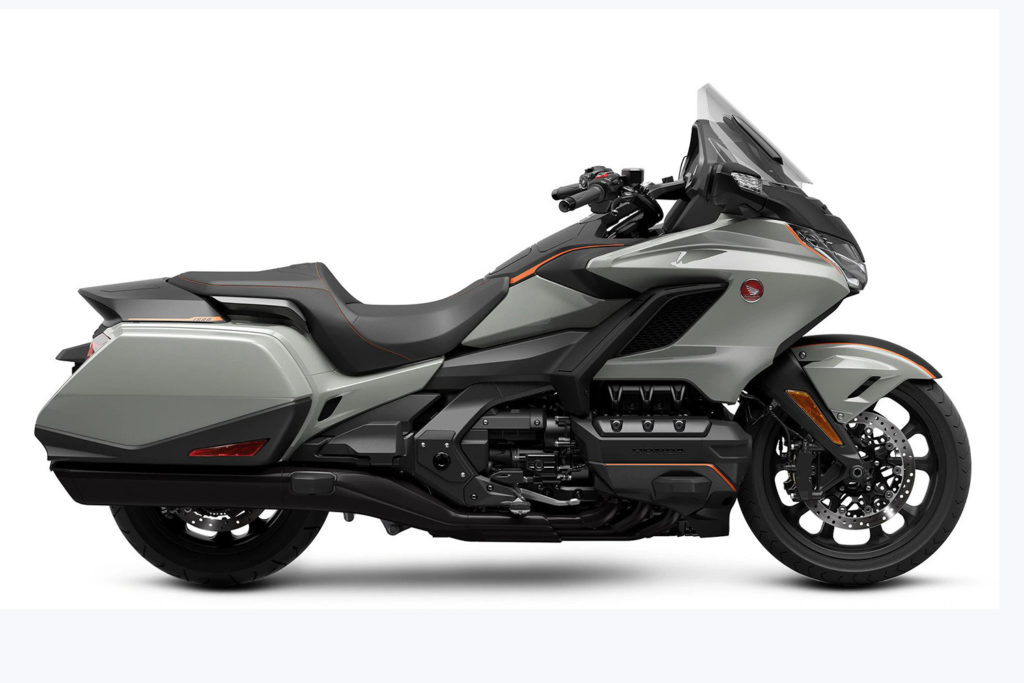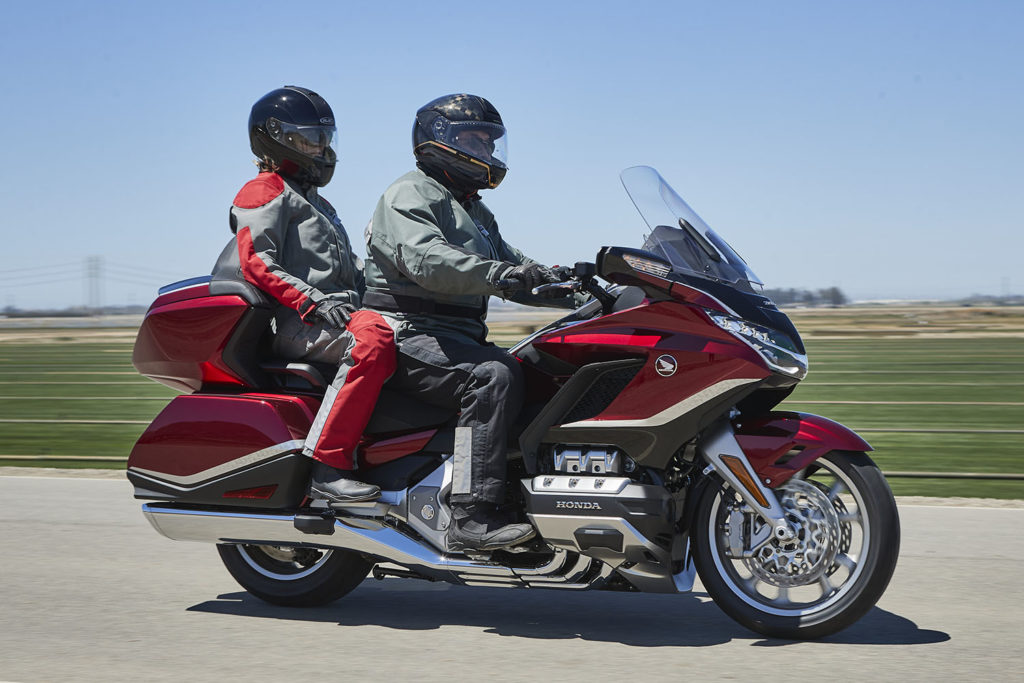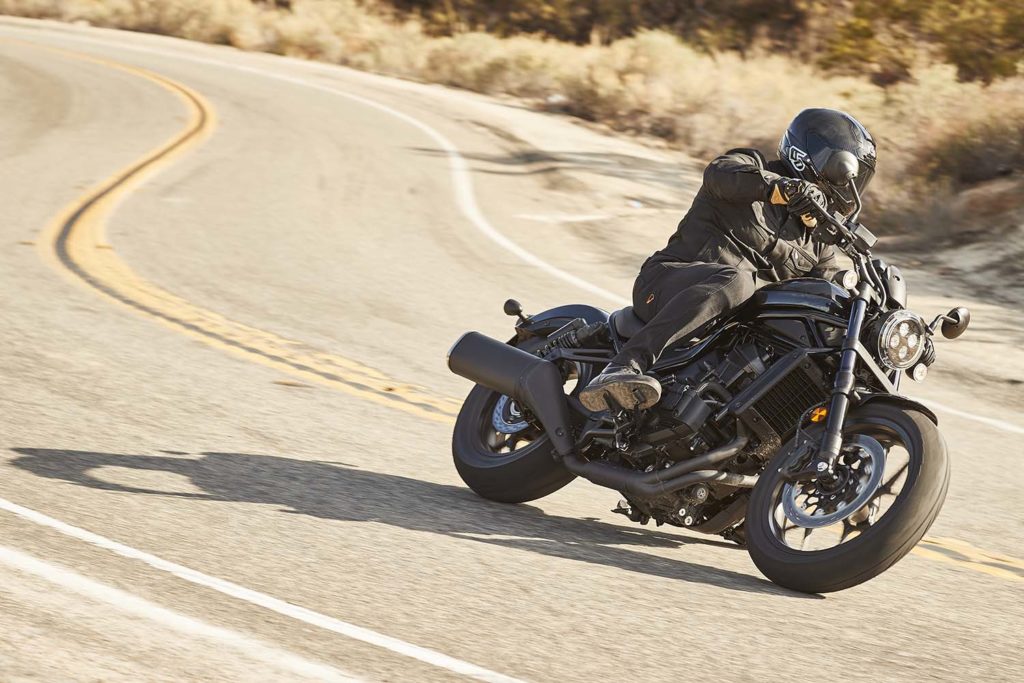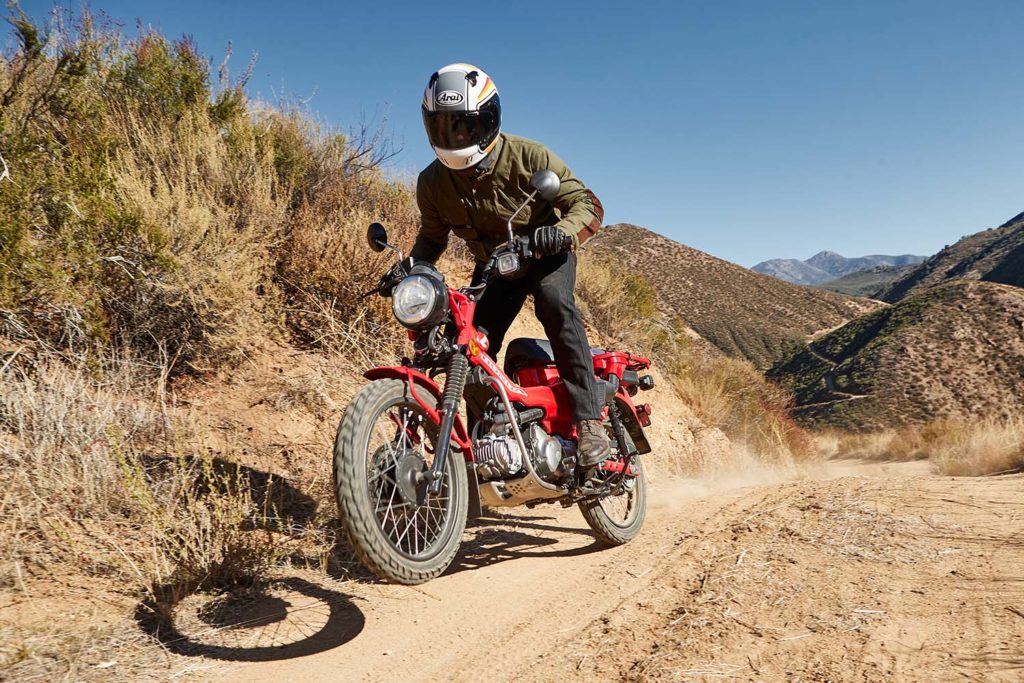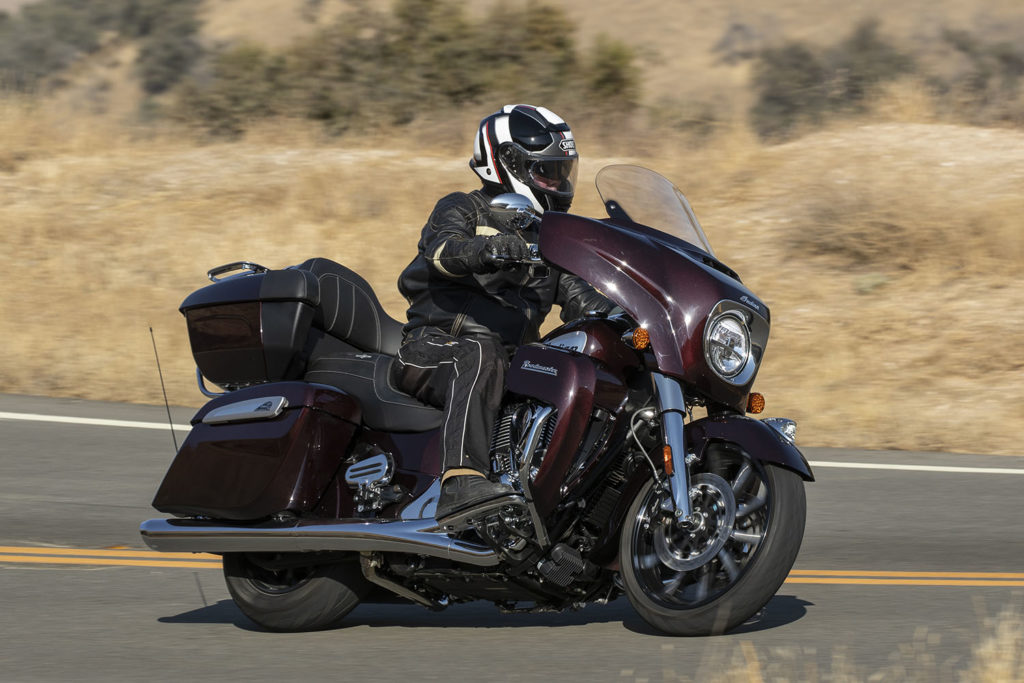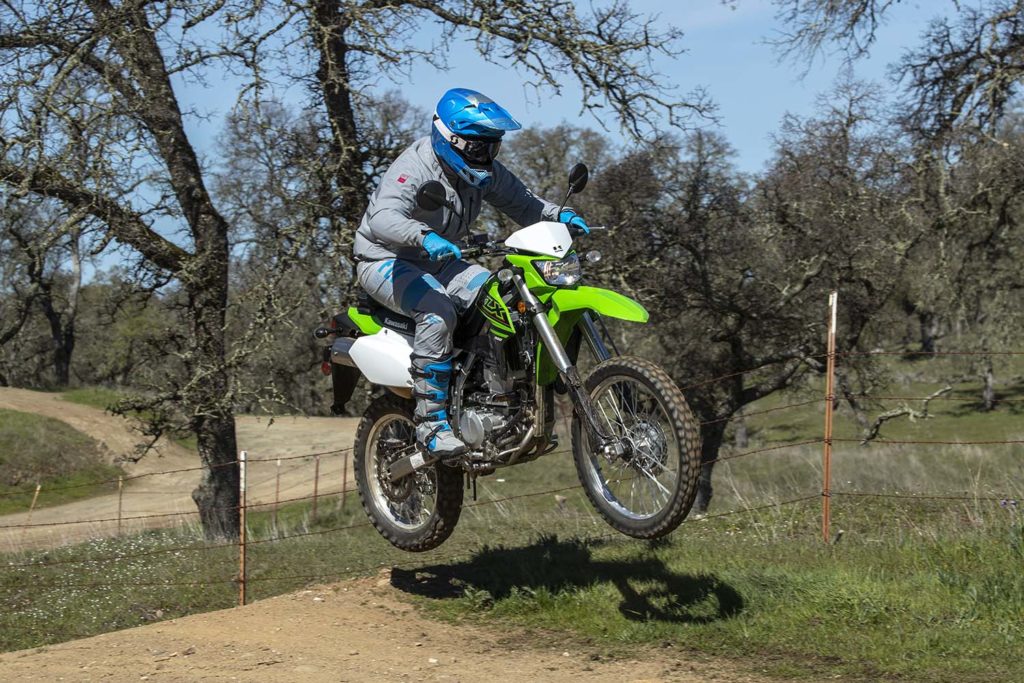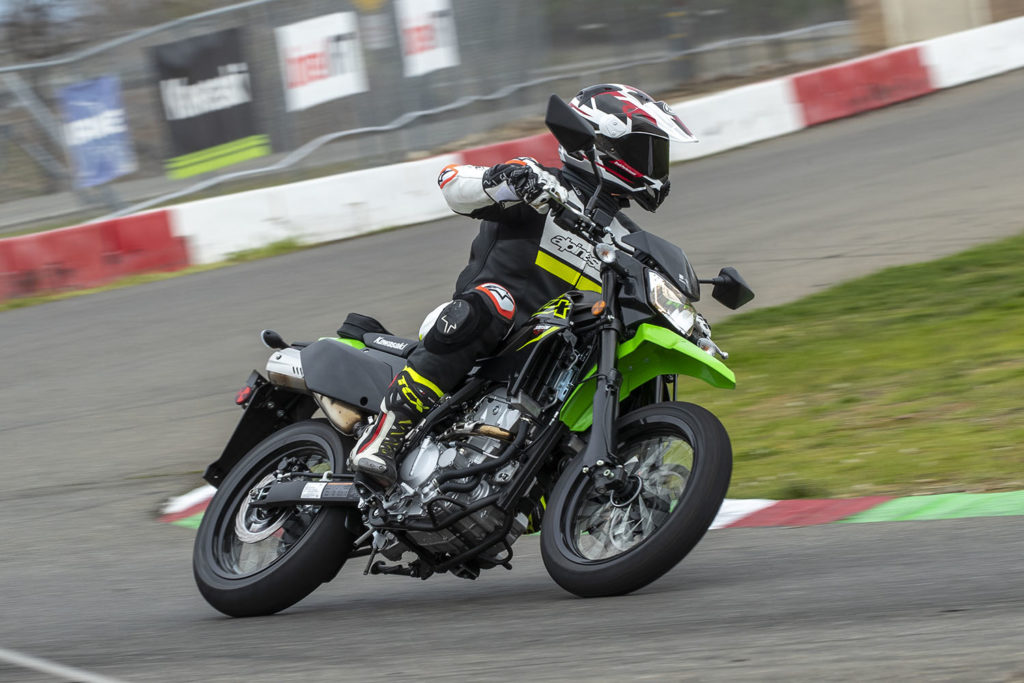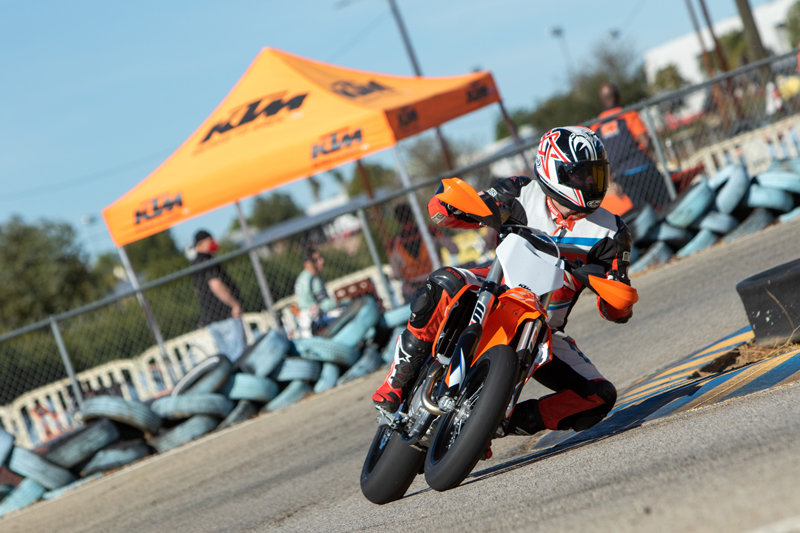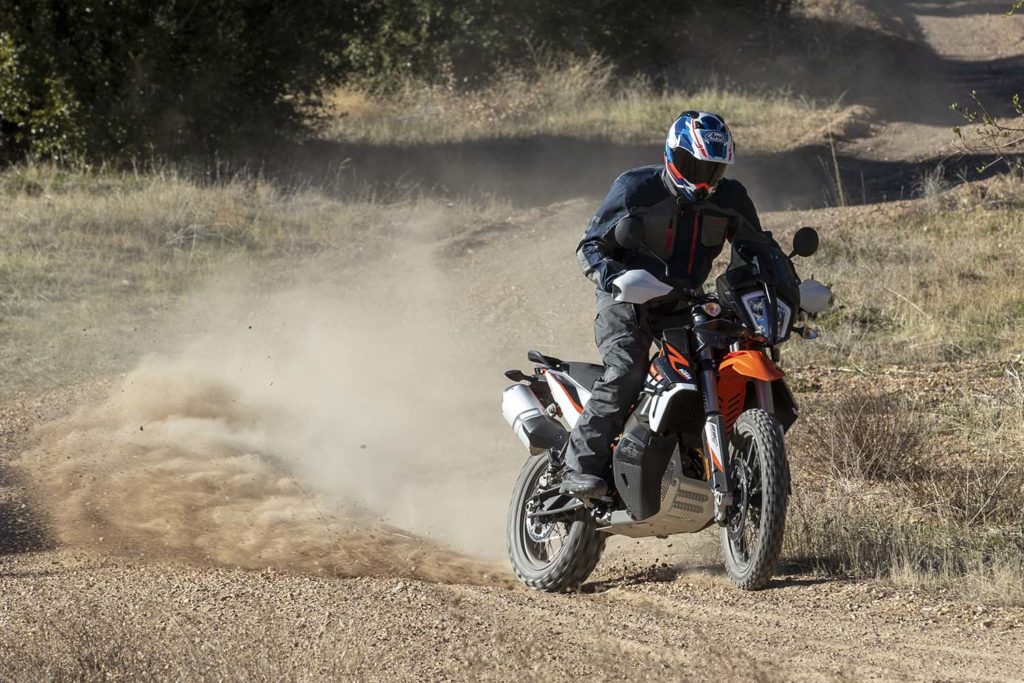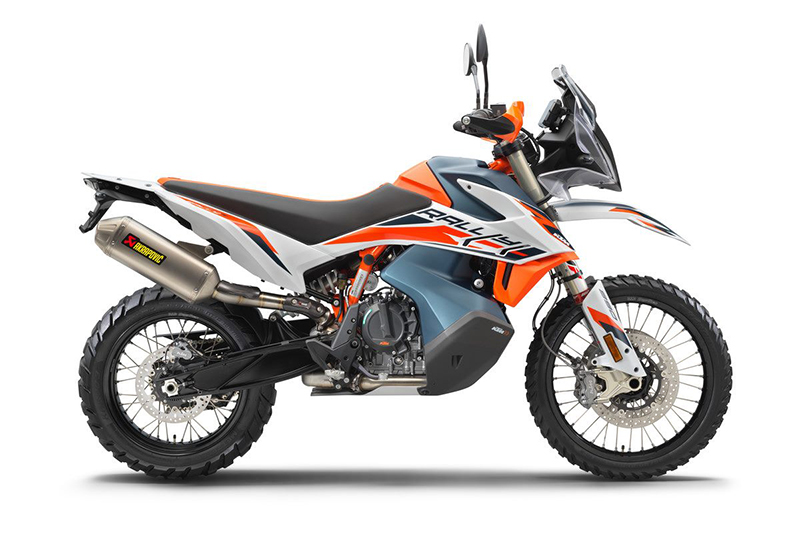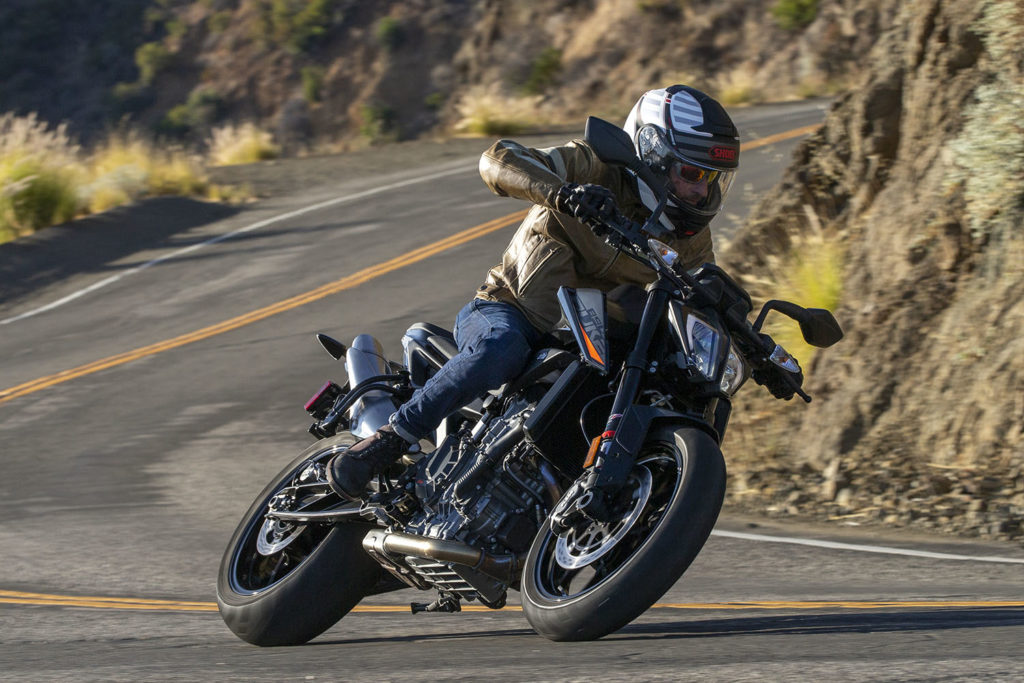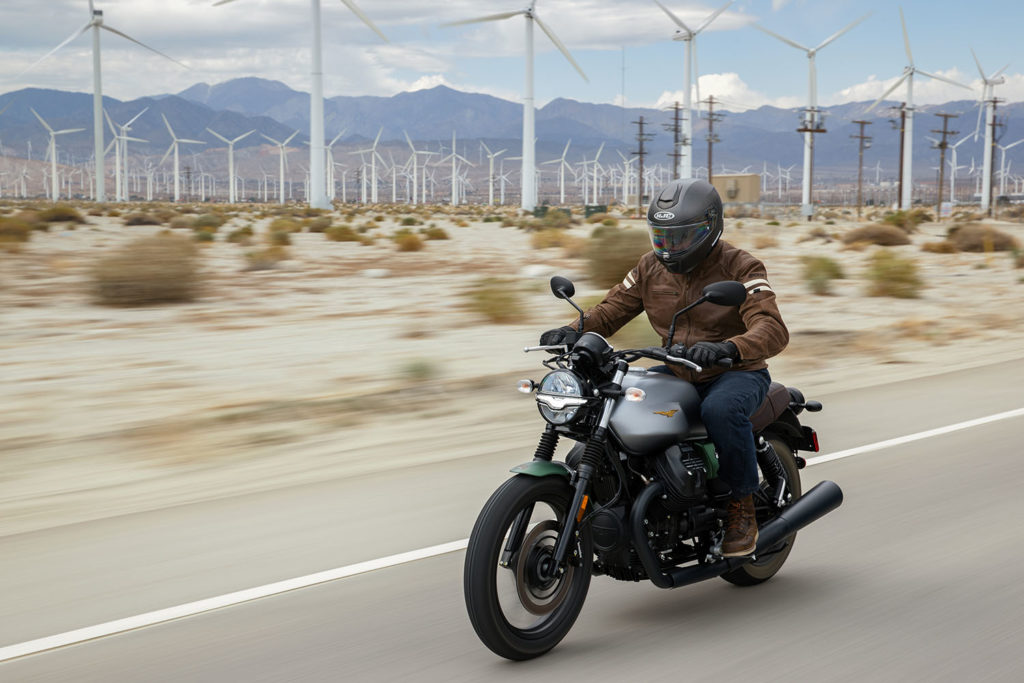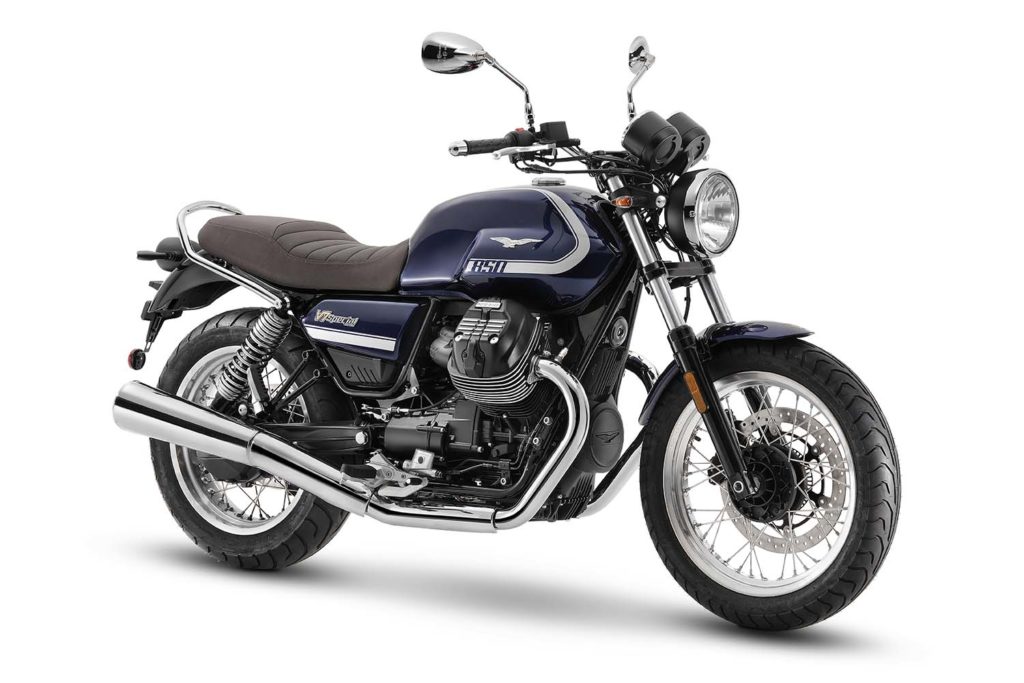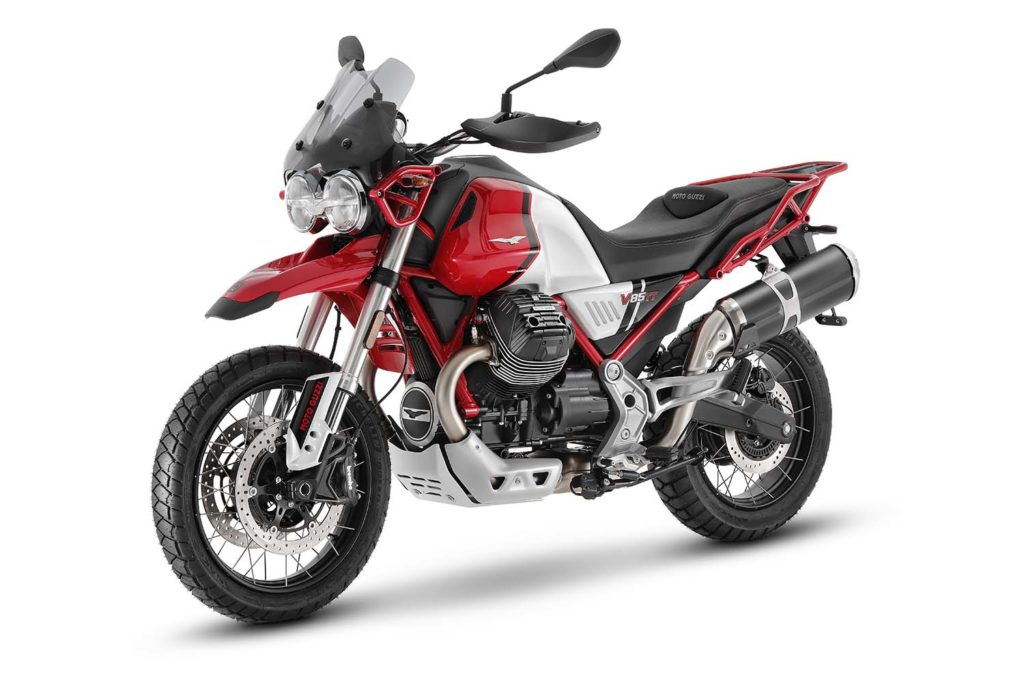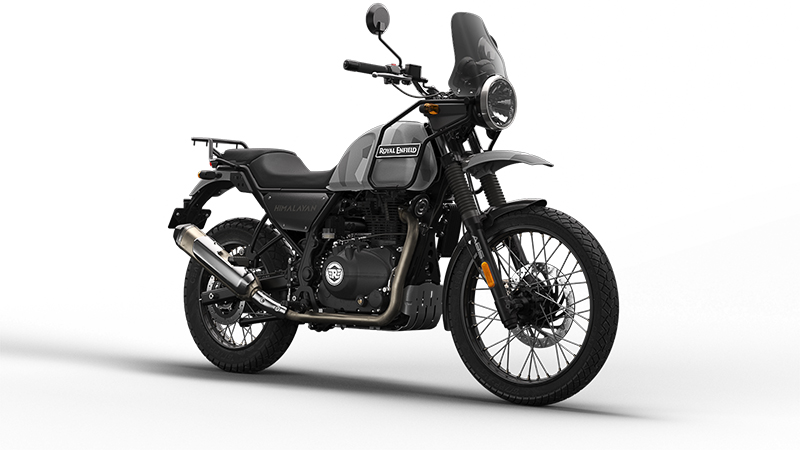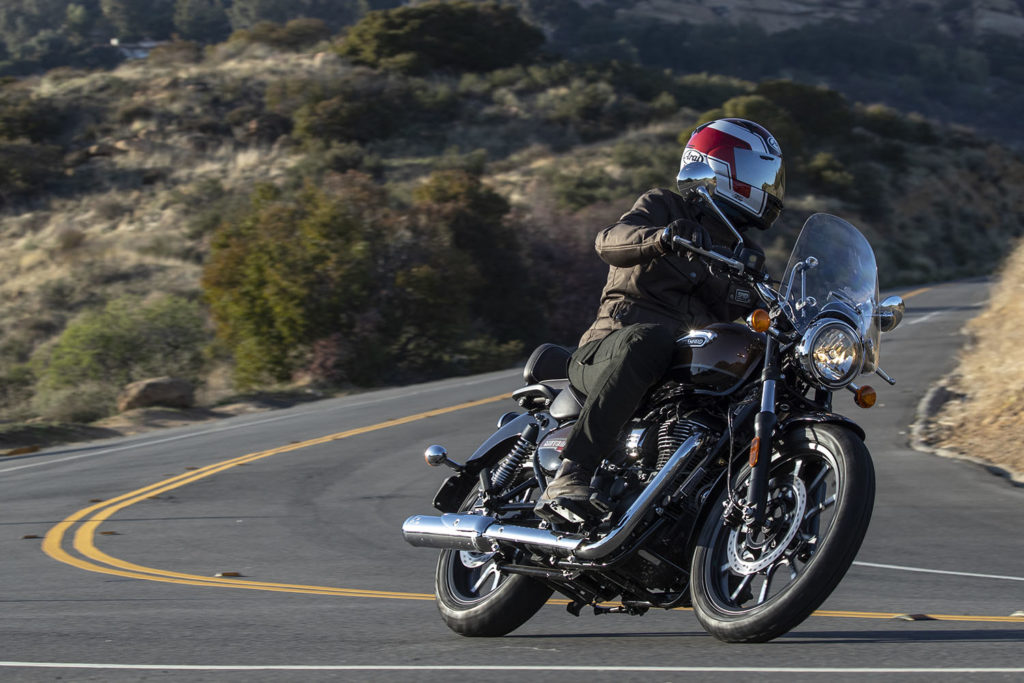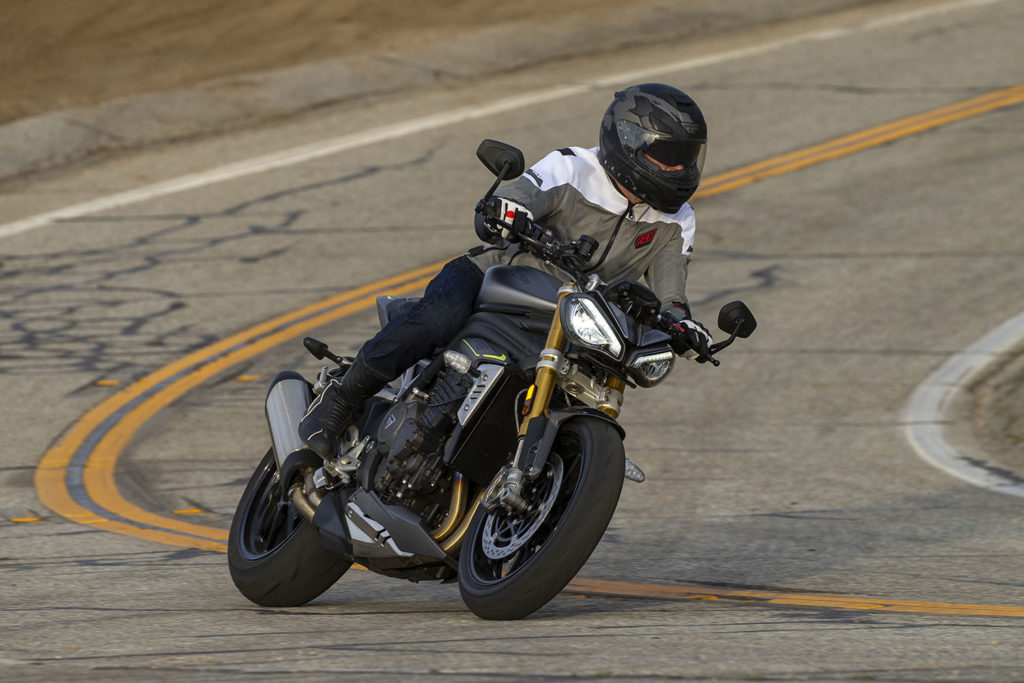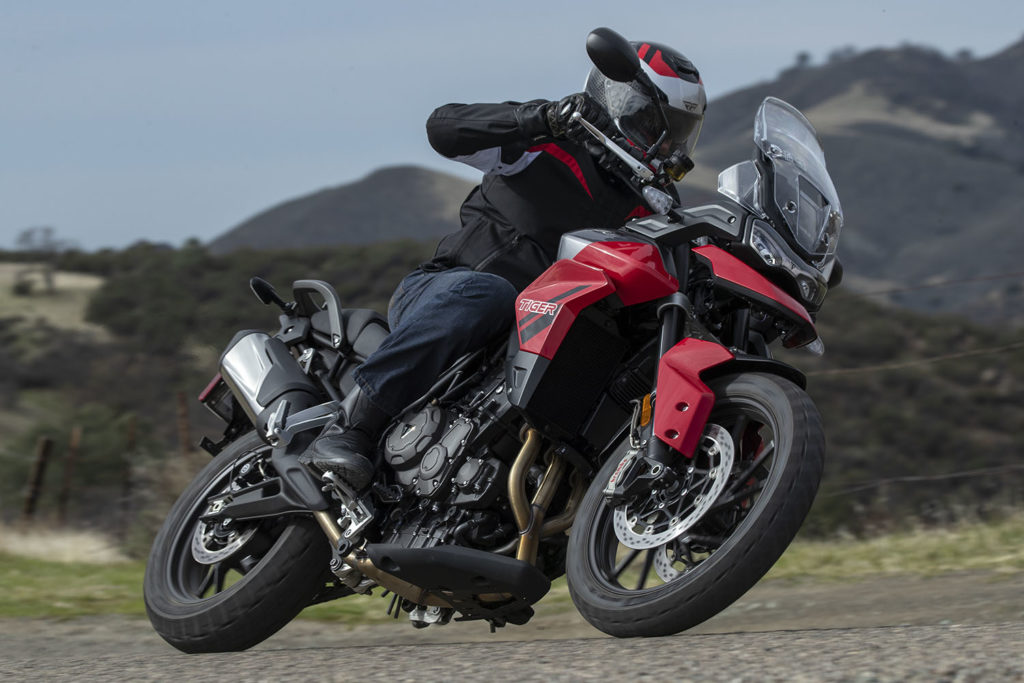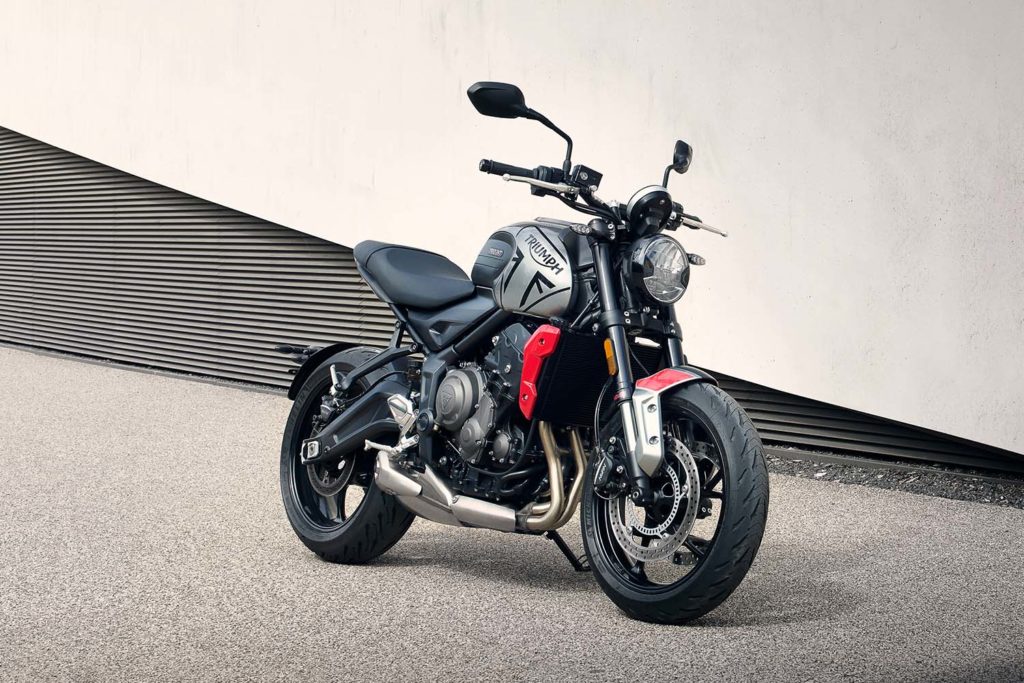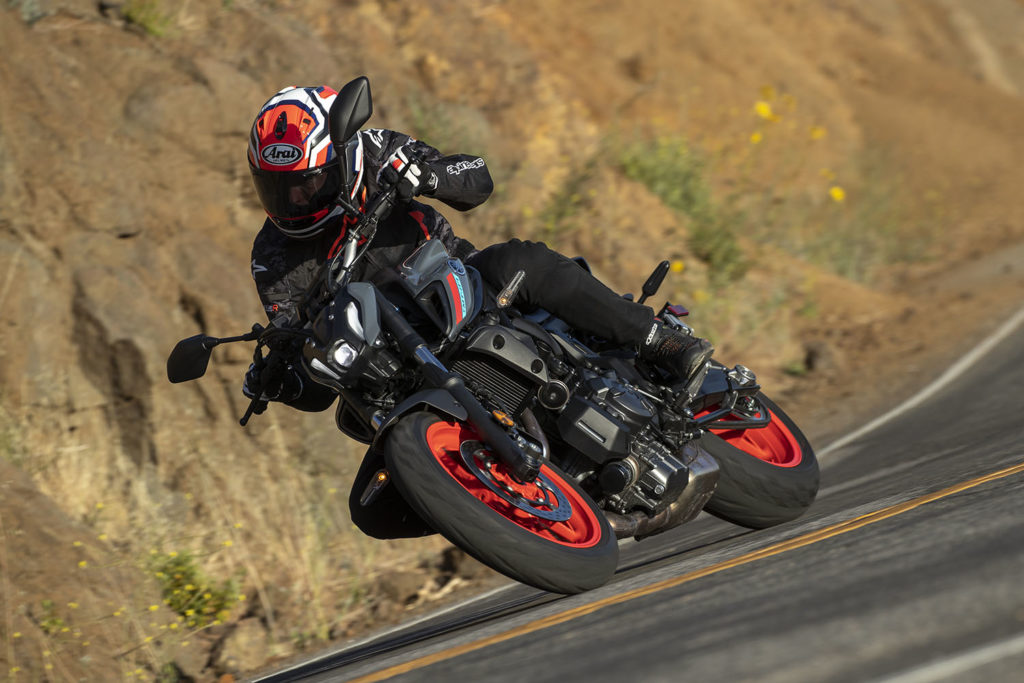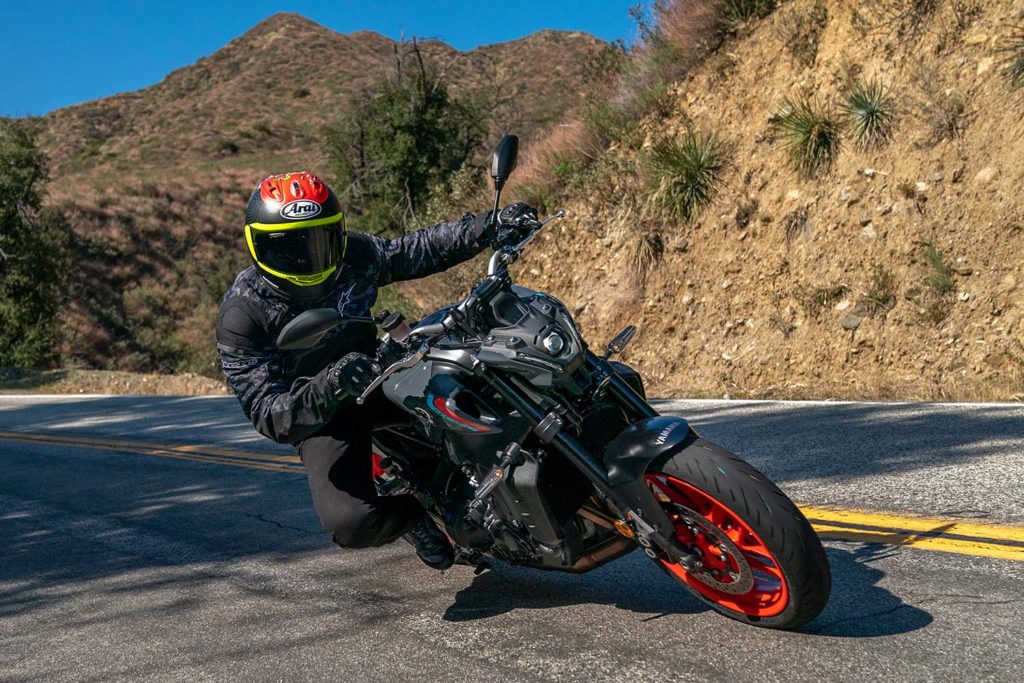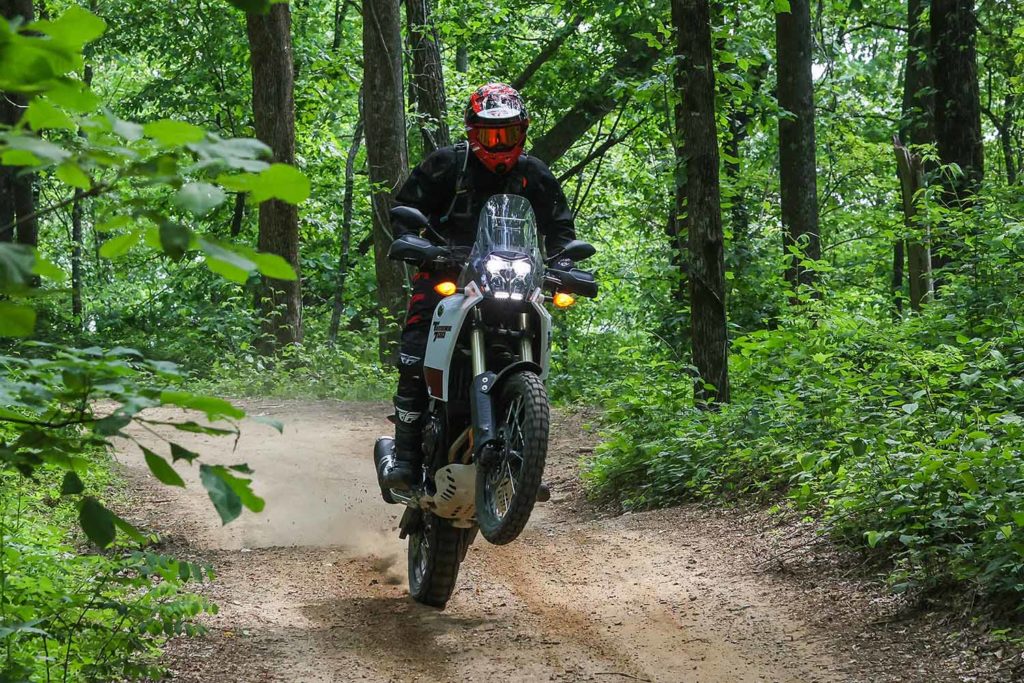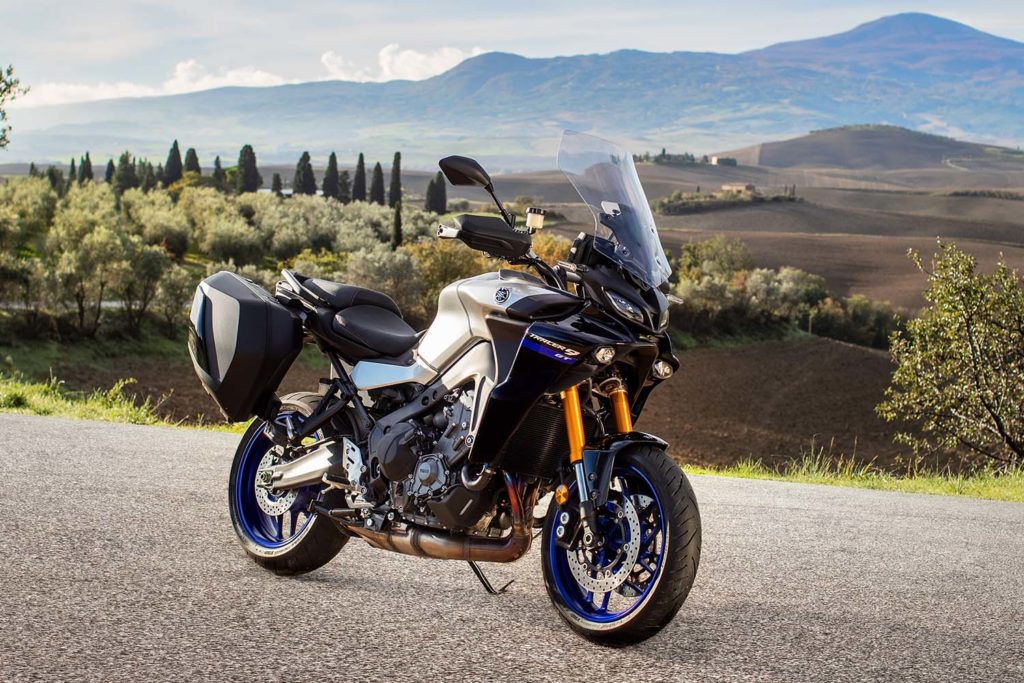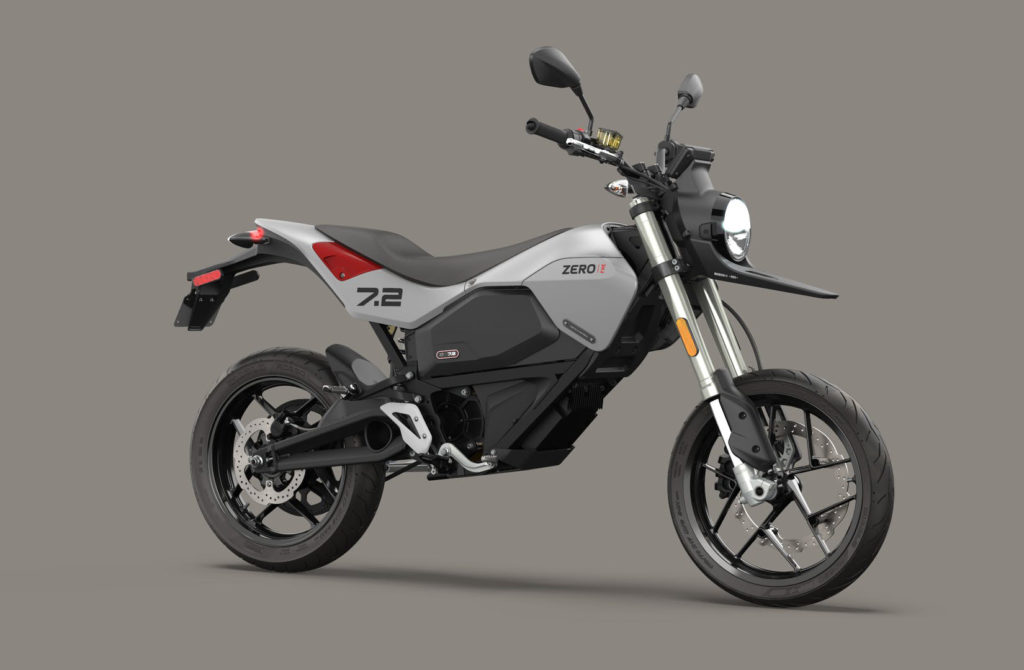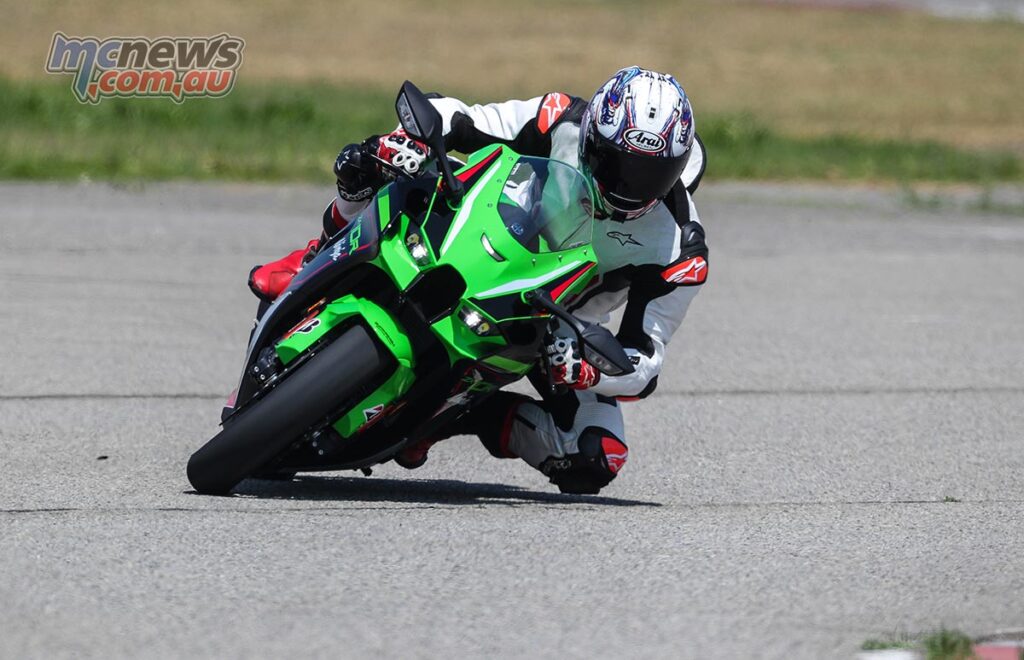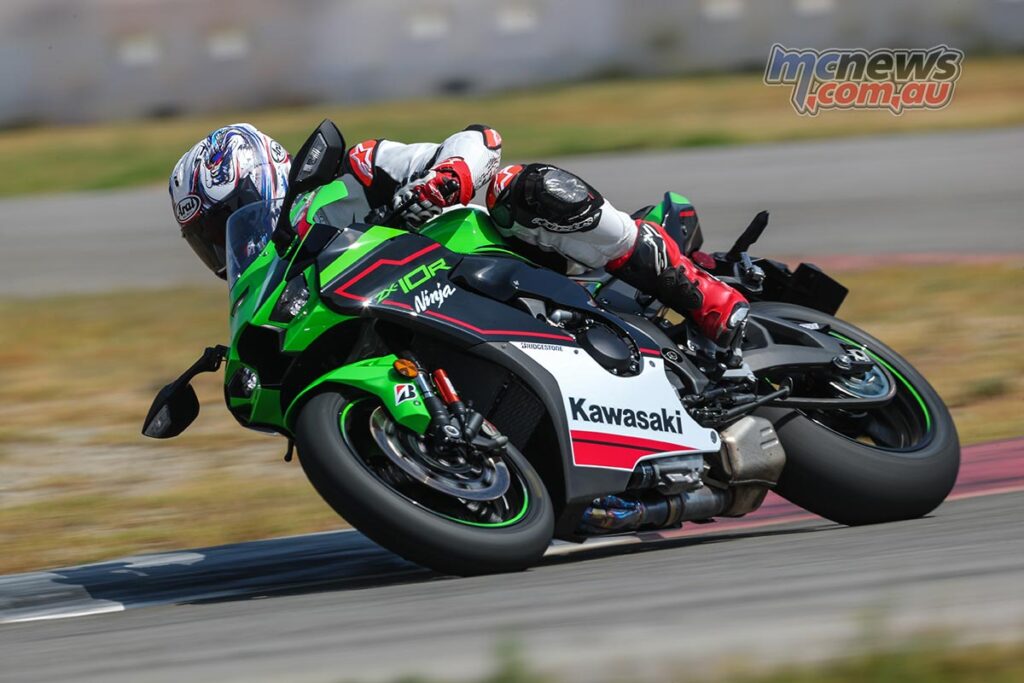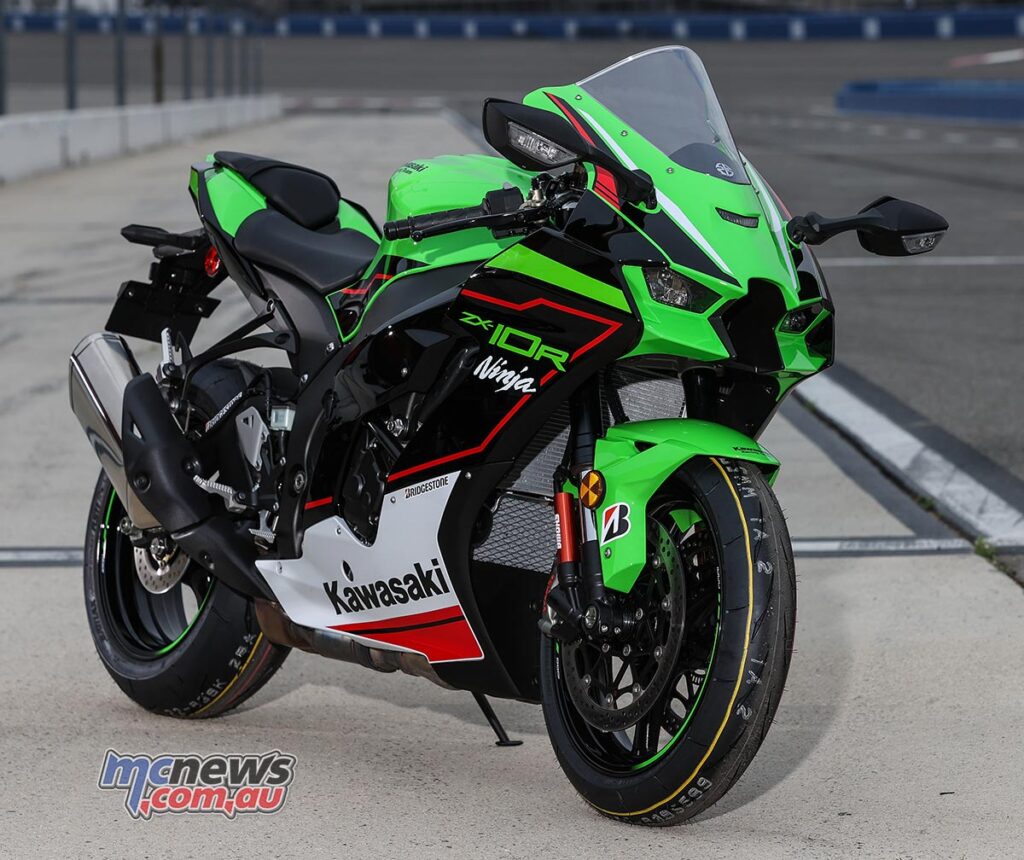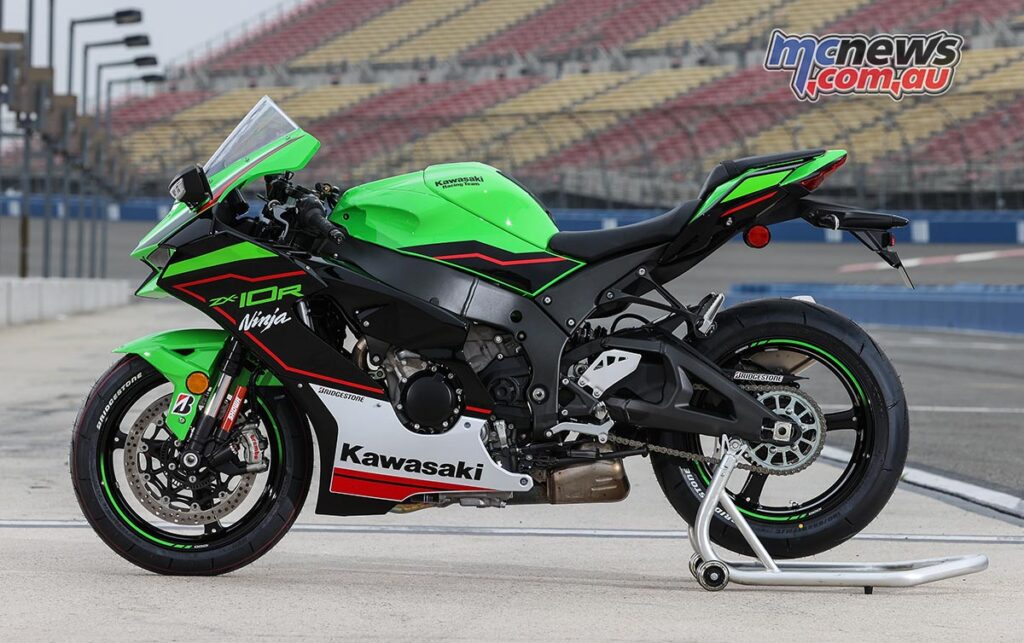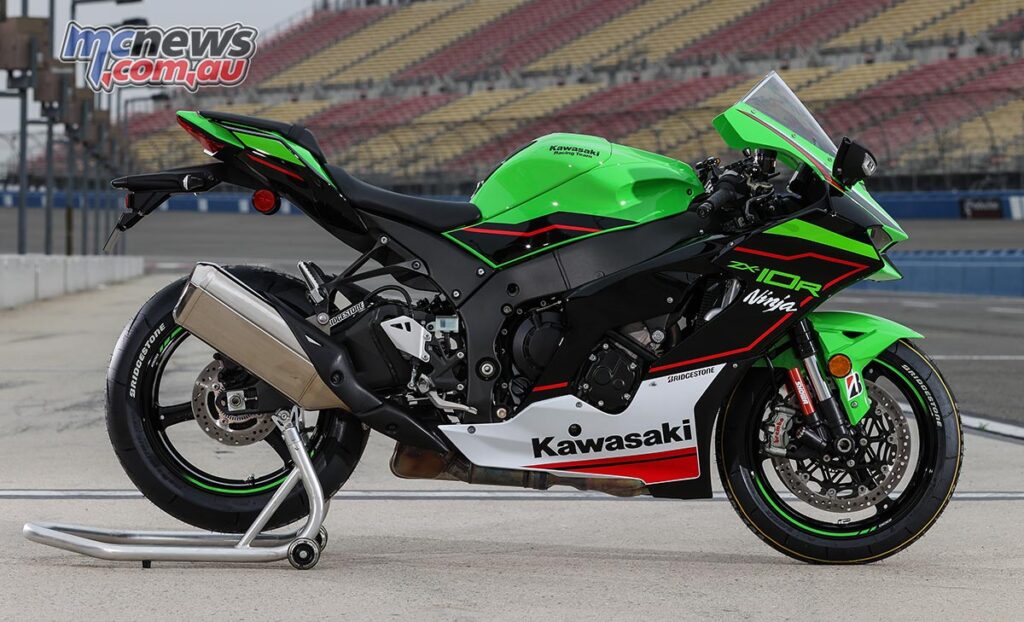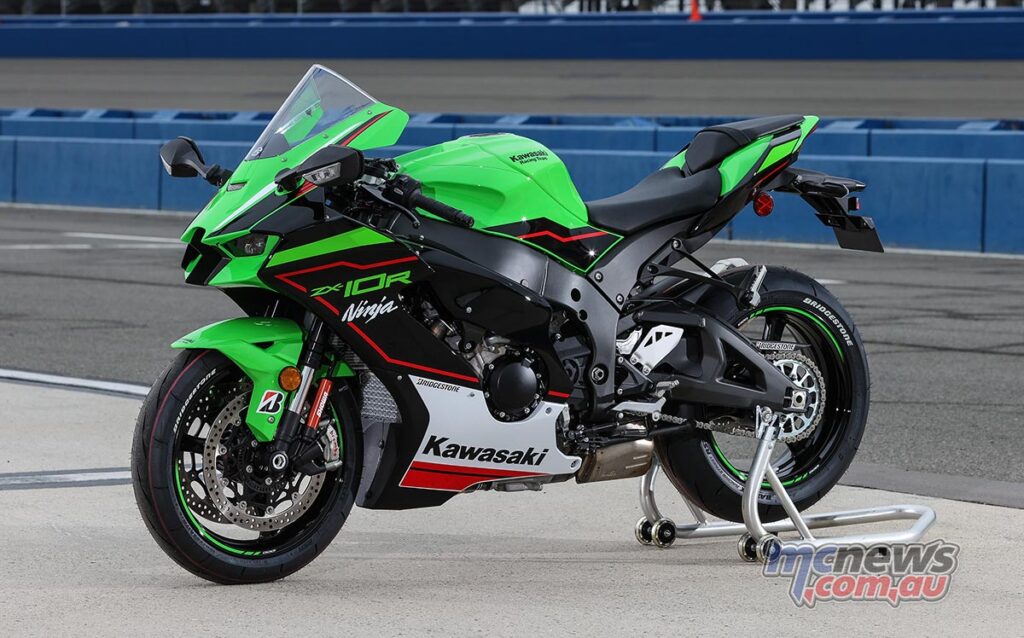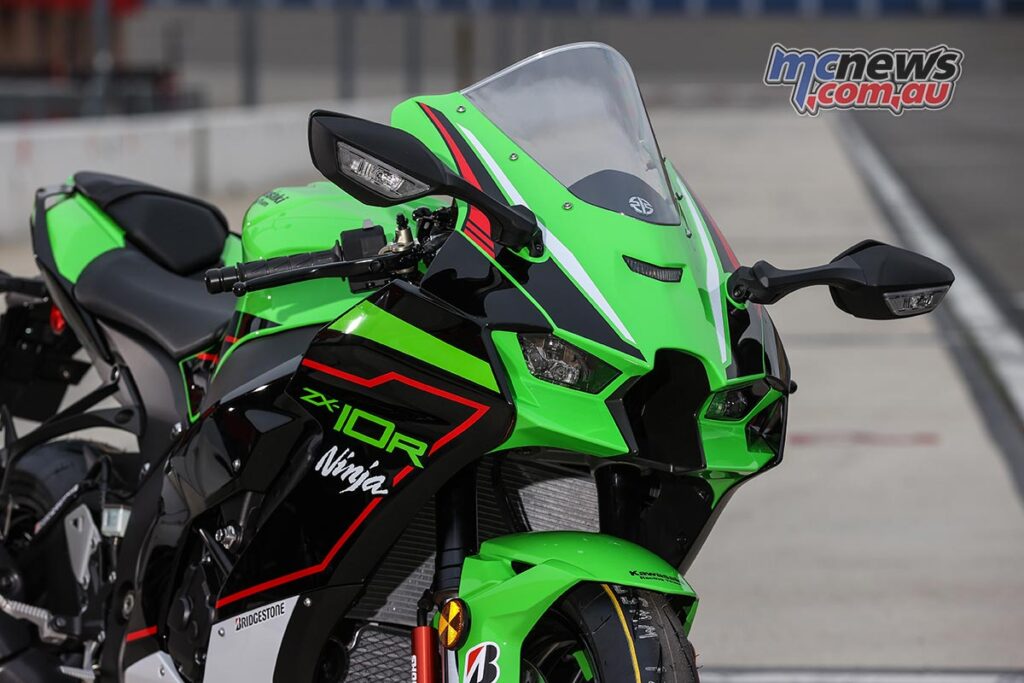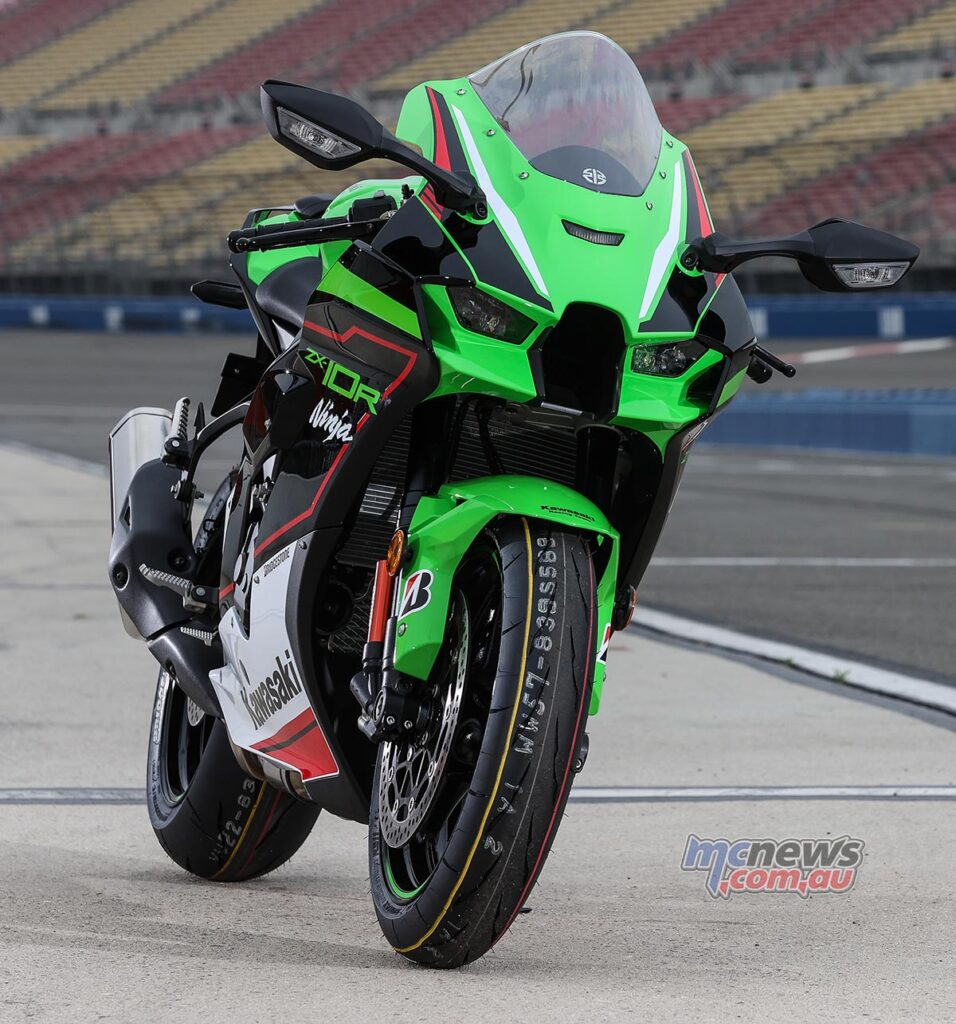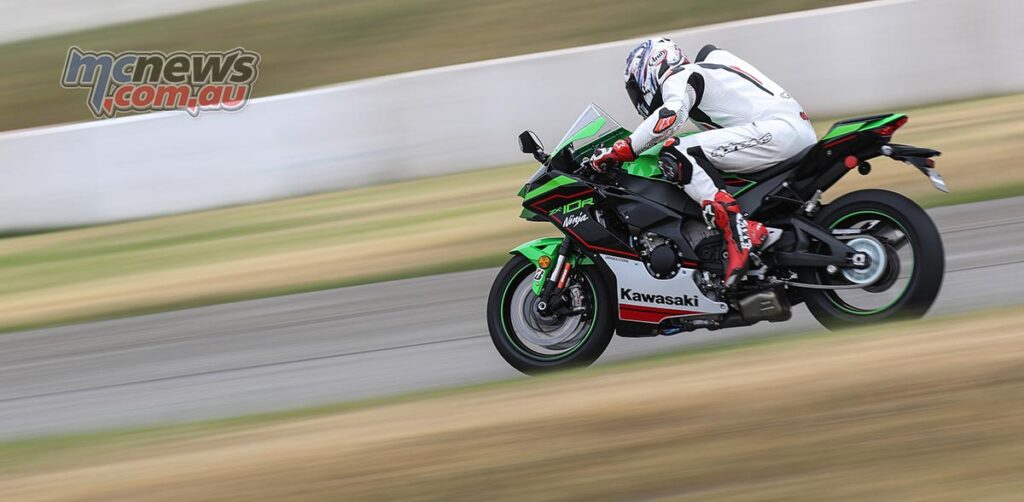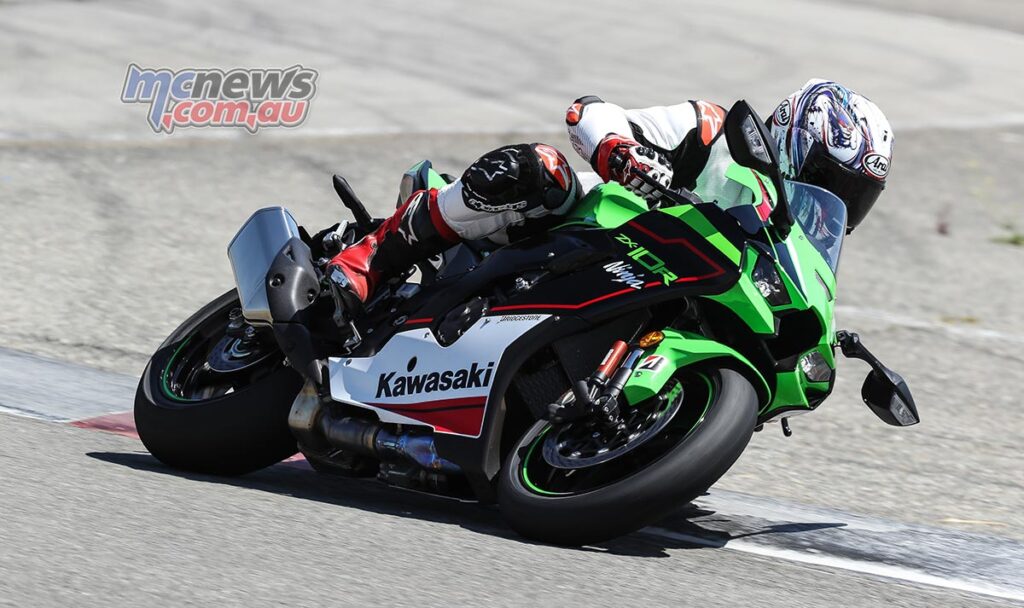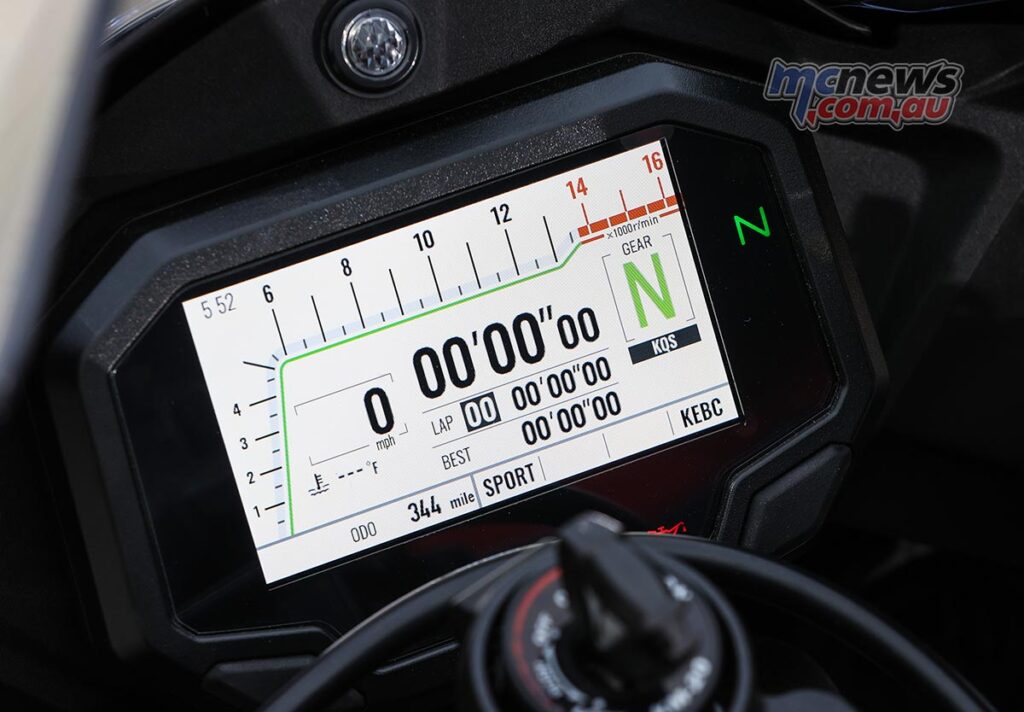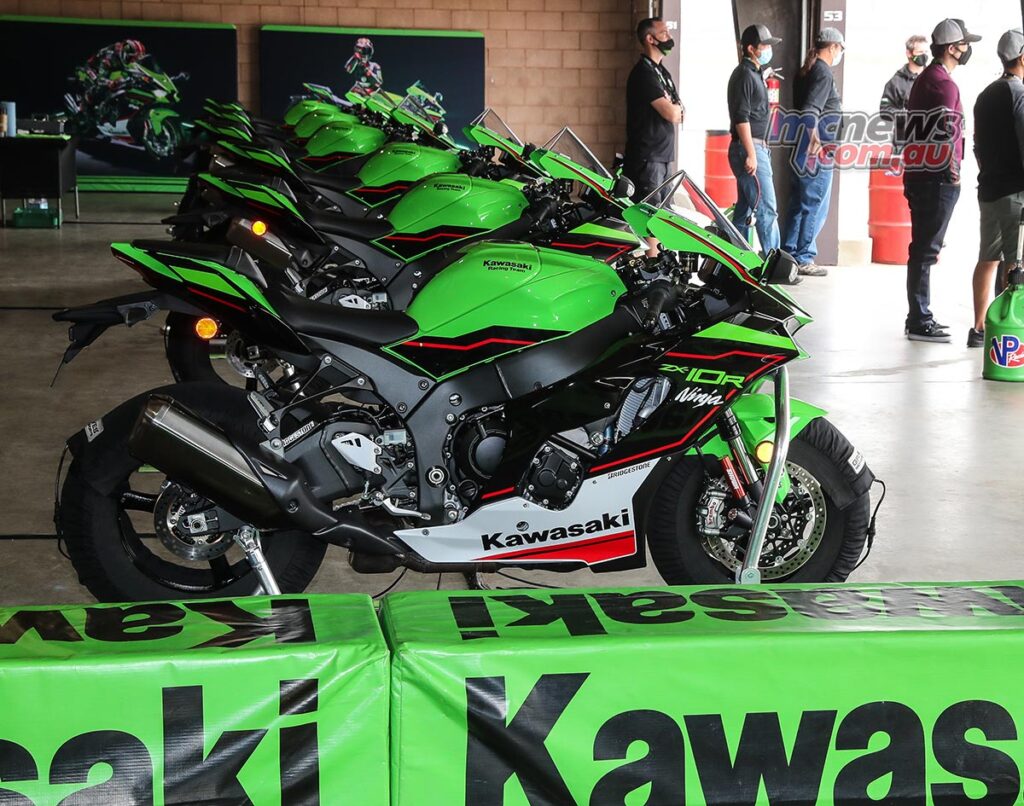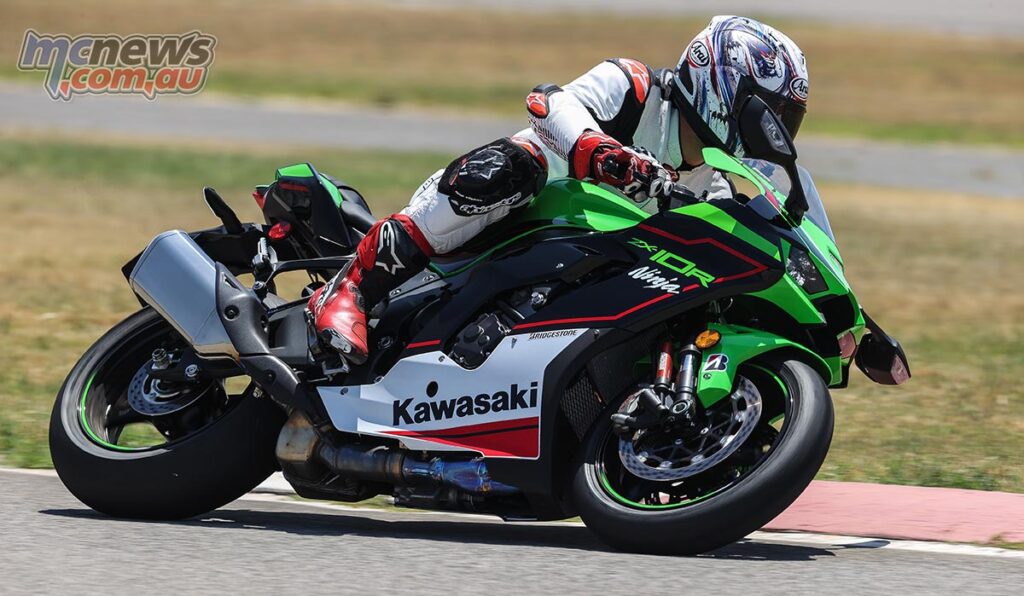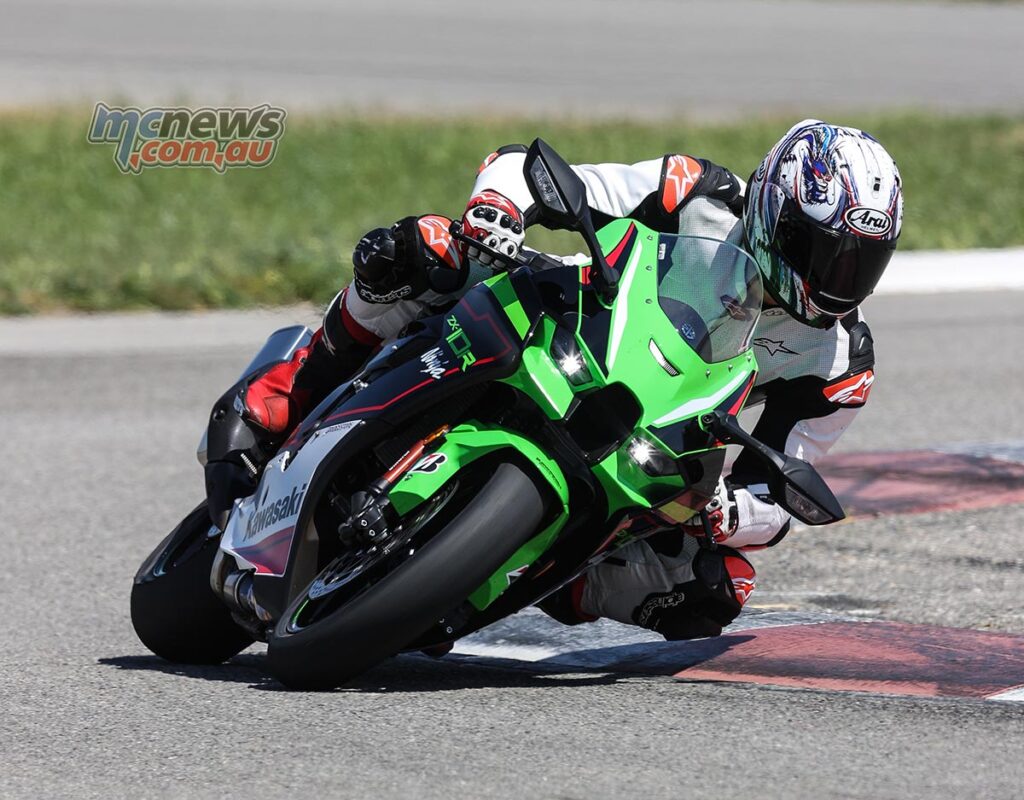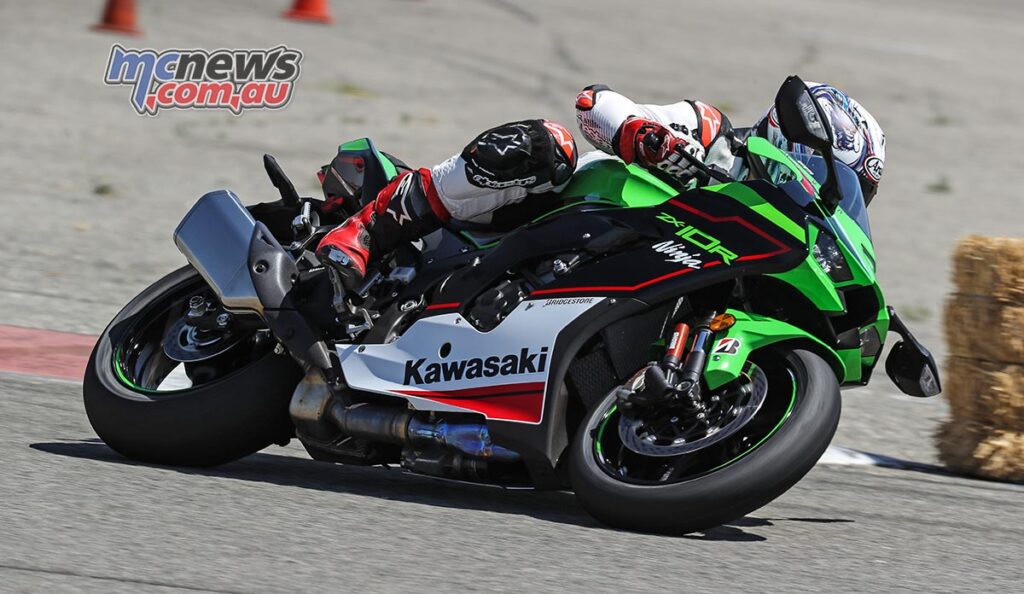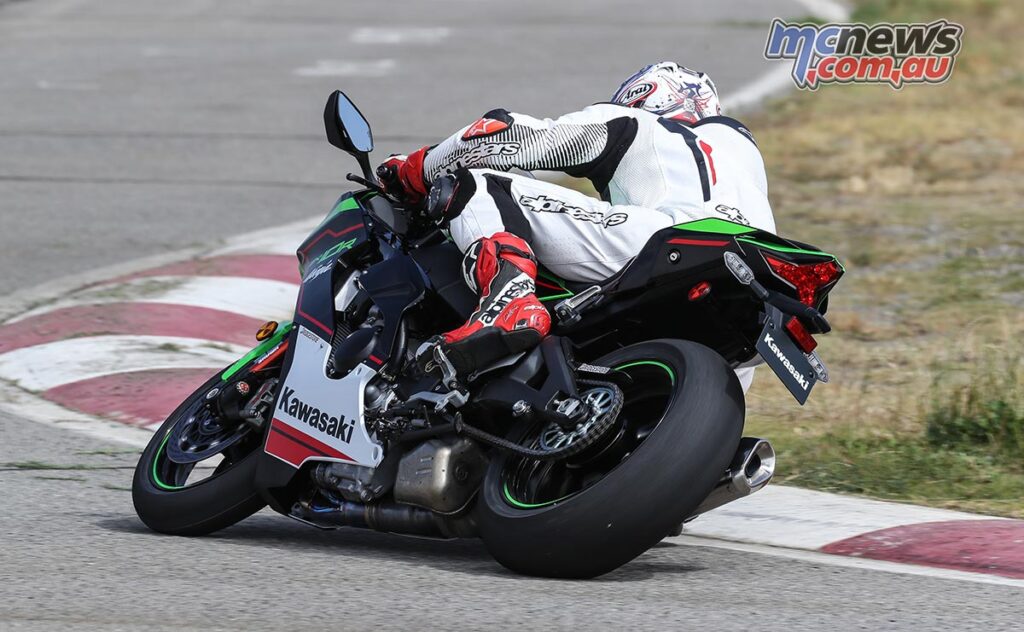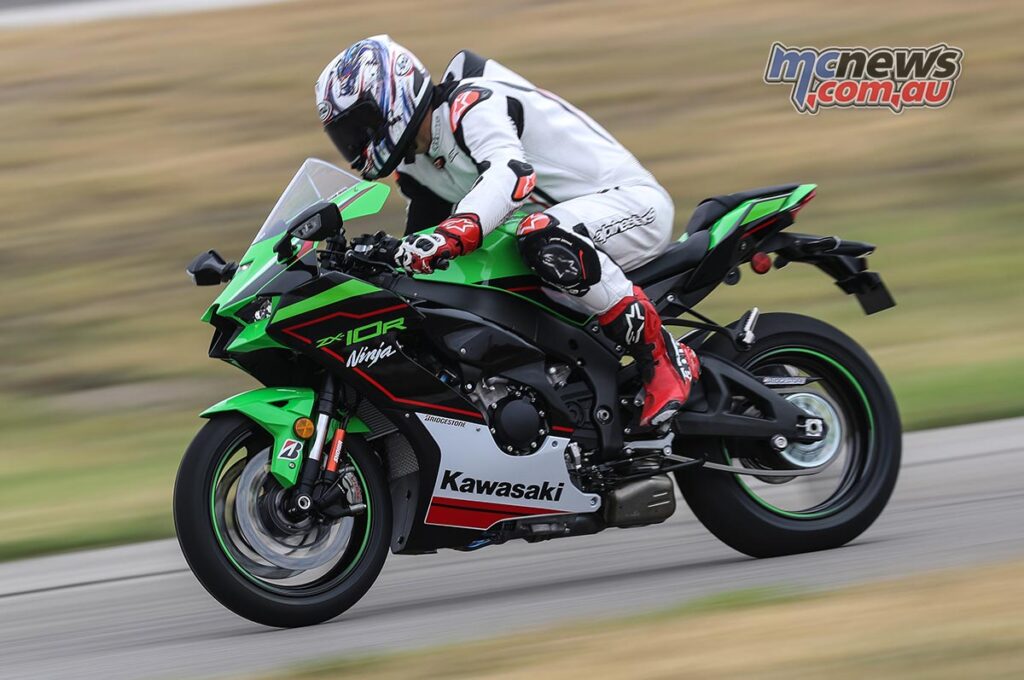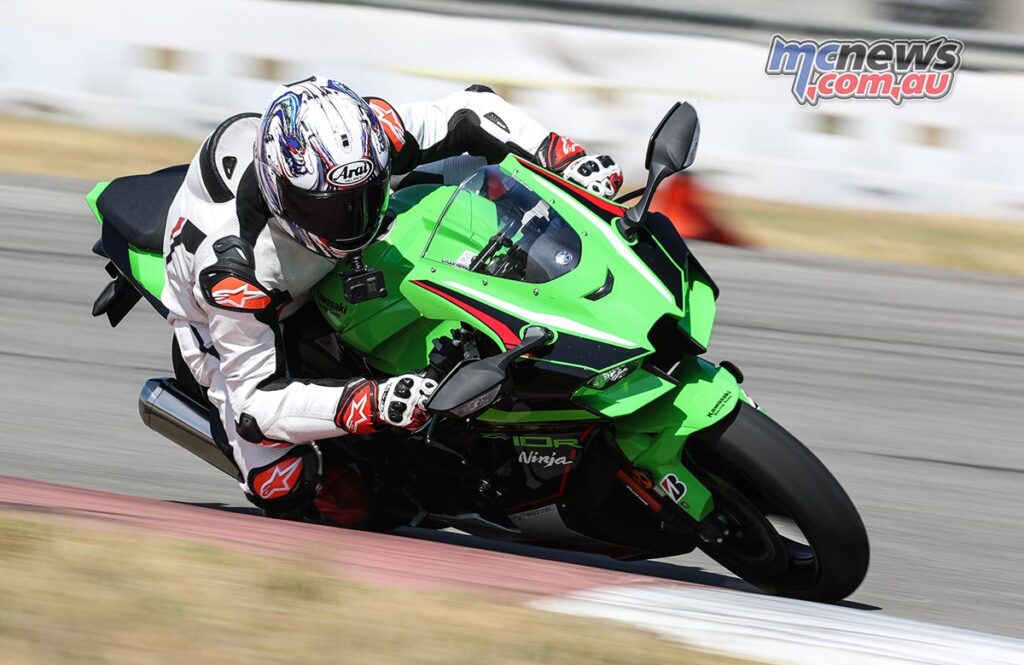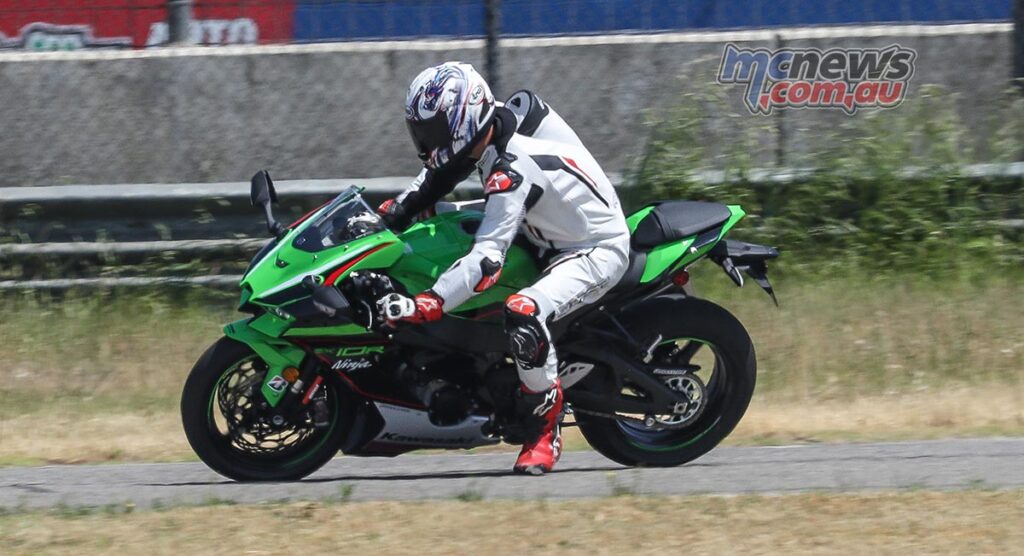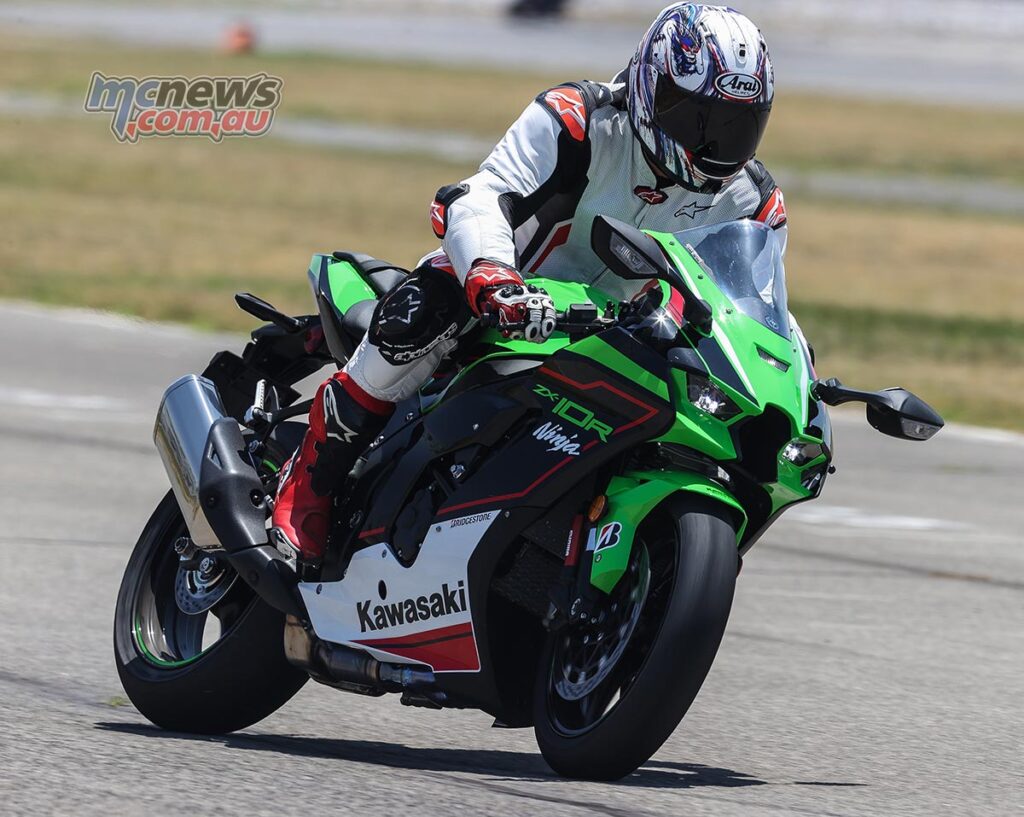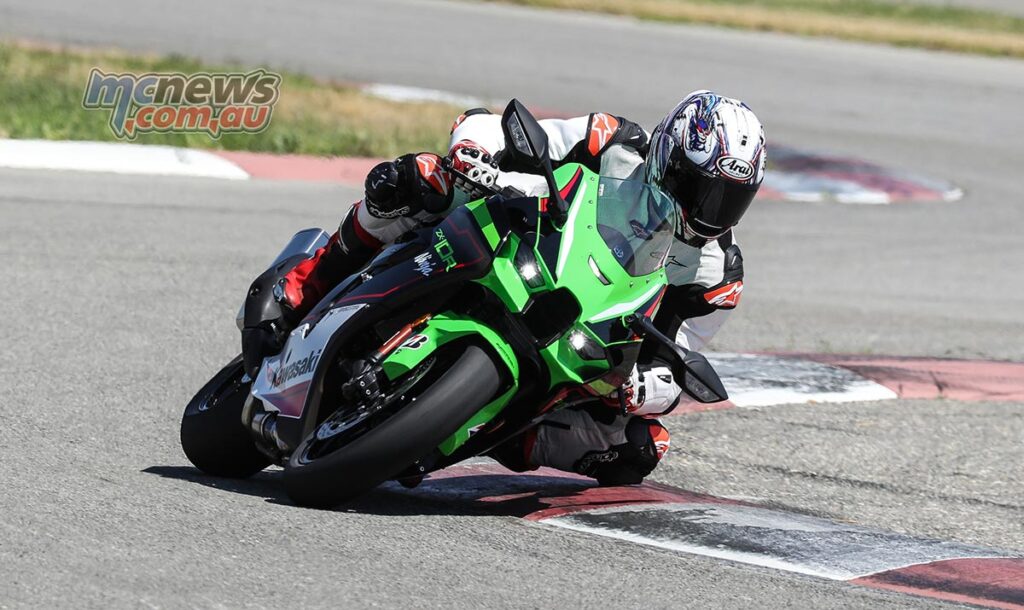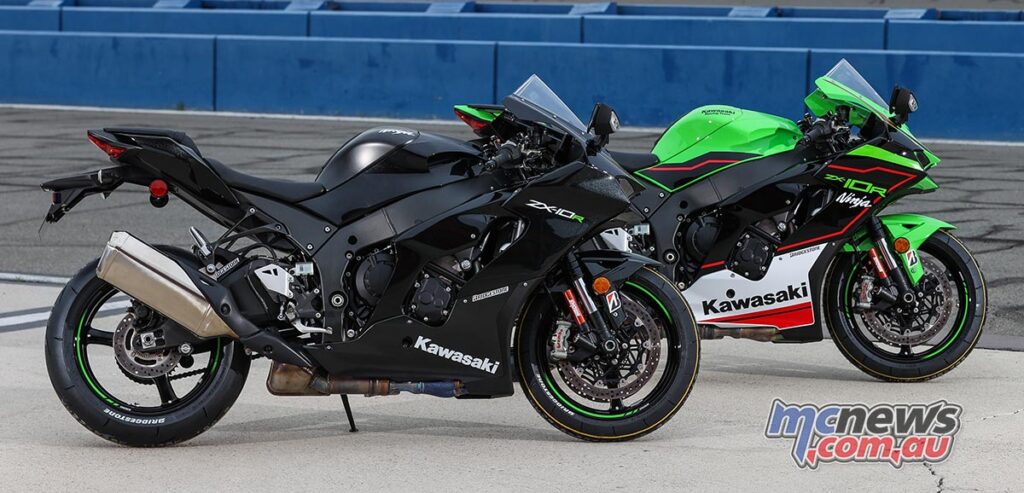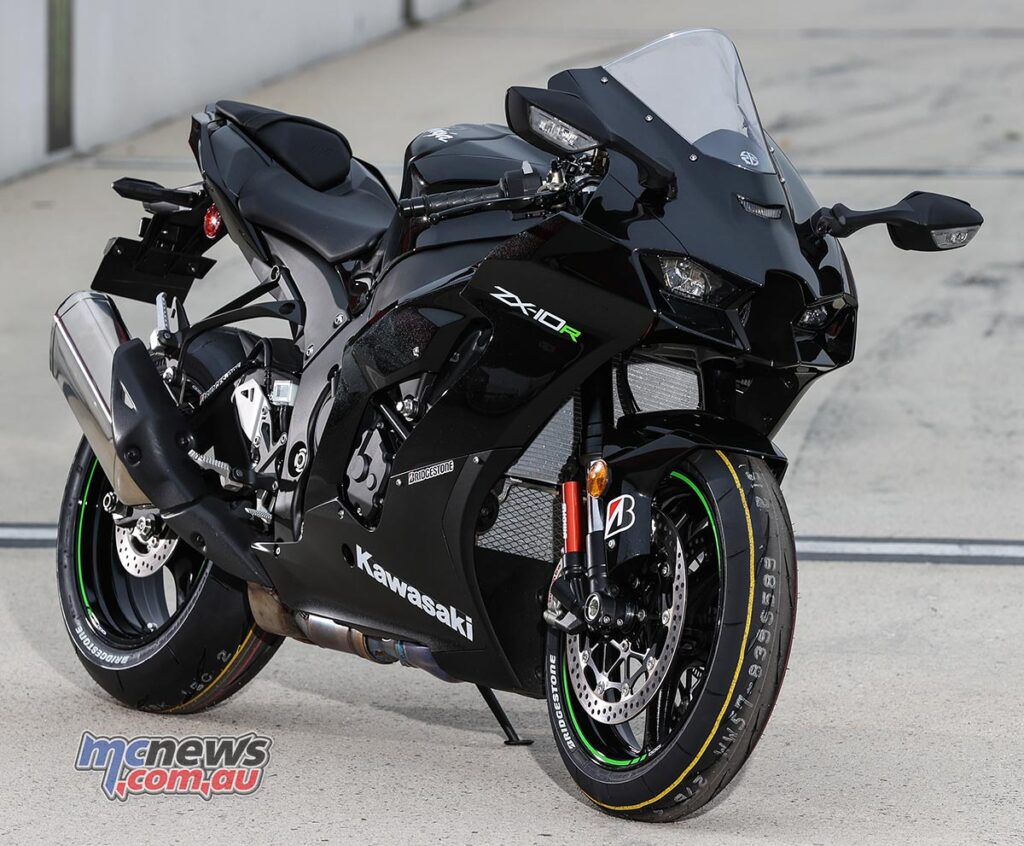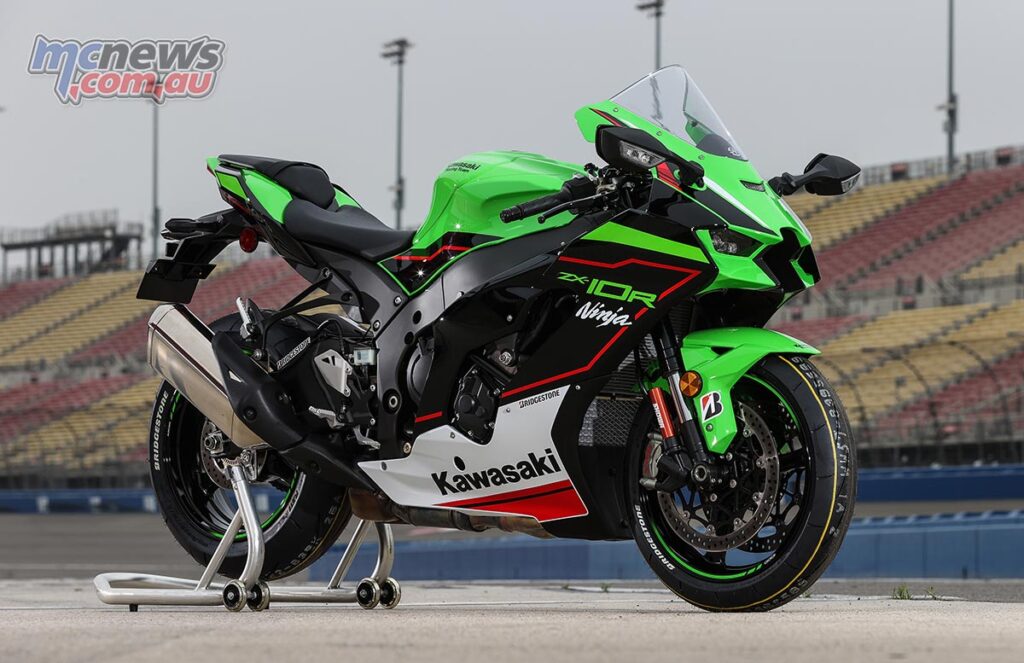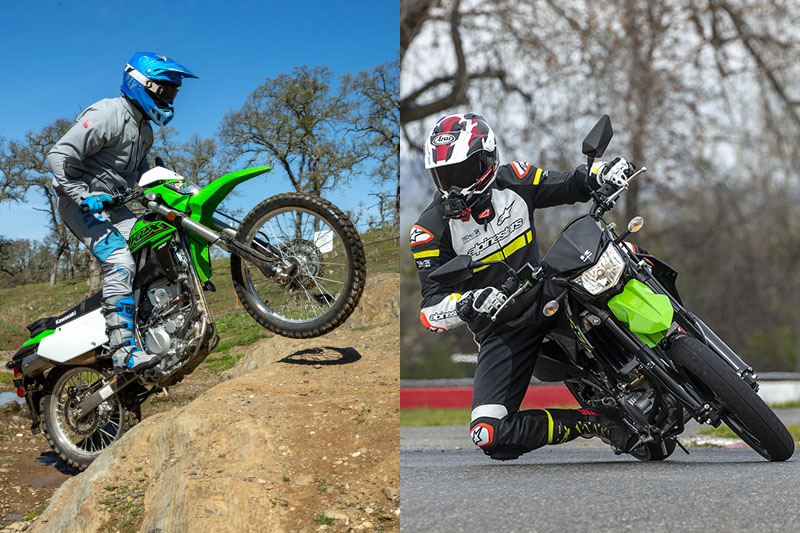This 2022 motorcycle buyers guide includes new or significantly updated street-legal models available in the U.S. It includes cruisers, sportbikes, retro-styled bikes, scooters, touring bikes, and more.
Organized in alphabetical order by manufacturer, it includes photos, pricing, key update info, and links to first looks and – when available – first rides, road tests, and video reviews of each motorcycle.
RELATED: 2021 Motorcycle Buyers Guide: New Street Models
2022 BMW C 400 GT
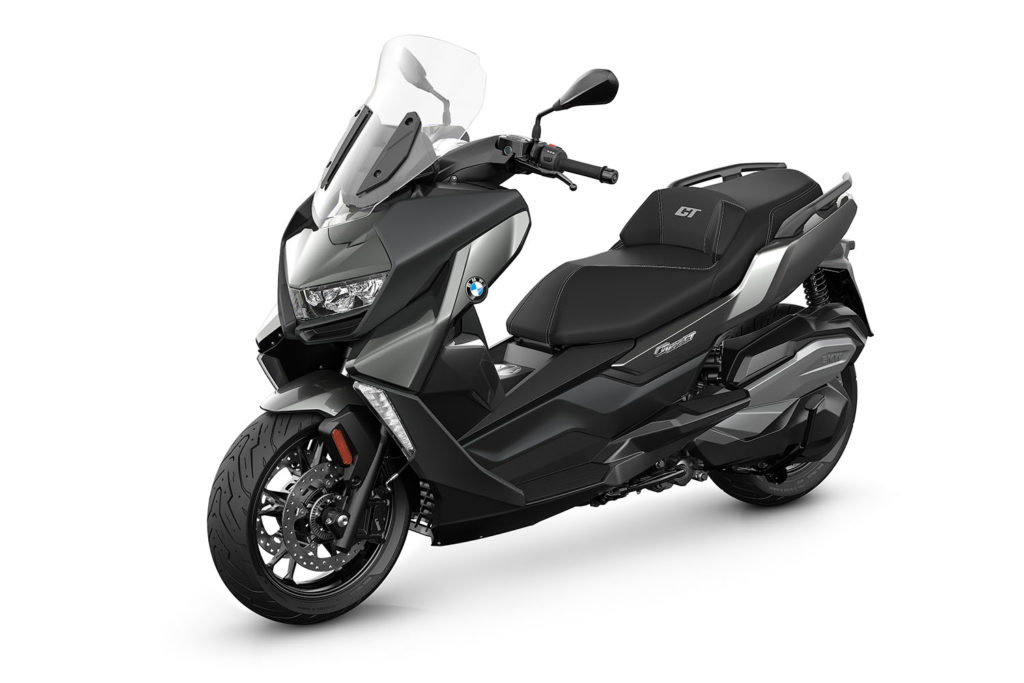
Available in Europe since 2018, the 2022 BMW C 400 GT scooter receives updates and joins the U.S. lineup. As its Gran Turismo name implies, the GT is geared toward touring and comfort while still offering agility, twist-and-go user-friendliness, and generous underseat storage scooters are known for. The 350cc single-cylinder engine receives new Euro 5 emissions certification and delivers a claimed 34 horsepower at 7,500 rpm and 26 lb-ft of torque at 5,750 rpm. There are other updates to the engine, throttle-by-wire, traction control, and more. Base price is $8,495.
Read our 2022 BMW C 400 GT First Look Review
2022 BMW CE 04 Electric Scooter
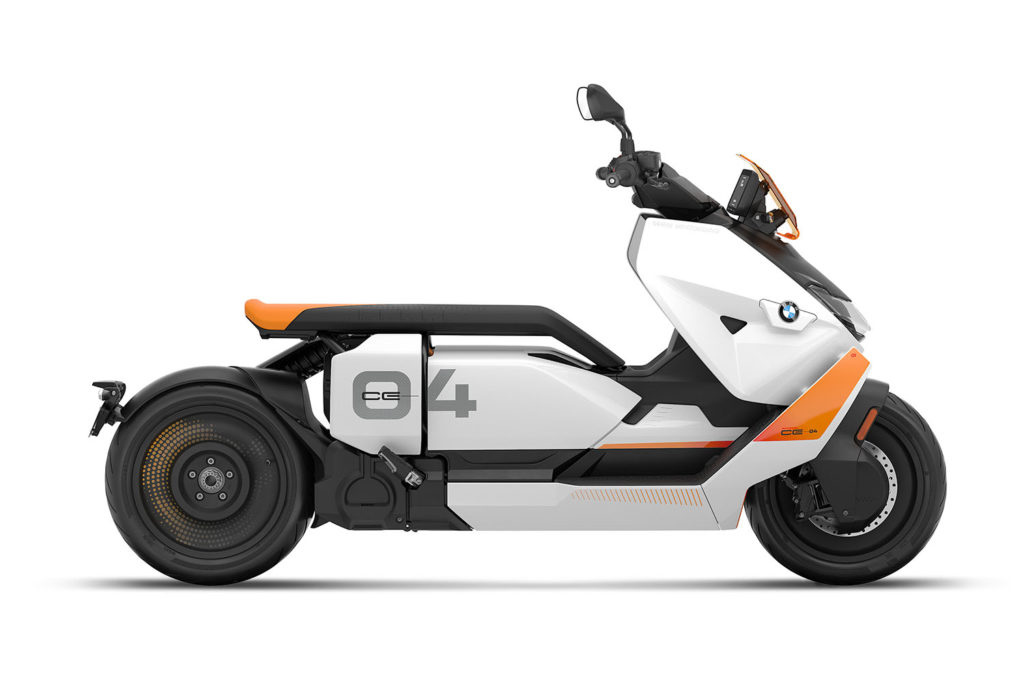
The 2022 BMW CE 04 scooter is part of BMW Motorrad’s “electromobility strategy.” It uses an innovative liquid-cooled, permanent-magnet electric motor mounted in the frame between the battery and the rear wheel. The motor is rated at 20 horsepower with a claimed maximum output of 42 horsepower, top speed is 75 mph, and 0-30 mph is achieved in 2.6 seconds. The CE 04 has a battery cell capacity of 60.6 Ah (8.9 kWh), providing a claimed range of 80 miles. Price and availability have not yet been announced.
Read our 2022 BMW CE 04 Electric Scooter First Look Review
2022 BMW R 18 B
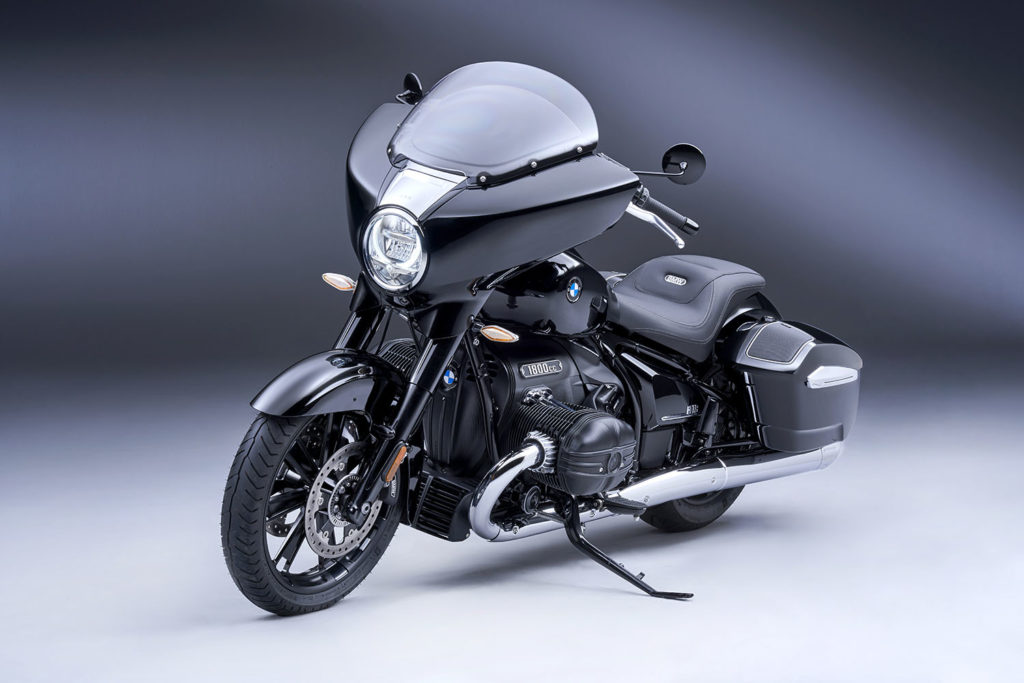
When BMW unveiled the R 18 last year, a cruiser powered by a massive 1,802cc OHV air/oil-cooled 4-valve opposed Twin that’s the largest “boxer” engine the German company has ever produced, it was only a matter of time before touring versions were added to the lineup. For 2022, BMW has announced the R 18 B “Bagger” (above) and R 18 Transcontinental (below). Both are equipped with a handlebar-mounted fairing with an infotainment system, a passenger seat, and locking hard saddlebags, and the Transcontinental adds a top trunk with an integrated passenger backrest. The 2022 BMW R 18 B is equipped with a low windshield, a slim seat (height is 28.3 inches), and a matte black metallic engine finish. Base price is $21,495.
Read our 2022 BMW R 18 B and R 18 Transcontinental First Look Review
2022 BMW R 18 Transcontinental
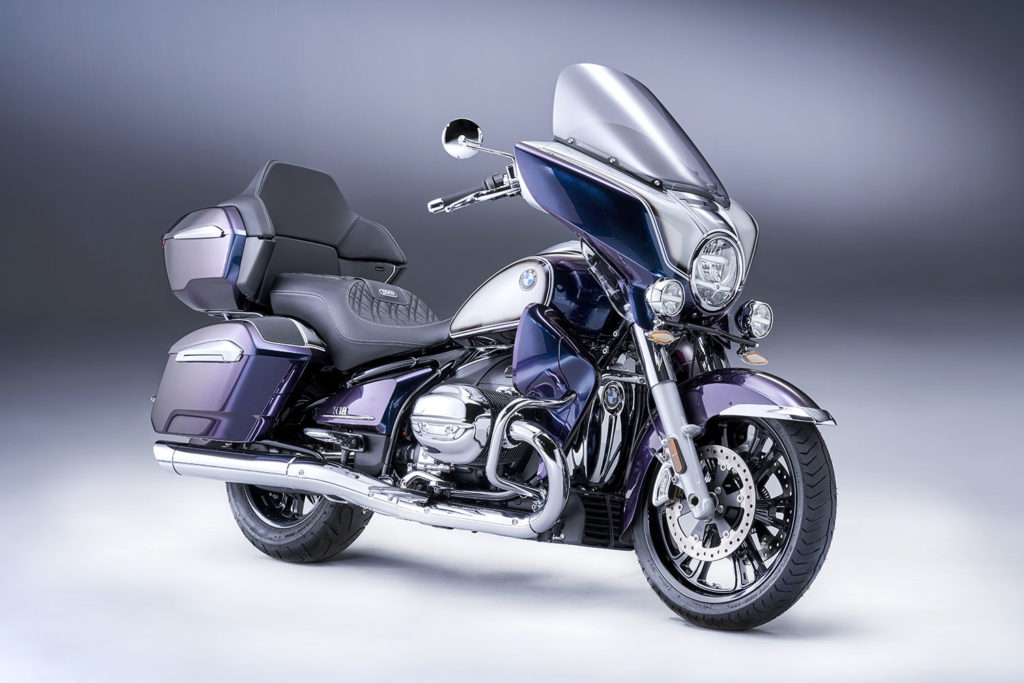
Like the R 18 B, the 2022 BMW R 18 Transcontinental is equipped with a handlebar-mounted fairing with an infotainment system, a passenger seat, and locking hard saddlebags, and the Transcontinental adds a top trunk with an integrated passenger backrest. The 2022 BMW R 18 Transcontinental has a tall windshield, wind deflectors, driving lights, heated seats, highway bars, and an engine finished in silver metallic. Base price is $24,995.
Read our 2022 BMW R 18 B and R 18 Transcontinental First Look Review
2022 Honda Grom
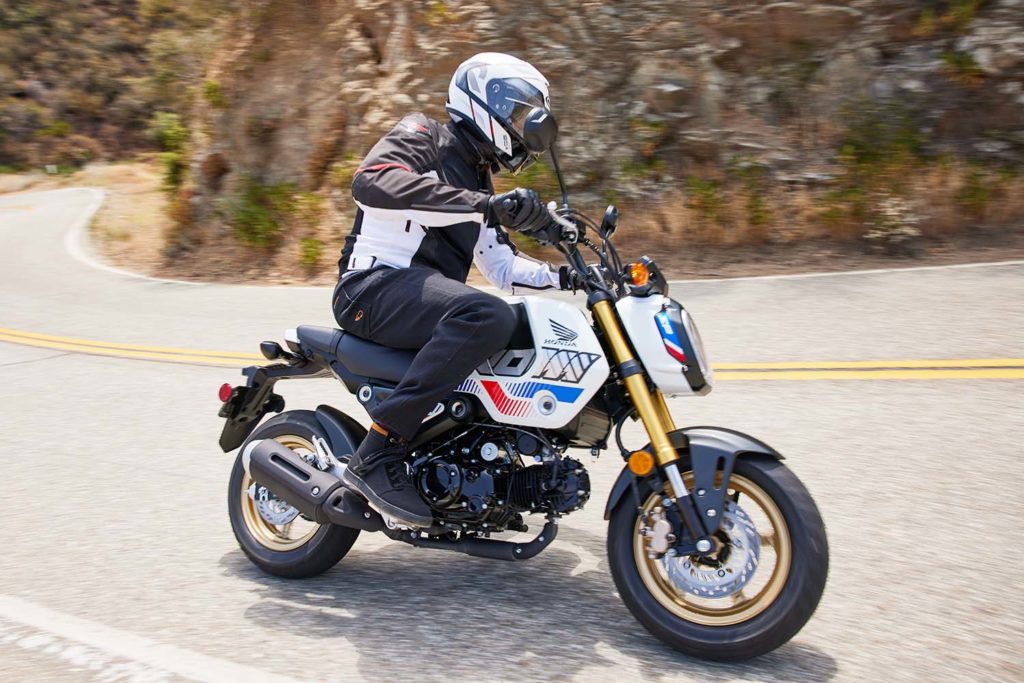
The lovable, popular Grom has been Honda‘s top-selling streetbike since it was introduced in 2014. Now in its third generation, the 2022 Honda Grom gets a revised engine, a new 5-speed transmission, a larger fuel tank, a thicker, flatter seat, and fresh styling. Large bolts on the bodywork and a new two-piece design for the down pipe and muffler make the Grom easier to customize. Base price is $3,399, and another $200 gets you ABS. The Honda Grom SP ($3,499, above) comes in Pearl White and includes special graphics, gold fork tubes, and gold wheels.
Read our 2022 Honda Grom First Ride Review
2022 Indian Chief
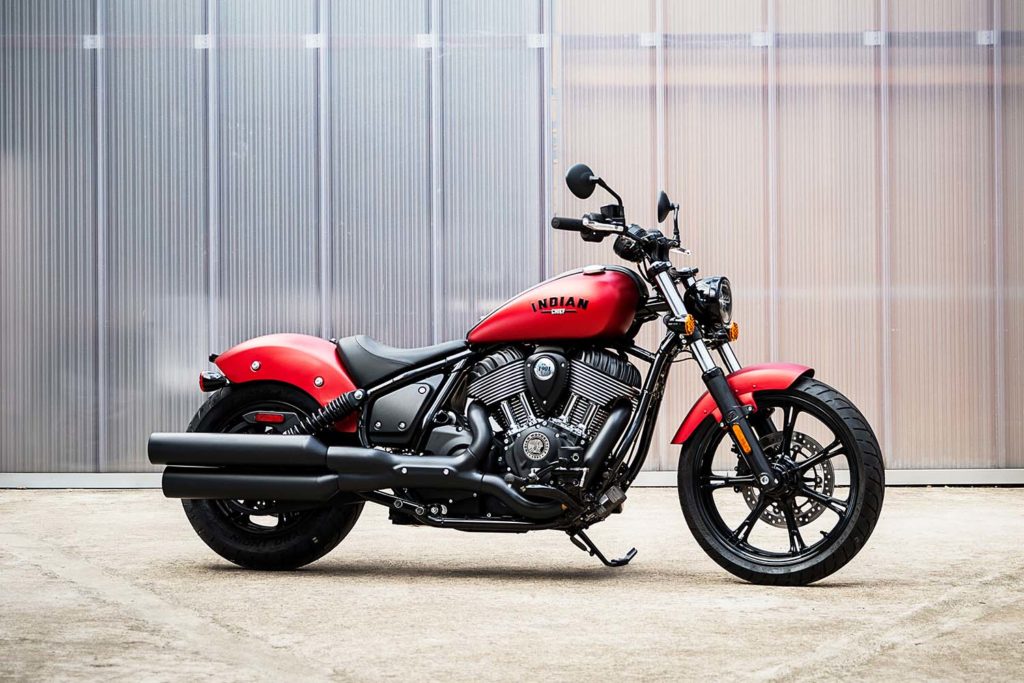
To celebrate the 100th anniversary of the Chief, Indian Motorcycle revamped the entire lineup. In a nod to post-WW2 Indians, the lineup includes an updated Chief and two new models: the Chief Bobber and the Super Chief. Up-spec models include the Chief Dark Horse, Chief Bobber Dark Horse, and Super Chief Limited.
All Indian Chiefs are powered by the air-cooled, 49-degree Thunderstroke V-Twin, in either 111ci (1,811cc) or 116ci (1,890cc) displacement, with 6-speed transmissions and belt final drive. Every model has a low 26-inch seat height, and standard equipment includes keyless ignition, ride modes, cruise control, rear cylinder deactivation, and LED lighting.
The modern, sporty 2022 Indian Chief (above) has cast wheels with a 19-inch front, a solo saddle, midmount foot controls, and a drag-style handlebar. It’s powered by the Thunderstroke 111 V-Twin that makes 108 lb-ft of torque, and ABS is optional. The Indian Chief is available in Black Metallic, Ruby Smoke, and White Smoke, and pricing starts at $14,499.
Read our 2022 Indian Chief Lineup First Look Review
Read our 2022 Indian Super Chief Limited First Ride Review
2022 Indian Chief Dark Horse
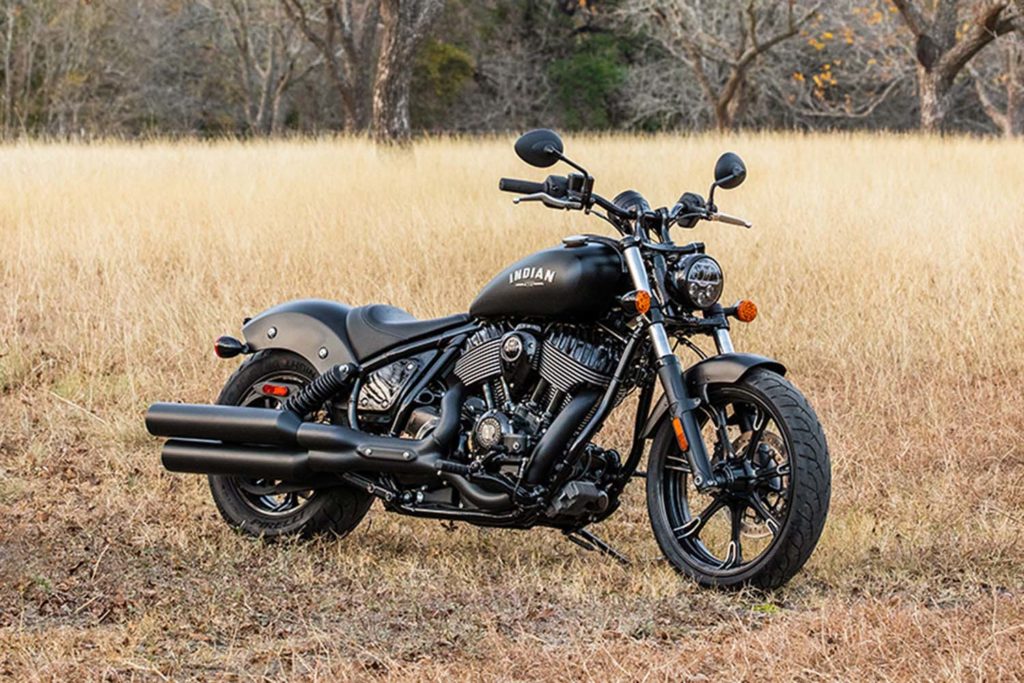
Dark Horse models are known for their blacked-out finishes, dark paint, and minimalist styling. The 2022 Indian Chief Dark Horse has a Thunderstroke 116 V-Twin that belts out 120 lb-ft of torque. It also features a 4-inch round instrument panel with Ride Command, offering turn-by-turn navigation, Bluetooth connectivity, and more, as well as standard ABS. The Chief Dark Horse rolls on cast wheels (19-inch front, 16-inch rear) and is available in Black Smoke, Alumina Jade Smoke, and Stealth Gray. Pricing starts at $16,999.
Read our 2022 Indian Chief Lineup First Look Review
Read our 2022 Indian Super Chief Limited First Ride Review
2022 Indian Chief Bobber
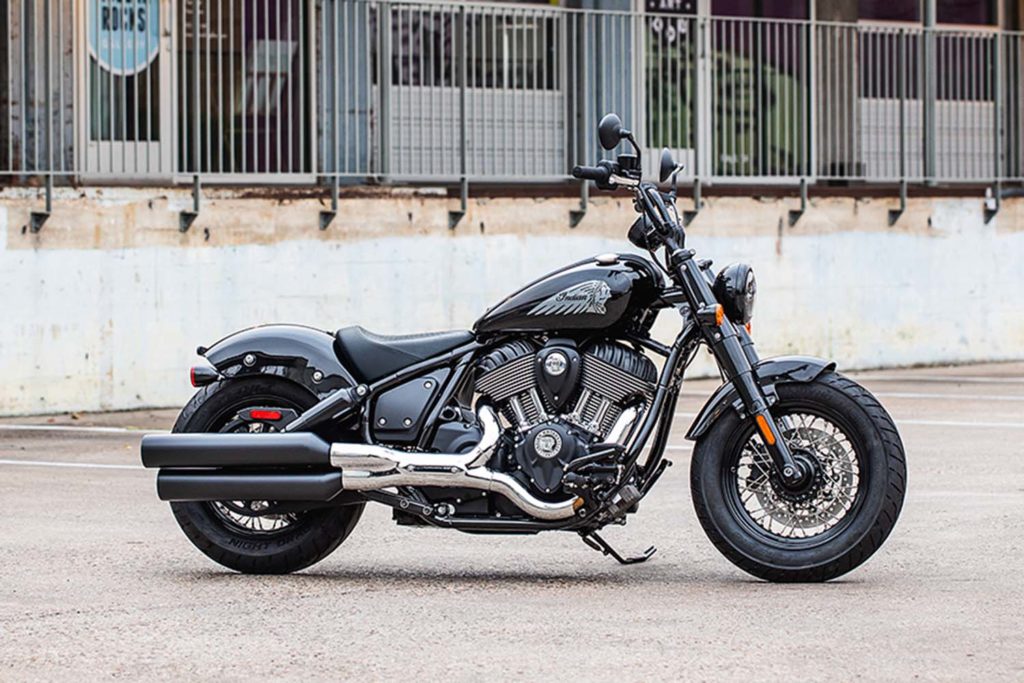
Following the success of the Scout Bobber, it’s only natural that Indian would add a variation to the Chief lineup. The 2022 Indian Chief Bobber has mini-ape hanger handlebars paired with forward foot controls for an upright riding position. Powered by the Thunderstroke 111, it rolls on 16-inch wire wheels, has fork and shock covers, a large headlight bucket wrapped in a nacelle, and a mix of chrome and black finishes. ABS is optional. The Indian Chief Bobber is available in Black Metallic and Ruby Metallic, pricing starts at $15,999.
Read our 2022 Indian Chief Lineup First Look Review
Read our 2022 Indian Super Chief Limited First Ride Review
2022 Indian Chief Bobber Dark Horse
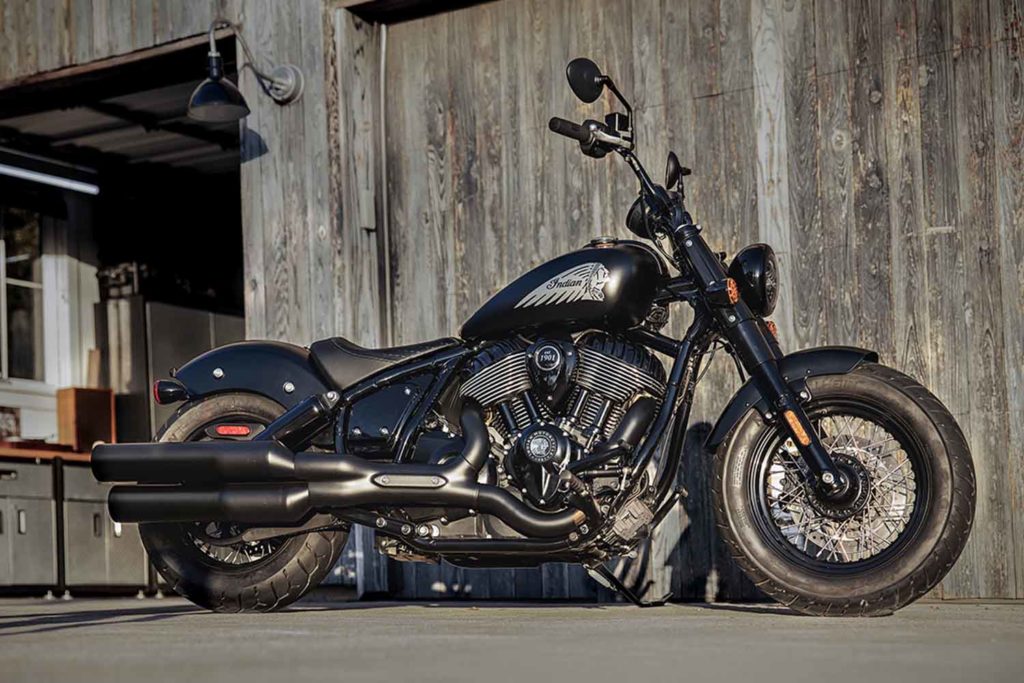
The 2022 Indian Chief Bobber Dark Horse gets the larger, more powerful Thunderstroke 116 V-Twin, the 4-inch display with Ride Command, and standard ABS. Sixteen-inch wheels have chrome spokes and gloss black rims, and nearly everything gets a menacing, blacked-out look. The Chief Bobber Dark Horse comes in Black Smoke, Titanium Smoke, and Sagebrush Smoke, and pricing starts at $18,999.
Read our 2022 Indian Chief Lineup First Look Review
Read our 2022 Indian Super Chief Limited First Ride Review
2022 Indian FTR
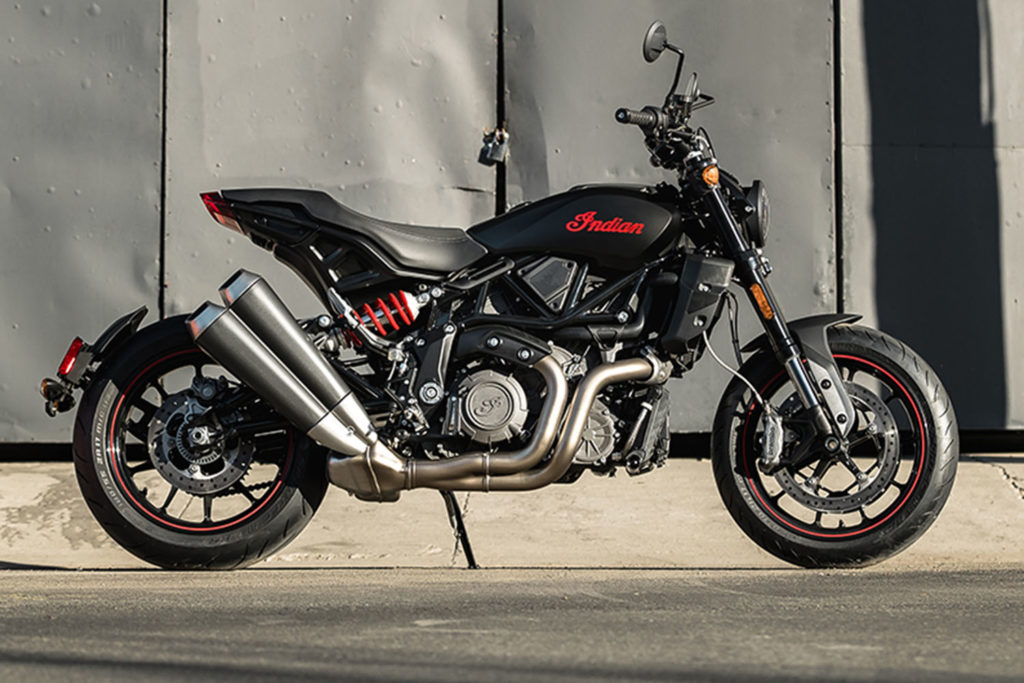
For 2022, Indian‘s FTR lineup includes four models: FTR, FTR S, FTR R Carbon, and FTR Rally. The entire line gets an updated liquid-cooled 1,203cc V-Twin with a revised fuel map for better cold-start performance and throttle response, and rear-cylinder deactivation and revised heat channeling to improve comfort. The street-biased FTR, FTR S, and FTR R Carbon now roll on 17-inch cast-aluminum wheels with Metzeler Sportec rubber, and have less front/rear suspension travel, a lower 32.2-inch seat height, and a narrower ProTaper handlebar. The scrambler-themed FTR Rally is still equipped with wire-spoke 19- and 18-inch wheels and longer suspension travel.
The base-model 2022 Indian FTR (above) has fully adjustable Sachs suspension, with a 43mm inverted fork and a piggyback rear shock. It’s available in Black Smoke, and pricing starts at $12,999.
Read our 2022 Indian FTR Lineup First Look Review
Read our 2022 Indian FTR S First Ride Review
2022 Indian FTR S
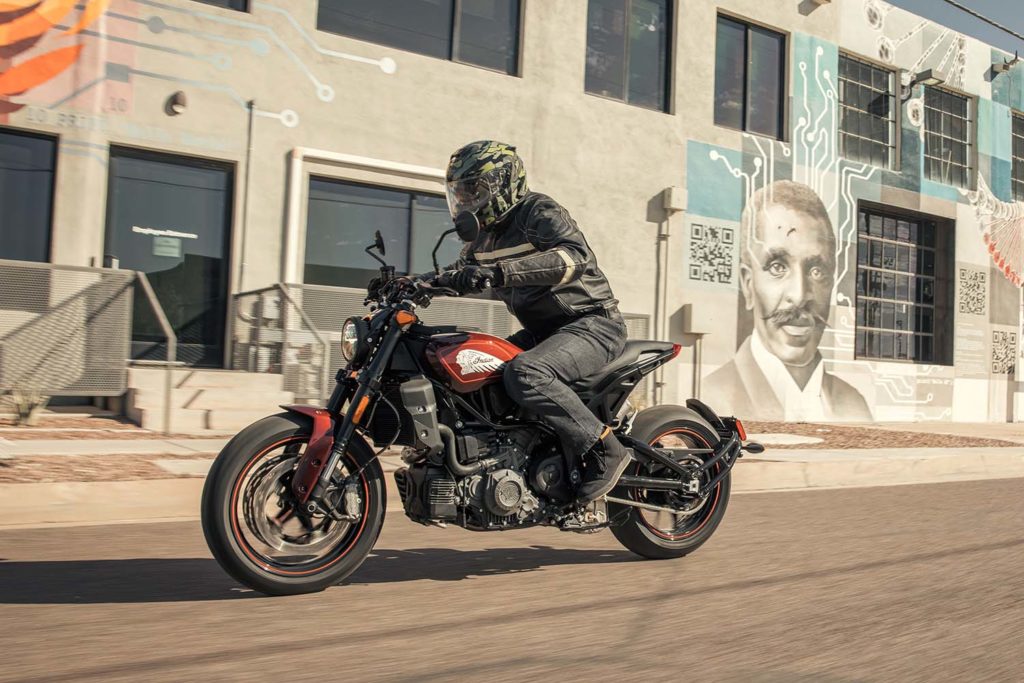
The up-spec 2022 Indian FTR S features a Bluetooth ready 4.3-inch Ride Command touchscreen display, giving riders access to three selectable ride modes and IMU-supported rider aides like cornering ABS, traction control, wheelie control, rear-wheel lift mitigation, and stability control. Standard equipment includes a fast-charging USB port, an Akrapovič slip-on exhaust, and fully adjustable Sachs suspension. It’s available in Maroon Metallic (above) and White Smoke, and pricing starts at $14,999.
Read our 2022 Indian FTR Lineup First Look Review
Read our 2022 Indian FTR S First Ride Review
2022 Indian FTR R Carbon
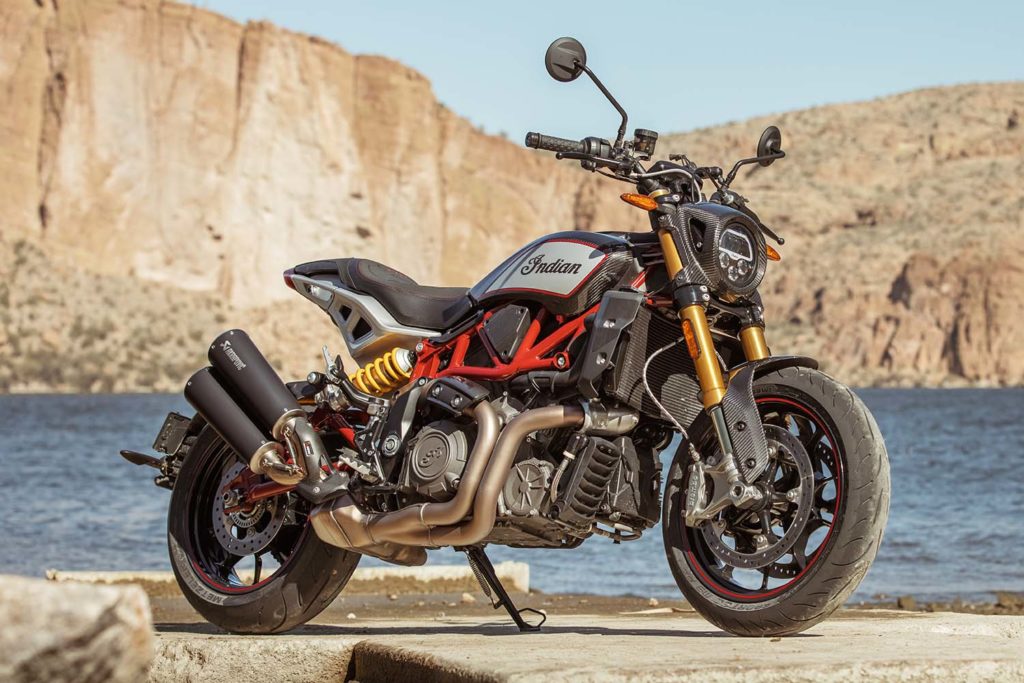
The top-of-the-line 2022 Indian FTR R Carbon stands apart from the crowd with a carbon fiber tank cover, fender, and headlight nacelle. It also has fully adjustable Öhlins suspension, a red frame, silver tailsection, black Akrapovič slip-on exhaust, a premium seat cover, and numbered badging. Pricing starts at $16,999.
Read our 2022 Indian FTR Lineup First Look Review
Read our 2022 Indian FTR S First Ride Review
2022 Indian Super Chief
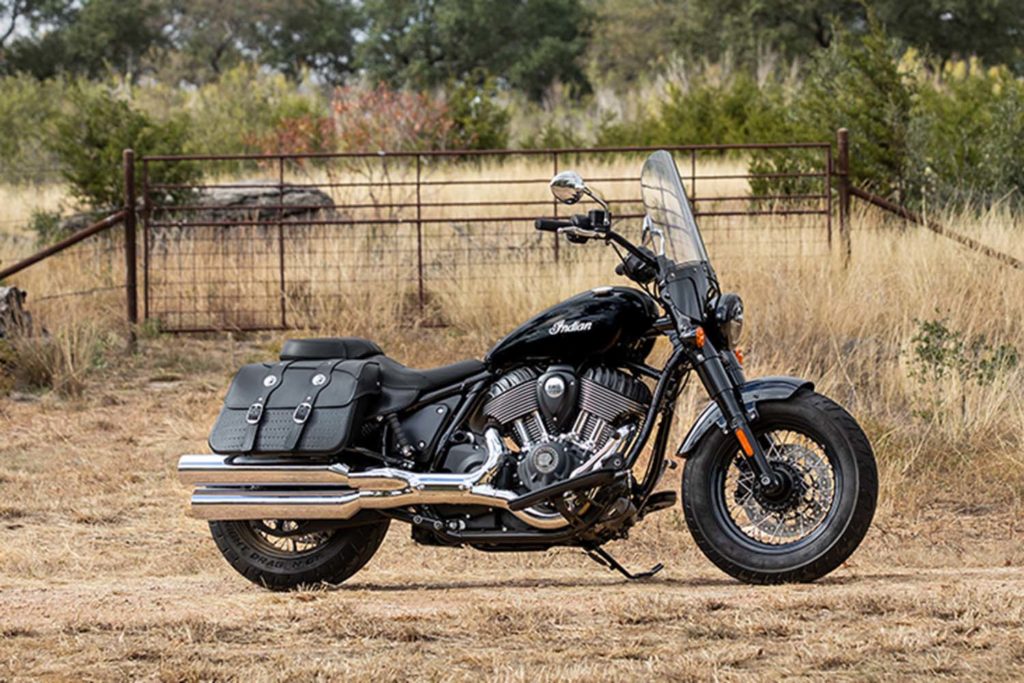
Ready to hit the road for days on end in comfort and style, the 2022 Indian Super Chief features a quick-release windscreen, saddlebags, a touring seat with passenger pad, floorboards, and traditional pullback handlebars. Like the Chief Bobber, the Super Chief is powered by the Thunderstroke 111 and has 16-inch wire wheels, a large headlight bucket with nacelle, fork covers, and optional ABS. Its fully chromed shotgun-style dual exhaust enhances its classic style. It’s available in Black Metallic and Pearl White, and pricing starts at $18,499.
Read our 2022 Indian Chief Lineup First Look Review
Read our 2022 Indian Super Chief Limited First Ride Review
2022 Indian Super Chief Limited
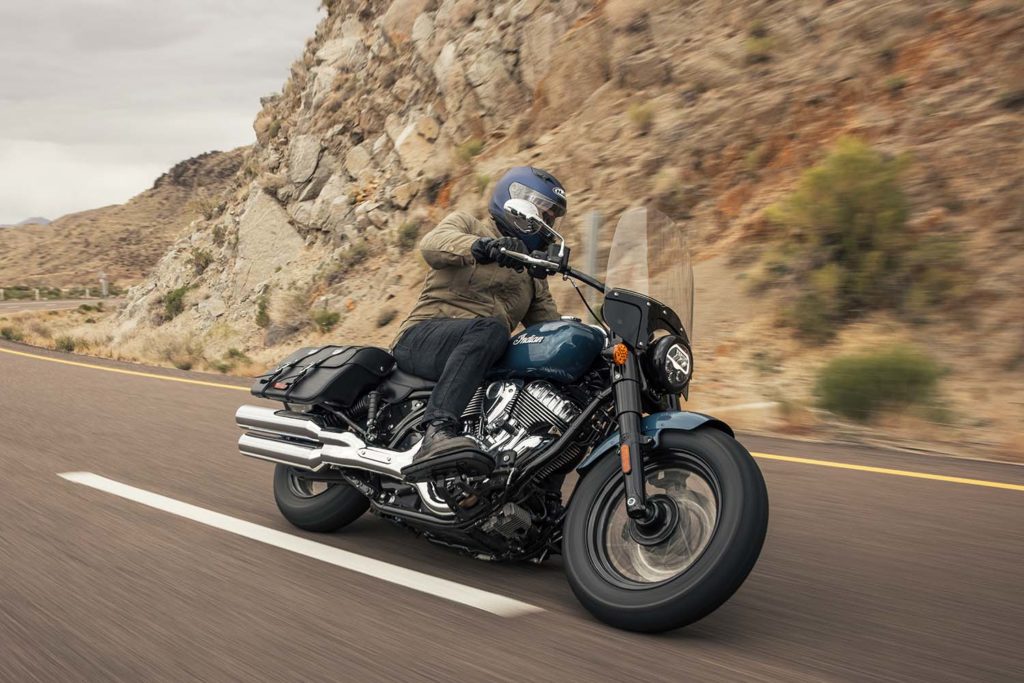
For touring riders who want more power, safety, and sophistication, the 2022 Indian Super Chief Limited features a quick-release windscreen, saddlebags, a touring seat with passenger pad, floorboards, and traditional pullback handlebars like the base-model Super Chief. The Limited adds the Thunderstroke 116 V-twin, standard ABS, and a 4-inch round display with Bluetooth-connected Ride Command. Chrome finishes and rich metallic paint make the Super Chief Limited extra special. It comes in Black Metallic, BlueSlate Metallic, and Maroon Metallic, and pricing starts at $20,999.
Read our 2022 Indian Chief Lineup First Look Review
Read our 2022 Indian Super Chief Limited First Ride Review
2022 Kawasaki KLR650
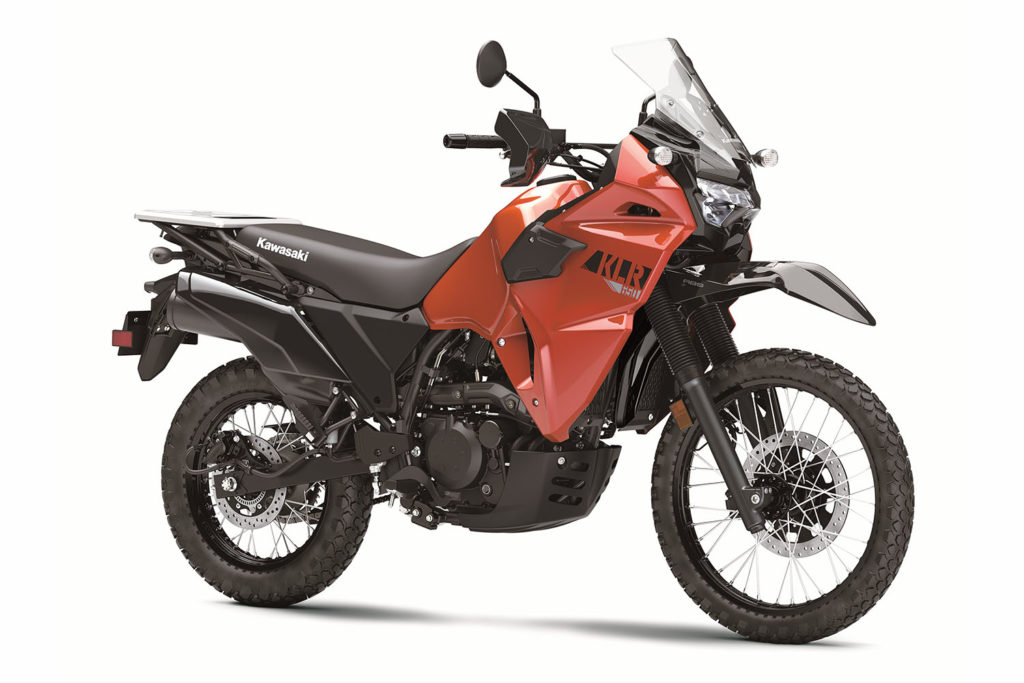
As far as dual-sport motorcycles go, the Kawasaki KLR650 is the stuff of legend. We’re big fans of the KLR, and when it was dropped from Kawasaki’s lineup we wrote a heartfelt requiem for our old friend. After a brief retirement, the 2022 Kawasaki KLR650 returns with some major upgrades, including a fuel-injected (finally!) liquid-cooled 652cc Single that promises increased reliability and fuel efficiency and optional ABS.
Four versions are available:
- KLR650 (MSRP: $6,699; Pearl Sand Khaki and Pearl Lava Orange)
- KLR650 ABS ($6,999; Pearl Sand Khaki)
- KLR650 Traveler ($7,399; Pearl Lava Orange; equipped with factory-installed top case, 12V power outlet, and USB socket)
- KLR650 Adventure (Non-ABS MSRP: $7,699, ABS MSRP: $7,999; Cypher Camo Gray; equipped with factory-installed side cases, LED auxiliary light set, engine guards, tank pad, 12V power outlet and USB socket)
Read our 2022 Kawasaki KLR650 First Look Review
2022 Suzuki GSX-S1000
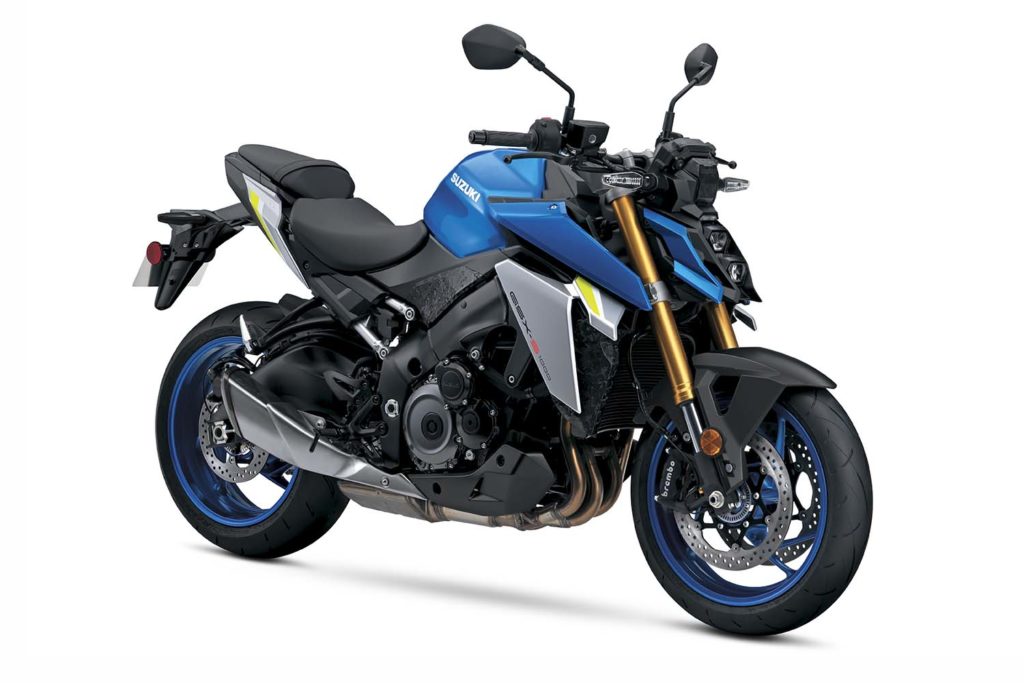
The 2022 Suzuki GSX-S1000 is a naked sportbike powered by an updated version of the liquid-cooled 999cc inline Four from the K5 (2005-2008) GSX-R1000. It gets more aggressive, angular styling with stacked LED headlights and MotoGP-inspired winglets, a new 4-2-1 exhaust system, a new slipper clutch, and the Suzuki Intelligent Ride System. An updated seat design, new wheels shod with new Dunlop Roadsport 2 tires, revised instrumentation and switches, and a new larger fuel tank (5 gallons, up from 4.5) round out the changes. The 2022 Suzuki GSX-S1000 is available in Metallic Triton Blue, Metallic Matte Mechanical Gray, and Glass Sparkle Black. Price is TBD.
Read our 2022 Suzuki GSX-S1000 First Look Review
2022 Suzuki Hayabusa
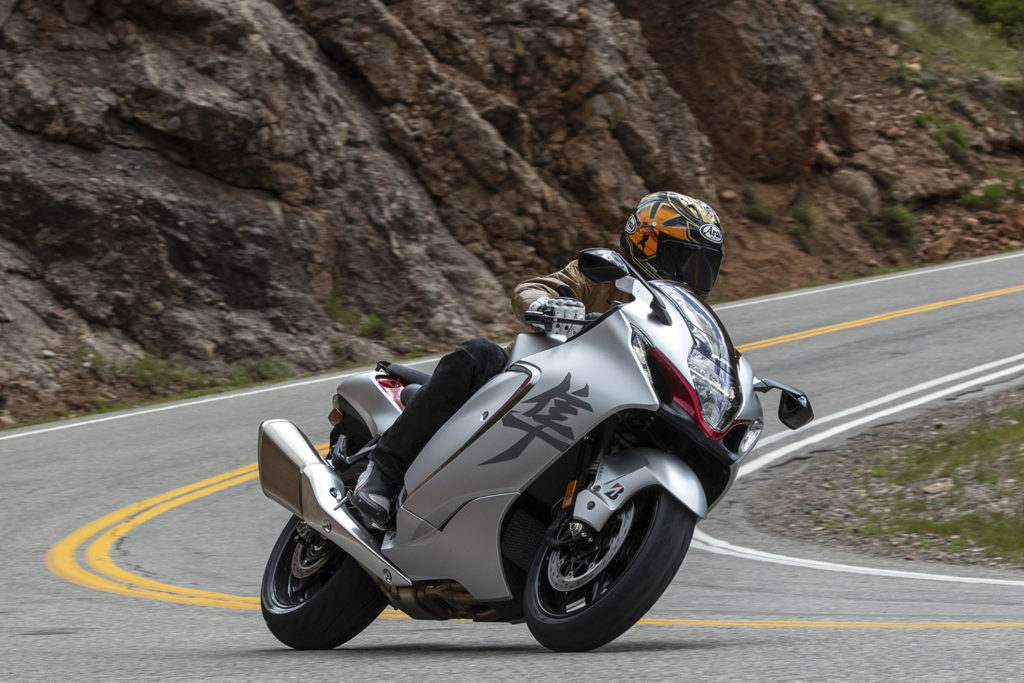
Now in its third generation with its first update since 2008, the legendary 2022 Suzuki Hayabusa gets a thoroughly revised liquid-cooled 1,340cc inline that makes 187 horsepower at 9,750 rpm and a whopping 110 lb-ft of torque at 7,000 rpm. Peak figures are lower, but there’s more grunt in the midrange, and the latest Hayabusa accelerates faster than its predecessor. The Hayabusa has been updated and refined from nose to tail, with new styling and instrumentation, an IMU-enabled Suzuki Intelligent Ride System, and much more. Available in Glass Sparkle Black and Candy Burnt Gold; Metallic Matte Sword Silver and Candy Daring Red; and Pearl Brilliant White and Metallic Matte Stellar Blue, pricing for the 2022 Suzuki Hayabusa starts at $18,599.
Read our 2022 Suzuki Hayabusa First Ride Review
Watch our 2022 Suzuki Hayabusa Video Review
2022 Triumph Bonneville Bobber
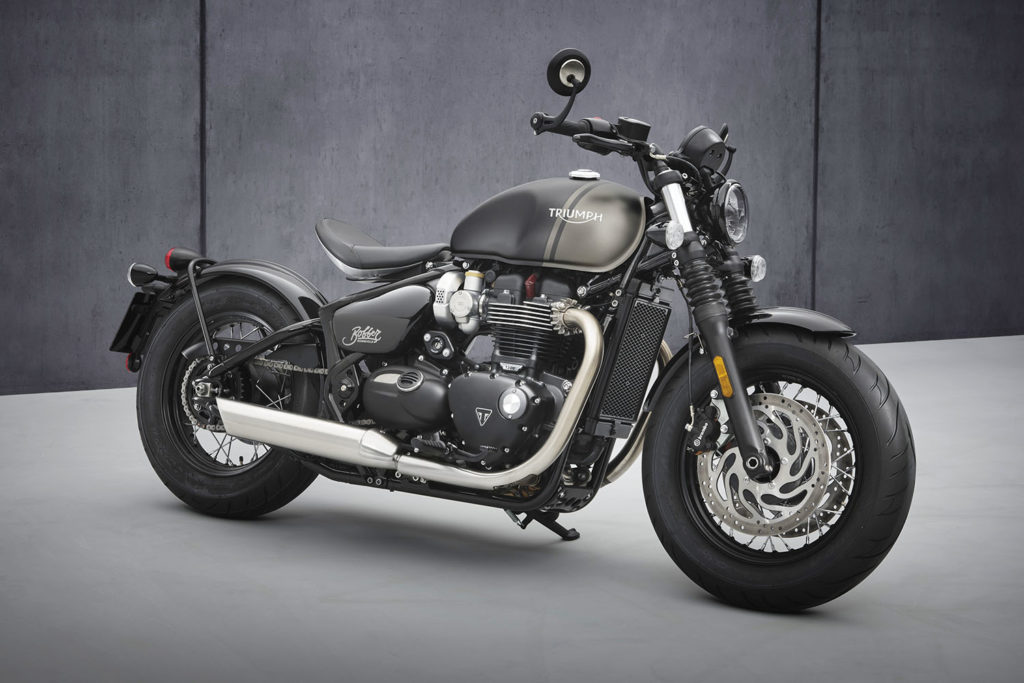
For 2022, Triumph has given performance, technological, and visual updates to its entire Modern Classic lineup, which includes the iconic Bonneville T100, Bonneville T120 and T120 Black, Street Twin and Street Twin Gold Line, Bonneville Bobber, and Speedmaster models.
Triumph has merged the Bobber and up-spec Bobber Black into one single model, the 2022 Triumph Bonneville Bobber. Like other models in the Bonneville lineup, the Bobber’s “high-torque” 1,200cc liquid-cooled parallel-Twin gets a lighter crankshaft and mass-optimized clutch and counterbalancers. It also gets a larger 3-gallon fuel tank, an upgraded fork, a chunky front wheel, dual Brembo front calipers, standard cruise control and ABS, a new LED headlight, and some styling updates. The Bobber is available in Jet Black, Cordovan Red, and Matte Storm Grey and Matte Ironstone two-tone (above). Pricing starts at $13,150.
Read our 2022 Triumph Bonneville Lineup First Look Review
2022 Triumph Bonneville Speedmaster
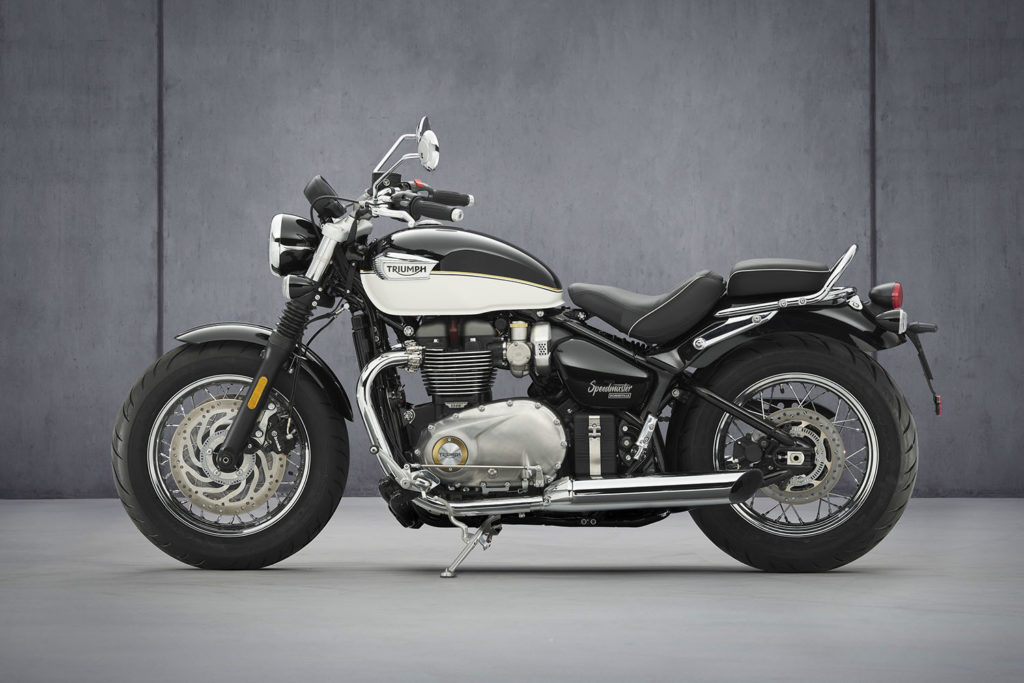
The 2022 Triumph Bonneville Speedmaster gets an updated “high-torque” 1,200cc liquid-cooled parallel-Twin, refined riding modes (Road and Rain), a larger-diameter and higher-spec 47mm Showa cartridge fork, improved rider and passenger seating, and updated instrumentation. The Speedmaster is available in Jet Black, Red Hopper, and two-tone Fusion White and Sapphire Black with hand-painted twin coach lines (above). Pricing starts at $13,150.
Read our 2022 Triumph Bonneville Lineup First Look Review
2022 Triumph Bonneville T100
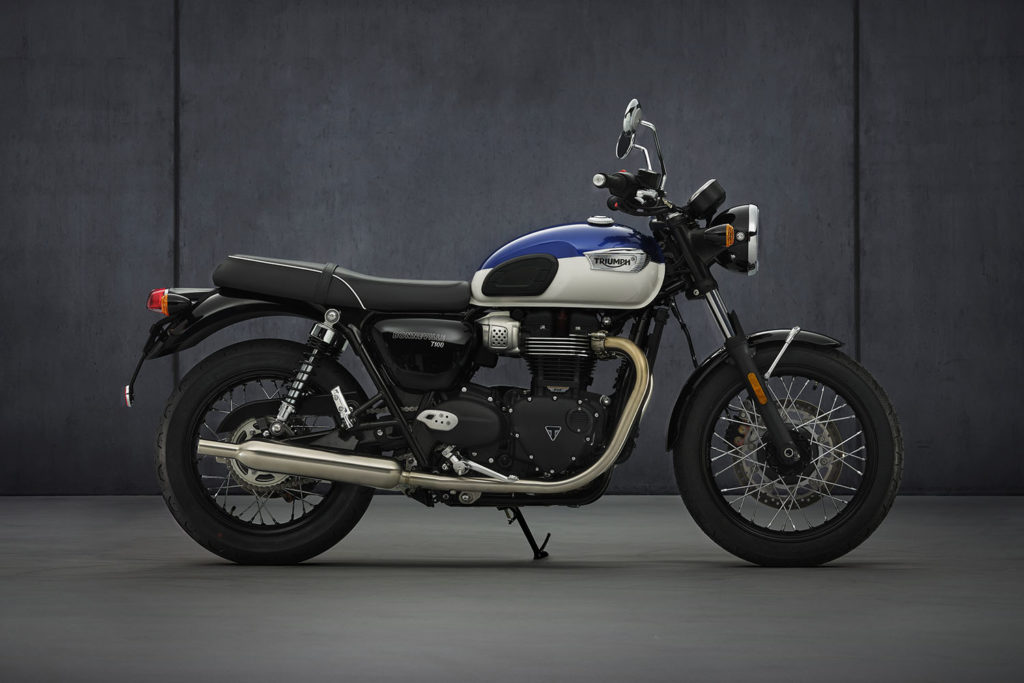
The 2022 Triumph Bonneville T100’s Euro 5-compliant “high-torque” 900cc parallel-Twin boasts an additional 10 ponies, bringing its claimed figures up to 64 horsepower at 7,400 rpm and 59 lb-ft of torque at 3,750 rpm. The engine also gets a lighter crankshaft, mass-optimized clutch and counterbalancers, a magnesium cam cover, and a thin-walled clutch cover, which together reduce curb weight by 8 pounds. The T100 also gets an upgraded fork, new instrumentation, and some styling tweaks. The Bonneville T100 is available in Jet Black, two-tone Lucerne Blue and Fusion White (above), and two-tone Carnival Red and Fusion White. Pricing starts at begins at $10,500.
Read our 2022 Triumph Bonneville Lineup First Look Review
2022 Triumph Bonneville T120 / T120 Black
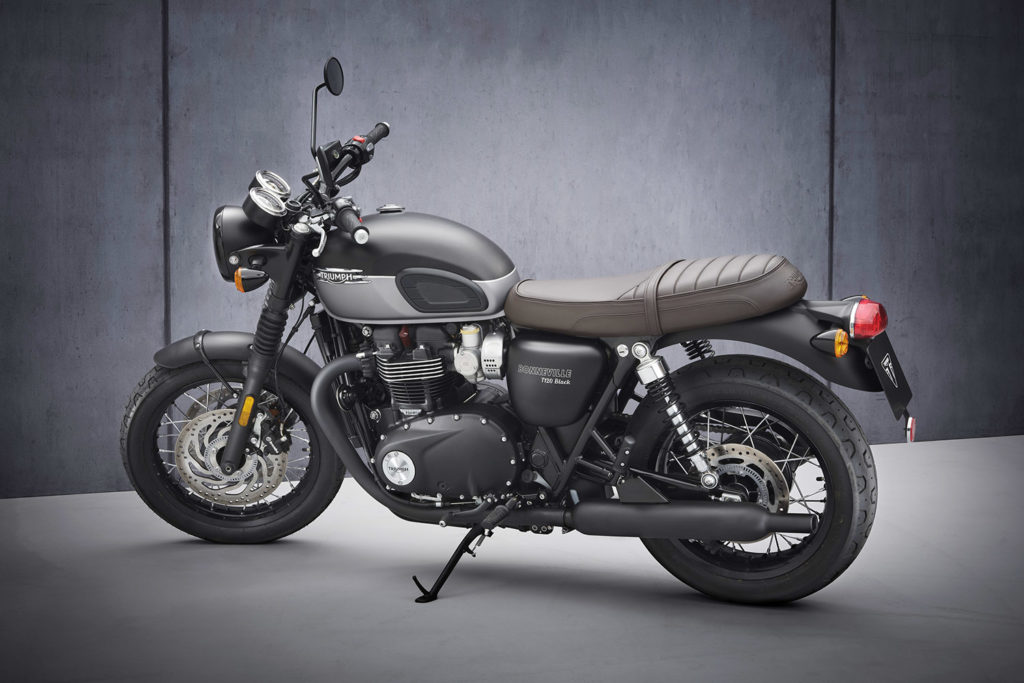
The 2022 Triumph Bonneville T120 and T120 Black get engine updates, less weight (520 pounds wet, down 15.5), and other updates. The “high-torque” 1,200cc liquid-cooled parallel-Twin gets a lighter crankshaft and mass-optimized clutch and counterbalancers. The big Bonnies get cruise control, new Brembo front calipers, refined riding modes (Road and Rain), and aesthetic upgrades. Pricing for the 2022 Triumph Bonneville T120 and T120 Black (above) starts at $12,050.
Read our 2022 Triumph Bonneville Lineup First Look Review
2022 Triumph Rocket 3 Black
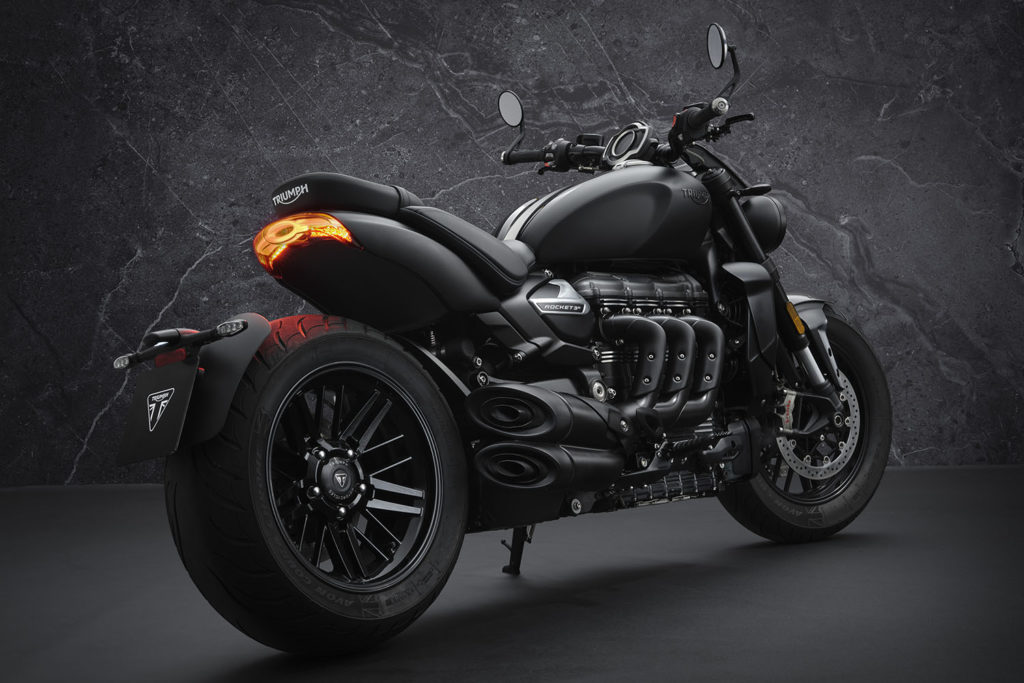
Limited to 1,000 units worldwide, the 2022 Triumph Rocket 3 R Black gives the 2,458cc mega cruiser an even leaner-and-meaner look. It features an aggressive all-black colorway that focuses on matte finishes, darkened tank badging, a carbon fiber front fender, and blacked-out components from nose-to-tail, and it comes with a certificate of authenticity. Pricing starts at $23,700.
2022 Triumph Rocket 3 R Black and Rocket 3 GT Triple Black Announced
2022 Triumph Rocket 3 GT Triple Black
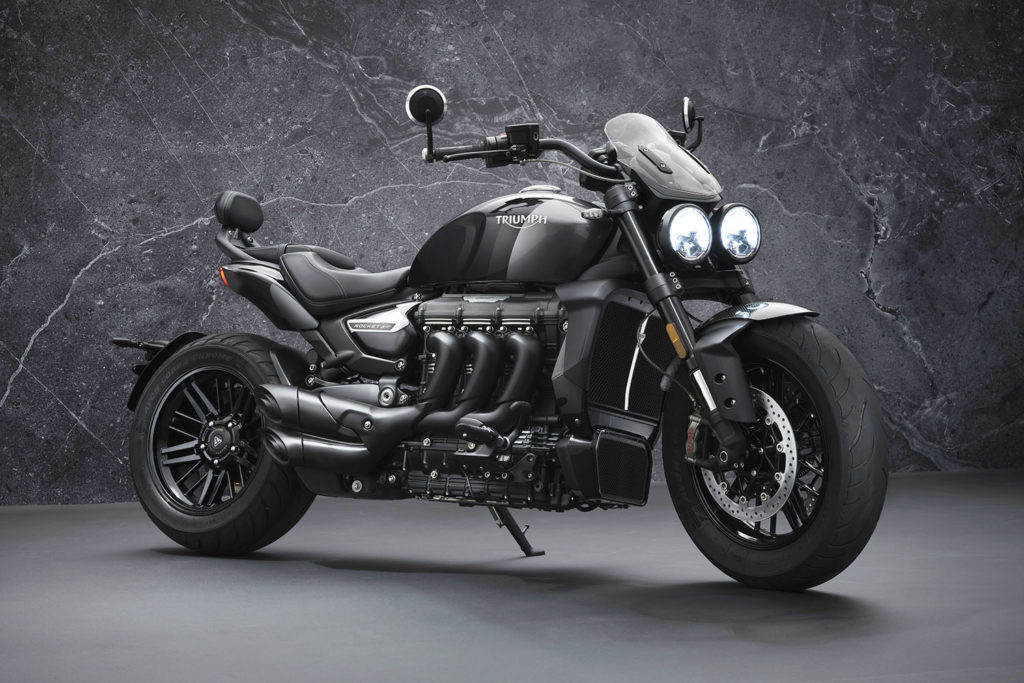
Also limited to 1,000 units worldwide, the 2022 Triumph Rocket 3 GT Triple Black applies the dark treatment to the touring version, with a high-gloss three-shade paint scheme, a carbon fiber front fender, and blacked-out components. It comes with a certificate of authenticity that lists each motorcycle’s VIN. And its enormous 2,458cc inline Triple produces 167 horsepower at 6,000 rpm and a 163 lb-ft of torque at 4,000 rpm. Pricing starts at $24,400.
2022 Triumph Rocket 3 R Black and Rocket 3 GT Triple Black Announced
2022 Triumph Scrambler 1200 XC
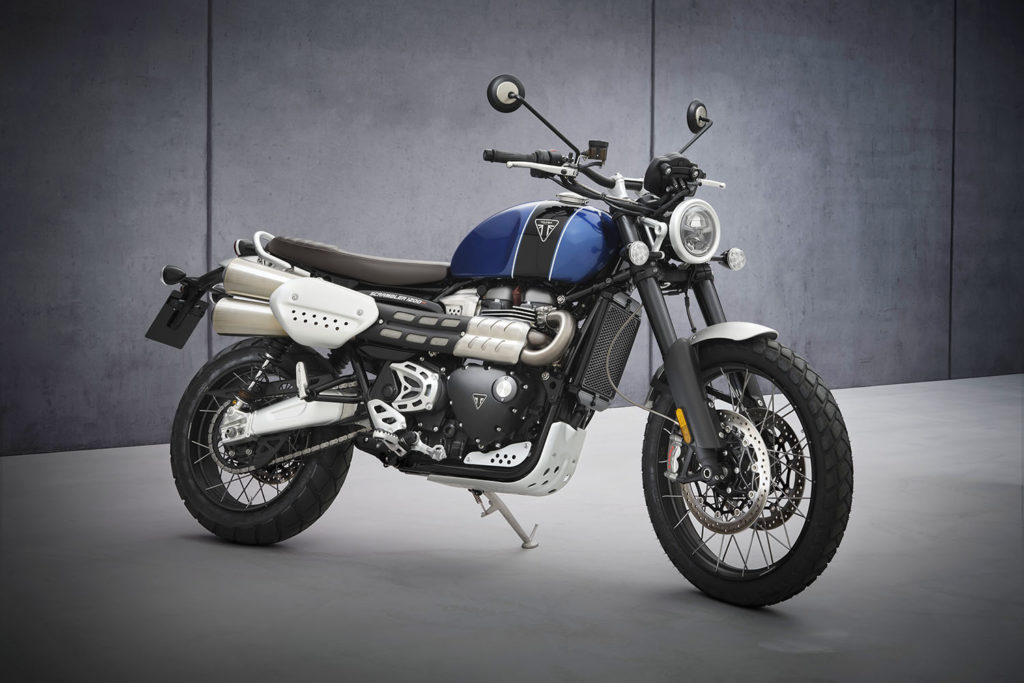
Also built on Triumph‘s Bonneville platform, the 2022 Scrambler 1200 XC, Scrambler 1200 XE, and Scrambler 1200 Steve McQueen Edition are powered by a “high power” version of Triumph’s liquid-cooled, 1,200cc parallel-Twin that’s been updated to meet Euro 5 emissions regulations, which includes a revised exhaust system that offers improved heat distribution. With a dedicated Scrambler tune, it makes 89 horsepower at 7,250 rpm and 81 lb-ft of torque at 4,500 rpm. All three models have a 21-inch front wheel, side-laced tubeless wheels, and nearly 10 inches of suspension travel.
The 2022 Triumph Scrambler 1200 XC is available in Sapphire Black ($14,000), two-tone Cobalt Blue and Jet Black ($14,500, above), and two-tone Matte Khaki Green and Matte Black ($14,500).
2022 Triumph Scrambler 1200 XC, XE and Steve McQueen Edition First Look Review
2022 Triumph Scrambler 1200 XE / Steve McQueen Edition
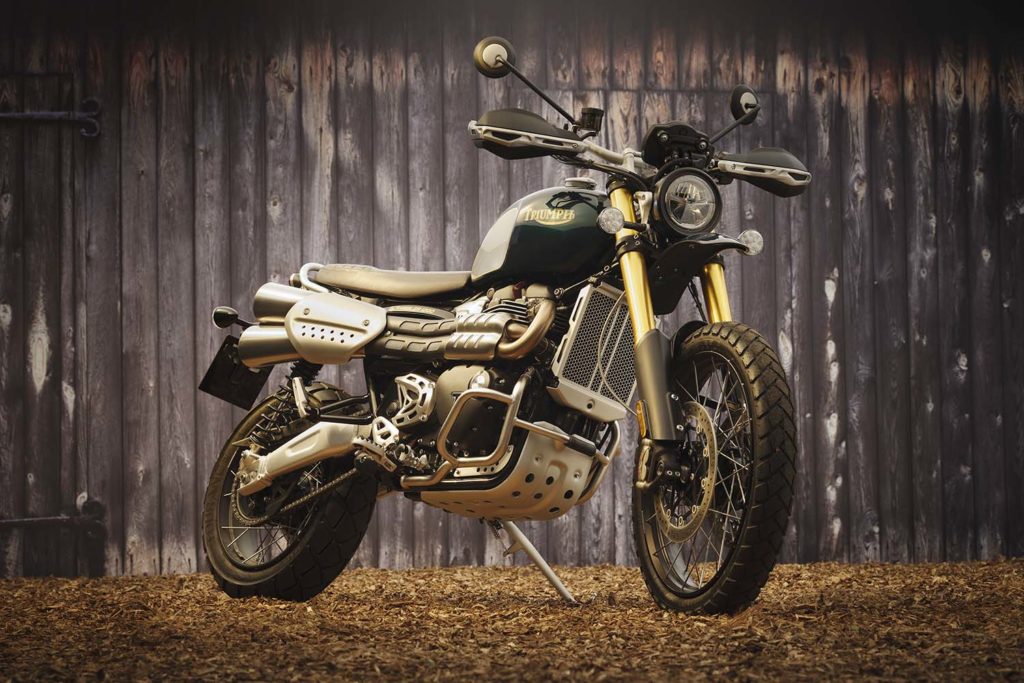
Receiving the same updates as the XC, the higher-spec 2022 Triumph Scrambler 1200 XE adds an Off-Road Pro mode and cornering-optimized ABS and traction control. It’s available in Sapphire Black ($15,400), two-tone Cobalt Blue and Jet Black ($15,900), and two-tone Matte Khaki Green and Matte Black ($15,900).
Limited to 1,000 in individually numbered units worldwide and based on the XE, the 2022 Triumph Scrambler 1200 Steve McQueen Edition (above) honors the King of Cool with unique Steve McQueen branding on the tank and handlebar clamp, an exclusive Competition Green custom paint scheme, premium Scrambler accessories fitted as standard, and a certificate of authenticity with signatures from Triumph’s CEO, Nick Bloor, and Chad McQueen. Pricing starts at $16,400.
2022 Triumph Scrambler 1200 XC, XE and Steve McQueen Edition First Look Review
2022 Triumph Speed Twin
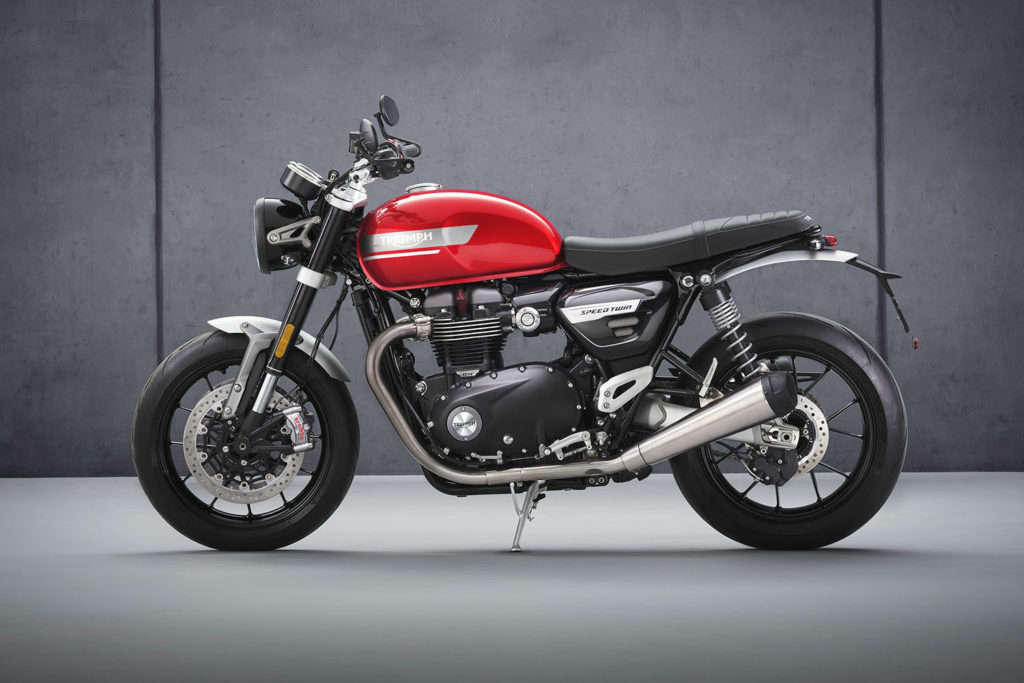
The 2022 Triumph Speed Twin gets similar engine updates as the rest of the Bonneville family, and its “high power” liquid-cooled, 1,200cc parallel-twin makes 98.6 horsepower at 7,250 rpm and 83 lb-ft of torque at 4,250 rpm. To improve handling, the Speed Twin gets a higher-spec Marzocchi inverted cartridge fork, Brembo M50 monoblock calipers, lighter cast aluminum 12-spoke wheels, and Metzeler Racetec RR tires. Styling has also been refreshed. The Speed Twin is available in Red Hopper (above), Matte Storm Grey, and Jet Black. Pricing starts at $12,500.
Read our 2022 Triumph Speed Twin First Look Review
2022 Triumph Street Scrambler
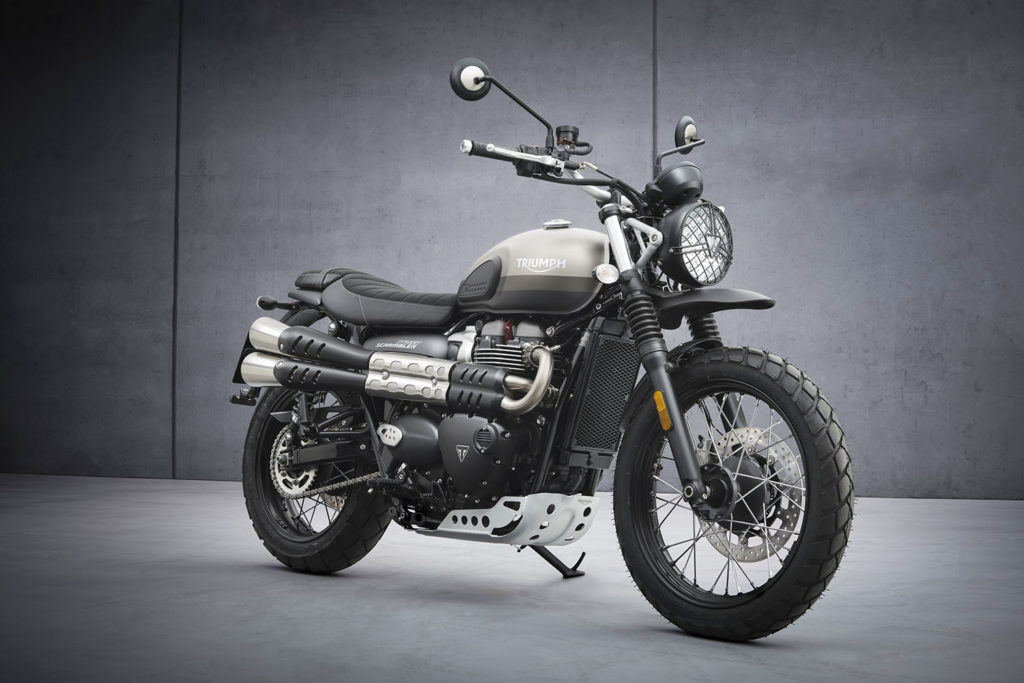
As with other Bonneville models, the 2022 Triumph Street Scrambler’s liquid-cooled 900cc parallel-twin has been updated to meet Euro 5 emissions yet it still delivers 64 horsepower at 7,250 rpm and 59 lb-ft of torque at 3,250 rpm. Styling updates include a new side panel with aluminum number board, a new heel guard, new brushed aluminum headlight brackets, new adventure-oriented seat material, new throttle body finishers, and new paint schemes. The Street Scrambler is available in Jet Black, Urban Grey, and two-tone Matte Khaki and Matte Ironstone; pricing starts at $11,000.
Limited to 775 units worldwide, the Scrambler Sandstorm Edition (above) has a unique paint scheme, premium accessories (high front fender, tail tidy, sump guard, headlight grille, and rubber knee pads on the tank), and a certificate of authenticity personalized with the bike’s VIN. Pricing starts at $11,750.
Read our 2022 Triumph Street Scrambler First Look Review
2022 Triumph Street Twin / Street Twin Gold Line
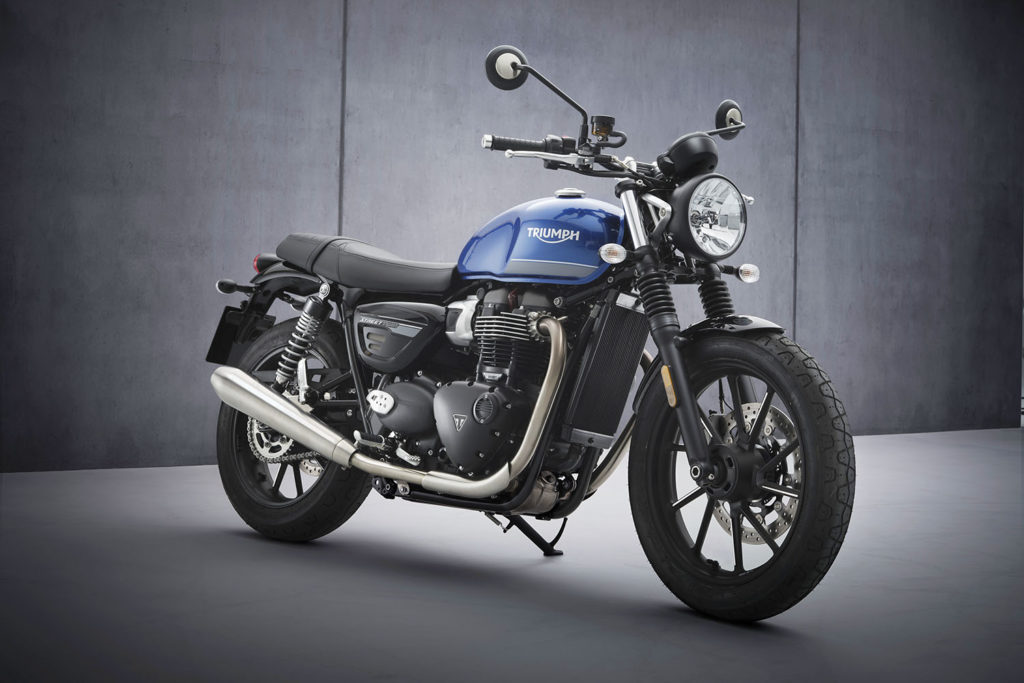
Heralded as Triumph’s best-selling Modern Classic, the 2022 Triumph Street Twin gets an updated engine, new cast wheels, and updated styling. Featuring the same updated “high-torque” 900cc liquid-cooled parallel-twin as the T100, the Street Twin now boasts 64 horsepower at 7,500 rpm and 59 lb-ft of torque at 3,800 rpm. New 18- and 17-inch 10-spoke cast-aluminum wheels are fitted with Pirelli Phantom Sportcomp tires. The Street Twin is available in Cobalt Blue (above), Matte Ironstone, and Jet Black. Pricing starts at $9,400.
Limited to 1,000 units worldwide, the 2022 Triumph Street Twin Gold Line features a Matte Sapphire Black colorway with a Triumph heritage logo and hand-painted gold lining. Pricing starts at $10,150.
Read our 2022 Triumph Bonneville Lineup First Look Review
2022 Yamaha YZF-R7
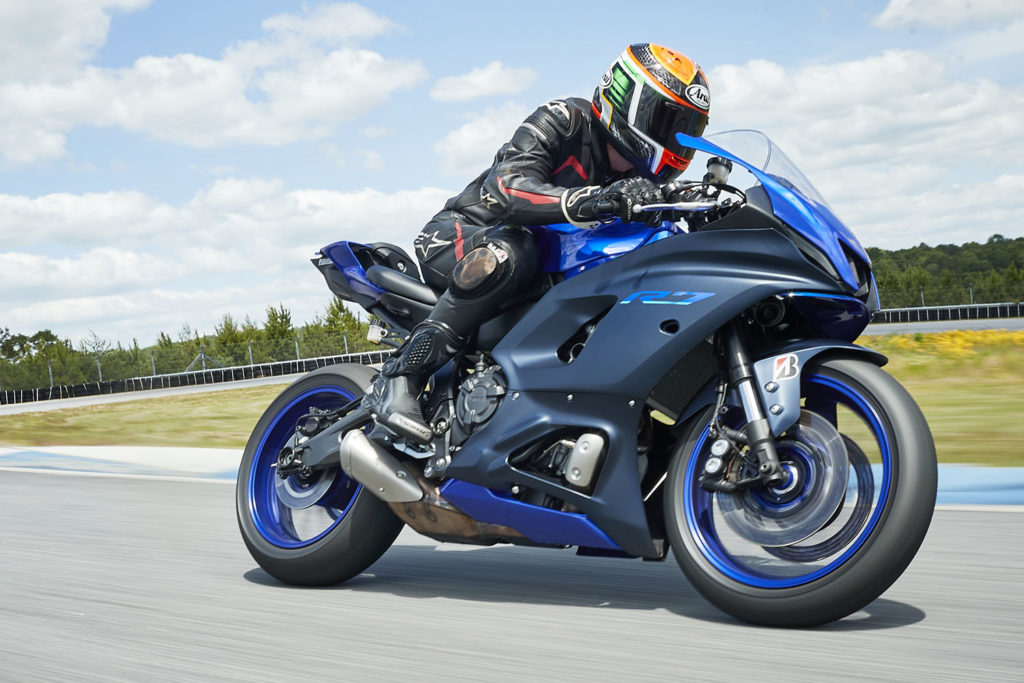
The all-new 2022 Yamaha YZF-R7 is a 689cc sportbike based on the MT-07 platform, slotting between the YZF-R3 and YZF-R1. It features an slip/assist clutch, an optional quickshifter, chassis upgrades, and all-new bodywork. The R7 delivers track-ready performance within reach, with an MSRP of $8,999. Available in Team Yamaha Blue (above) and Performance Black.
Read our 2022 Yamaha YZF-R7 First Ride Review
Watch our 2022 Yamaha YZF-R7 Video Review
The post 2022 Motorcycle Buyers Guide: New Street Motorcycles first appeared on Rider Magazine.
Source: RiderMagazine.com

